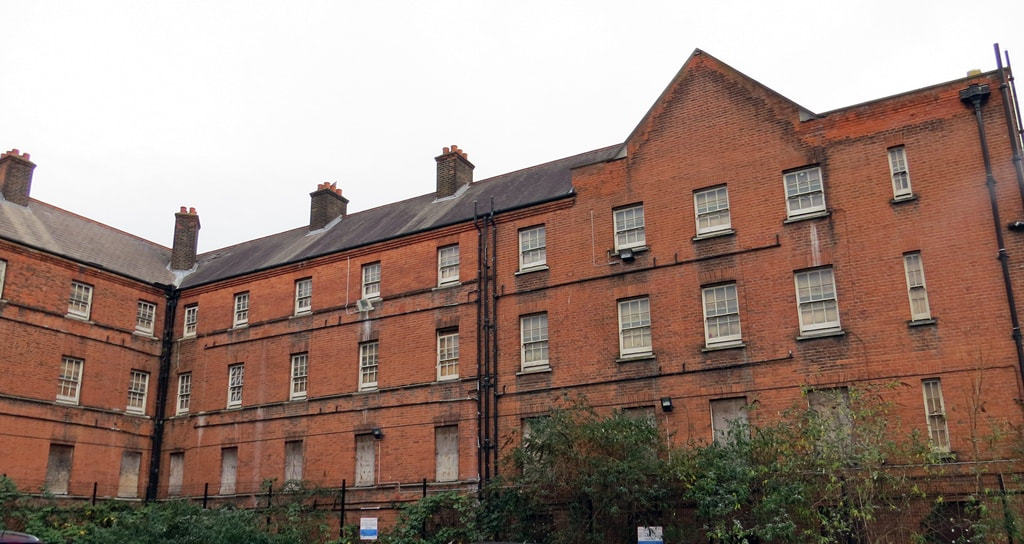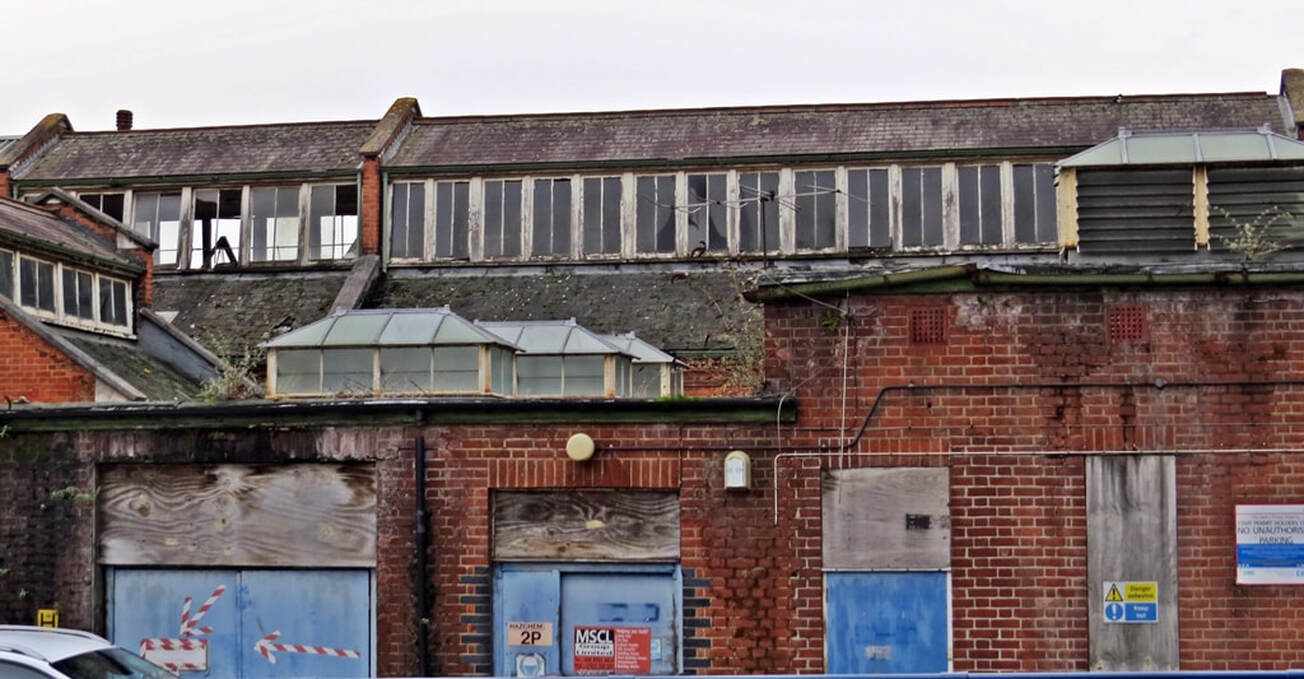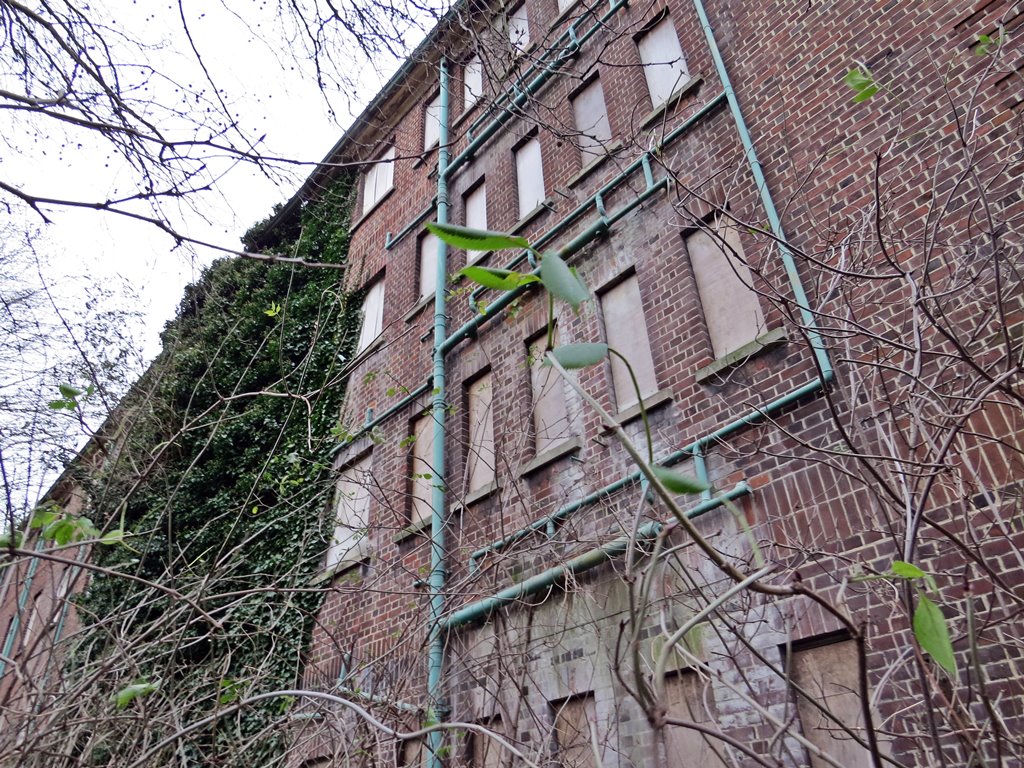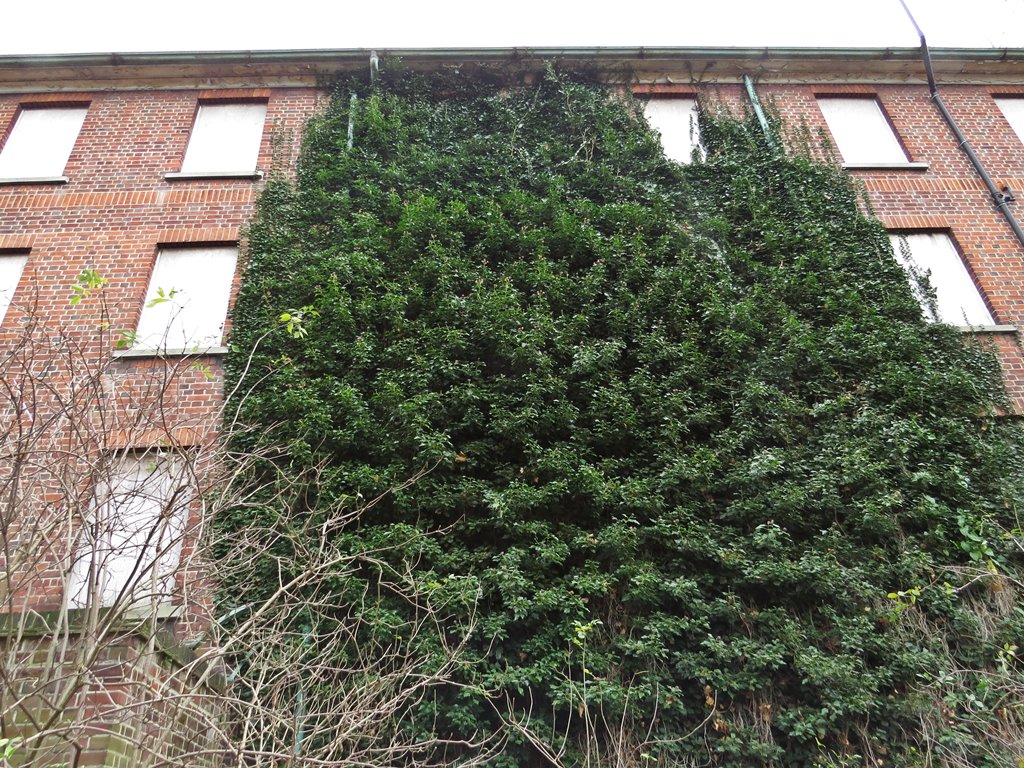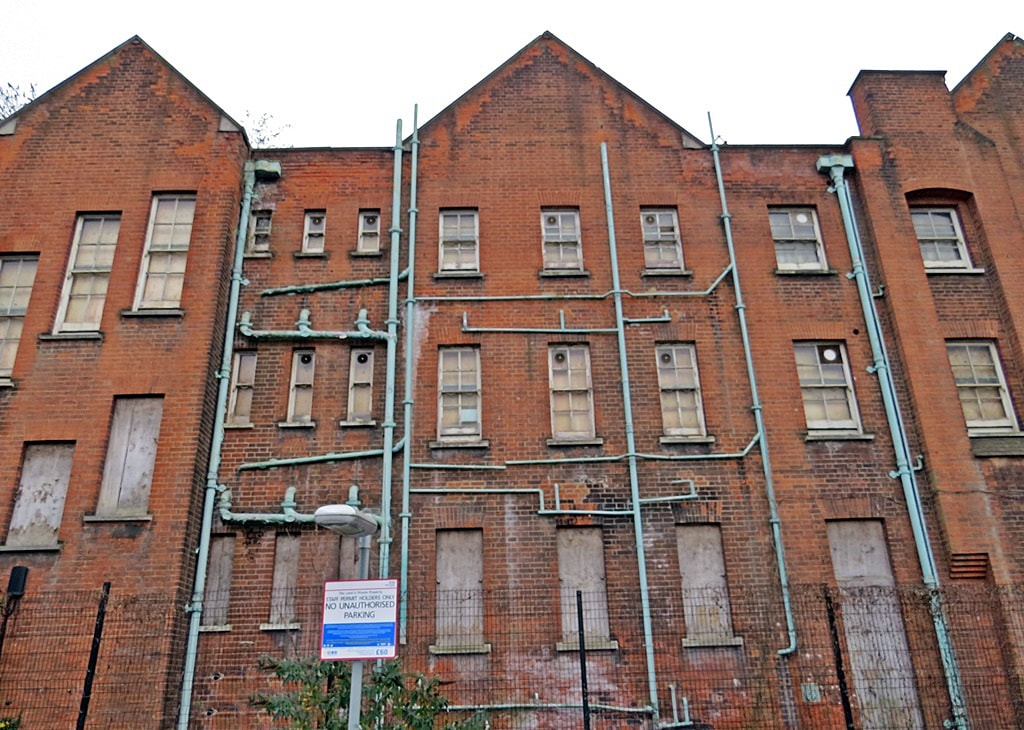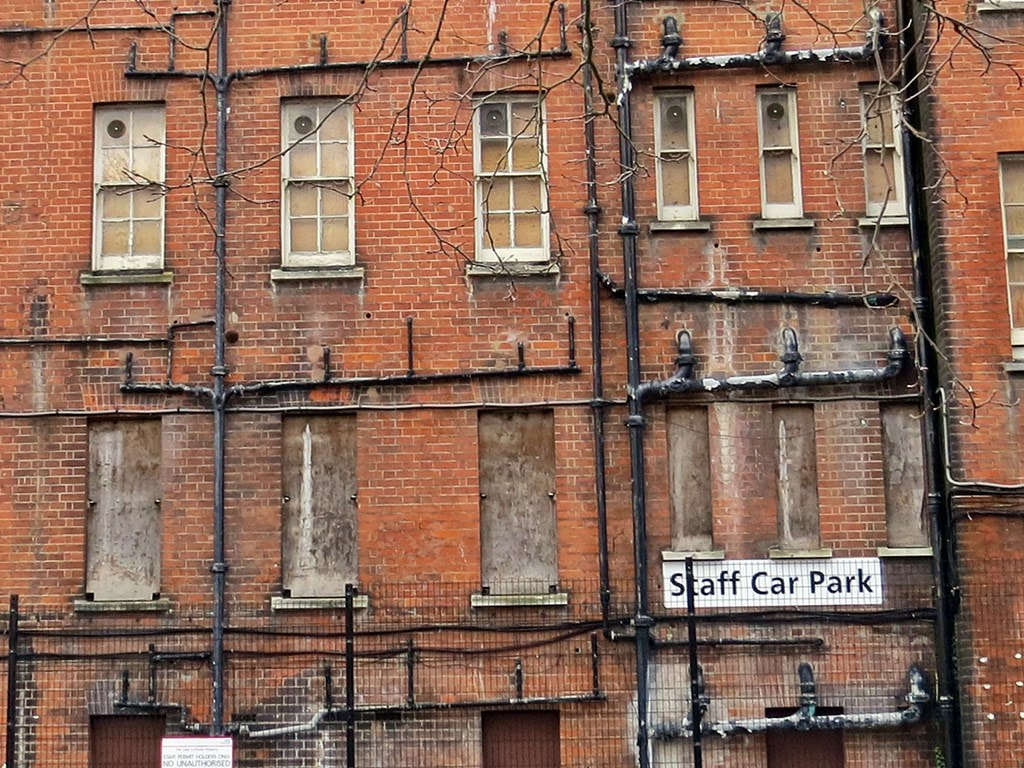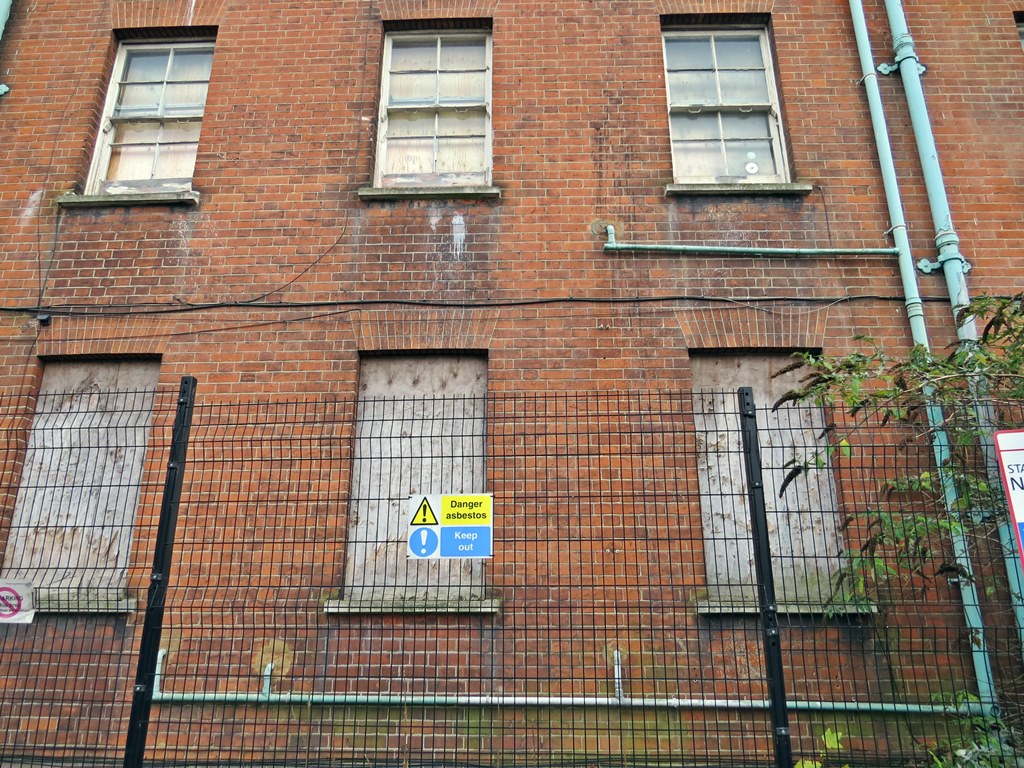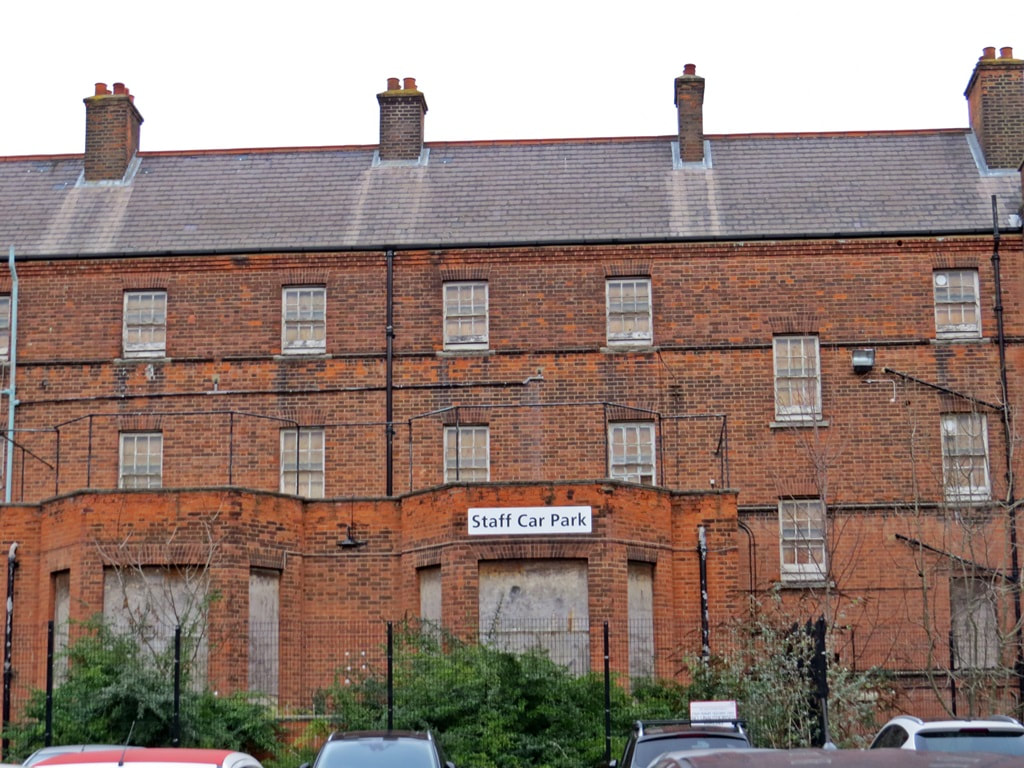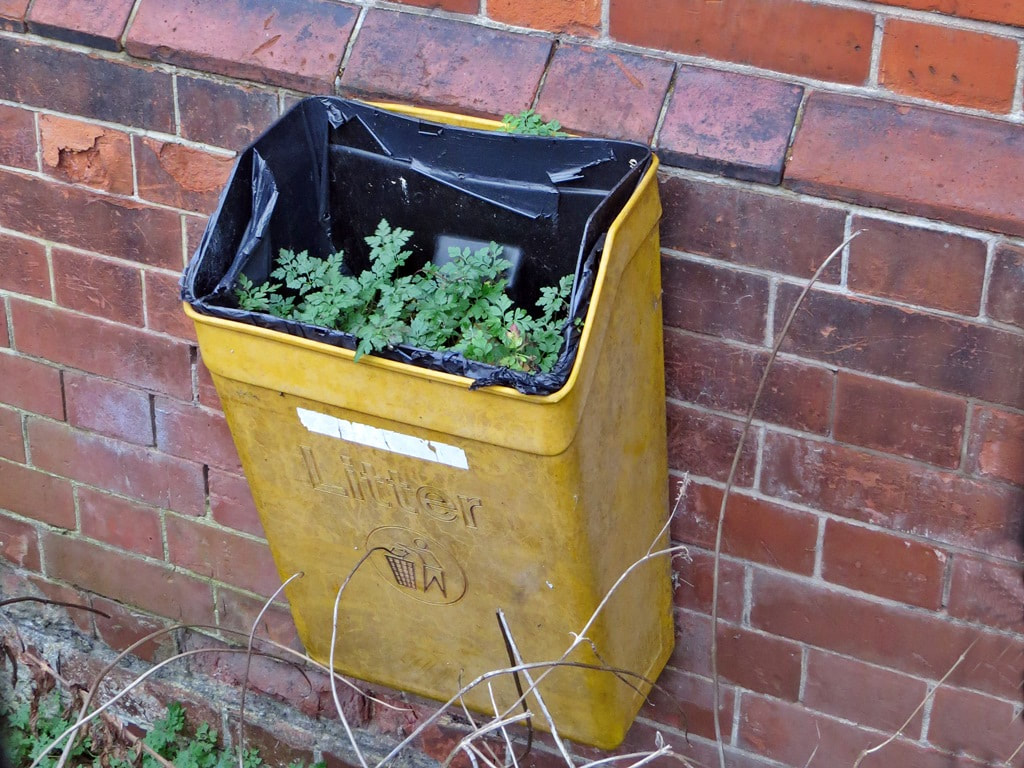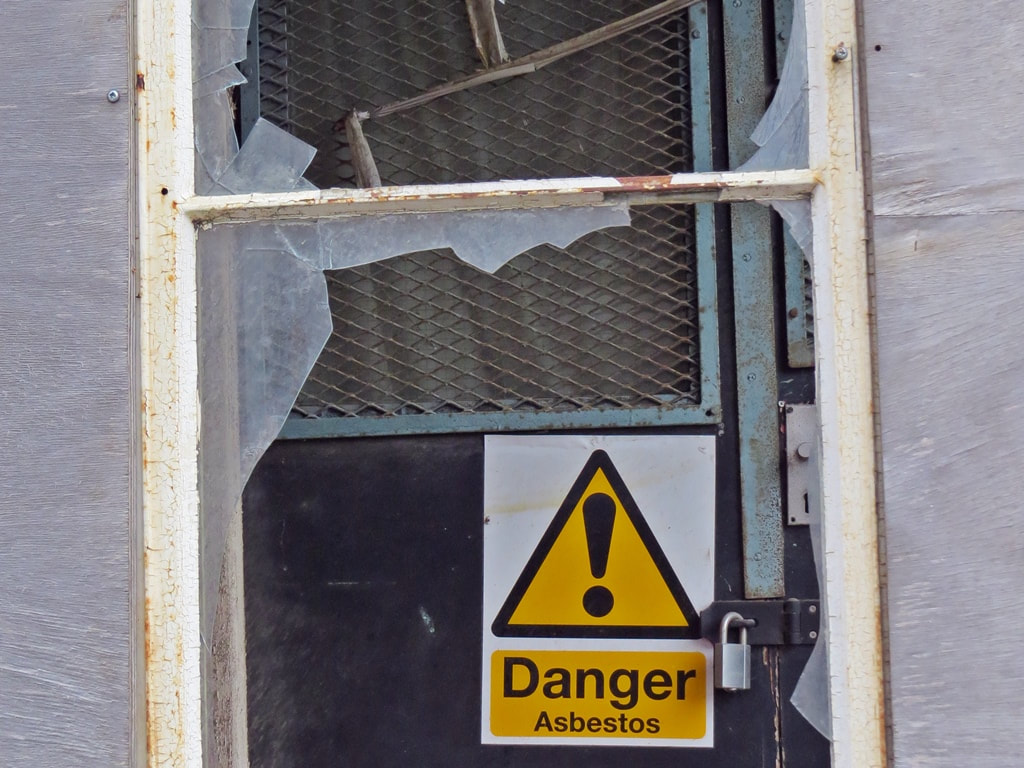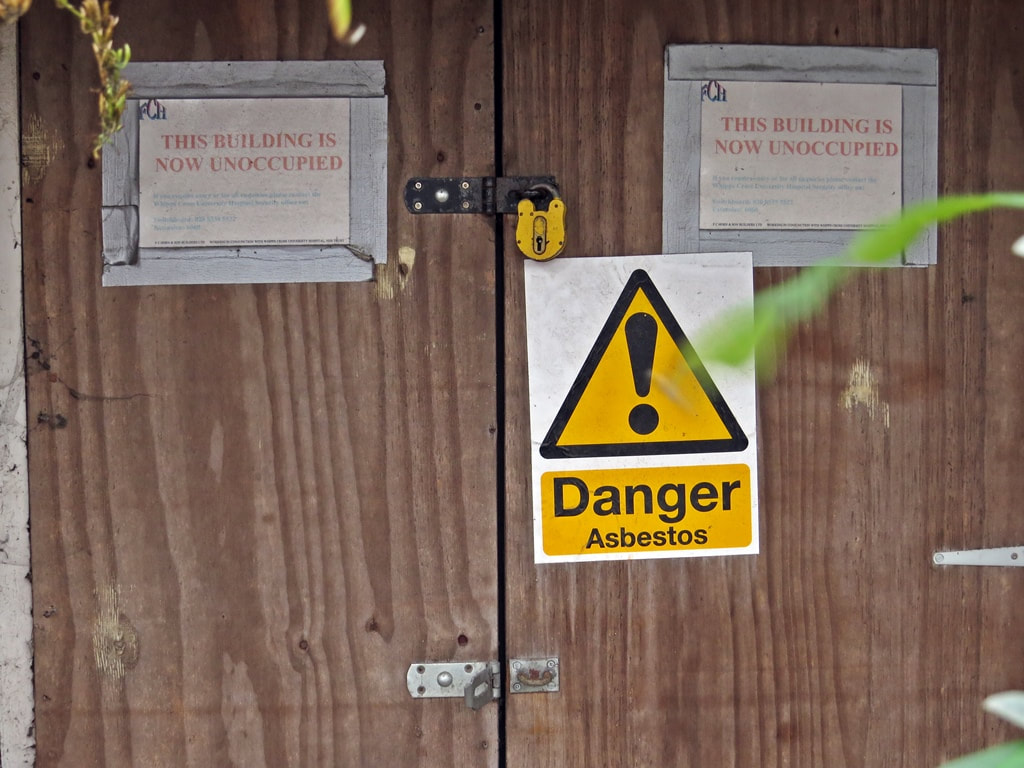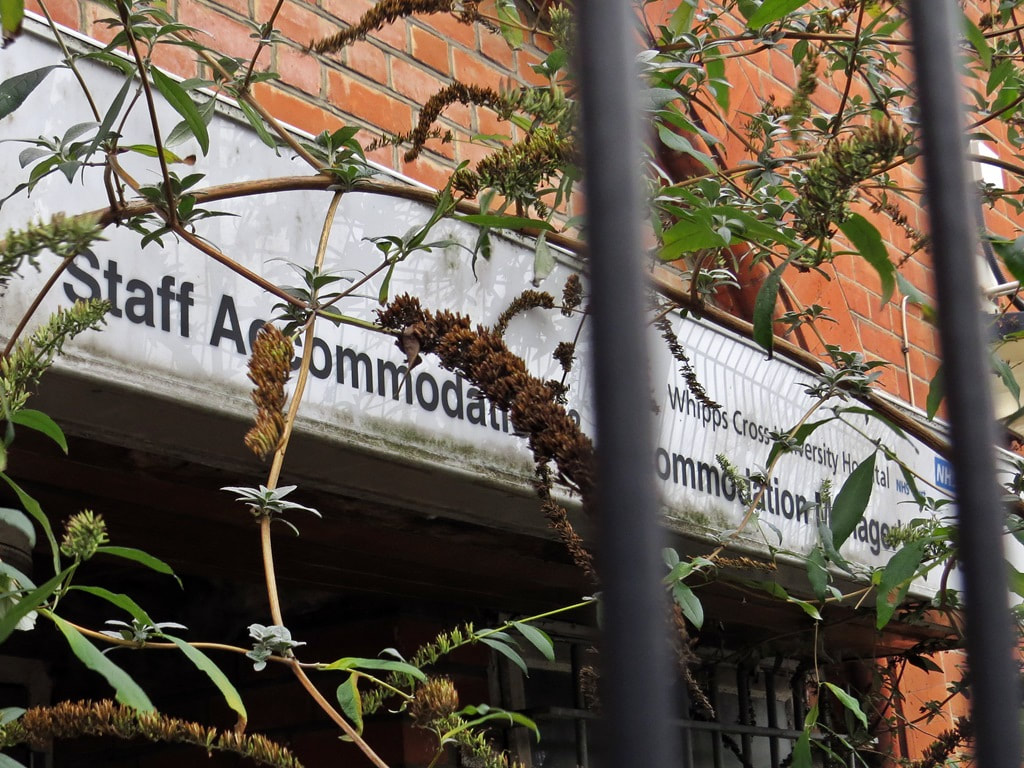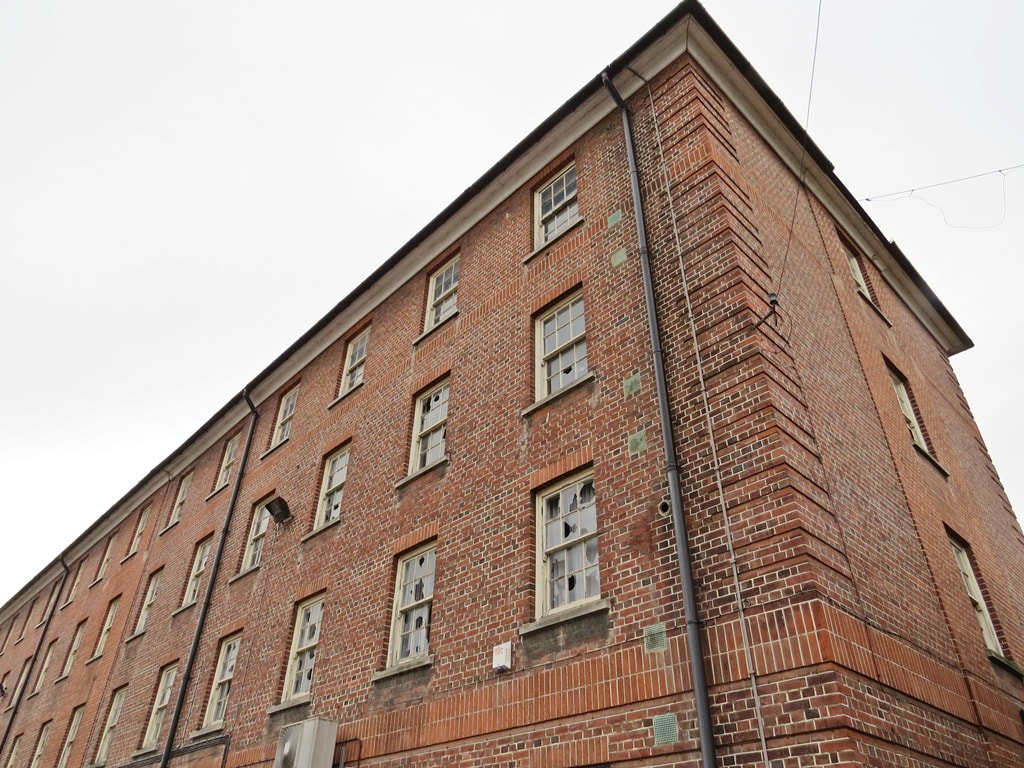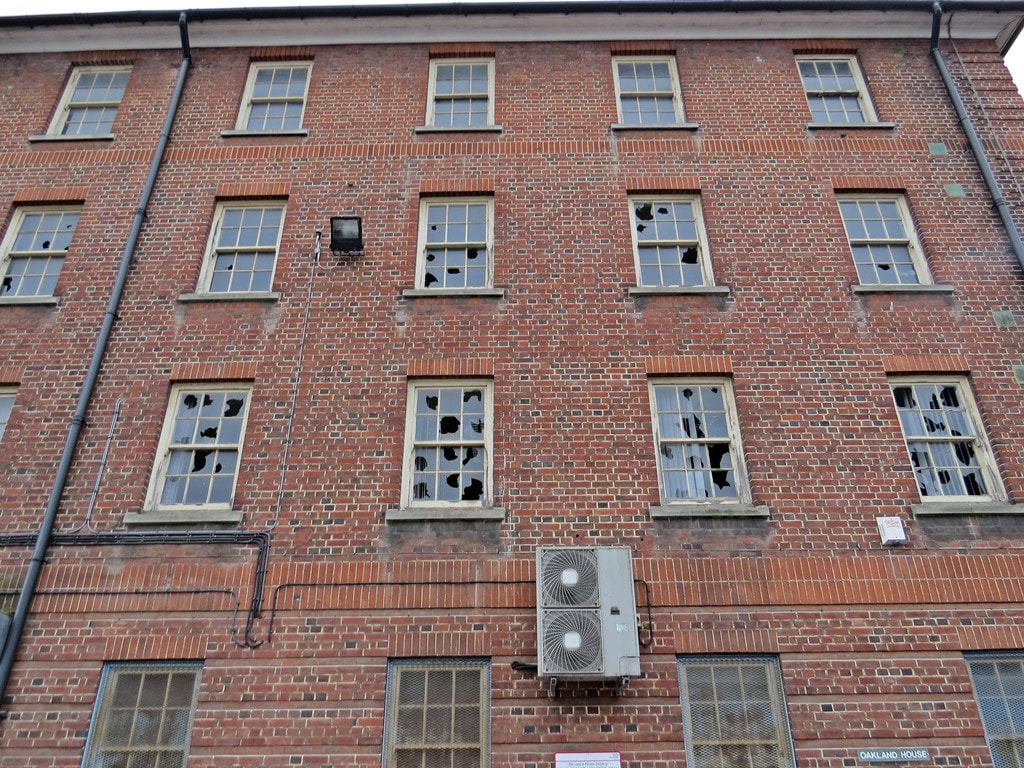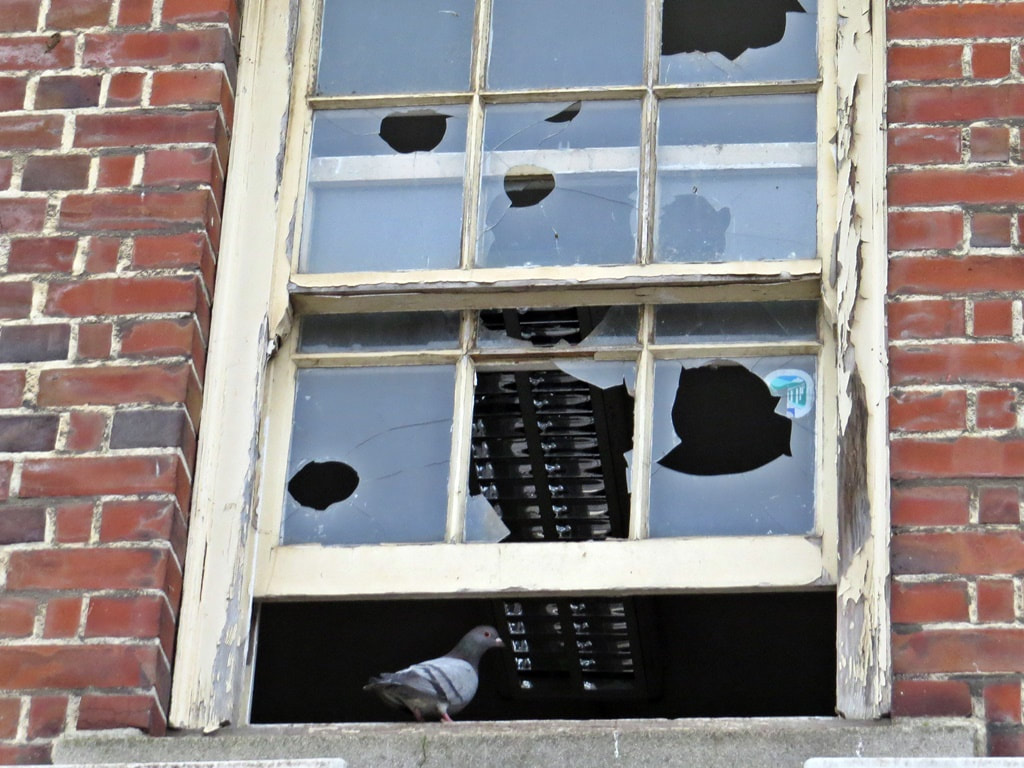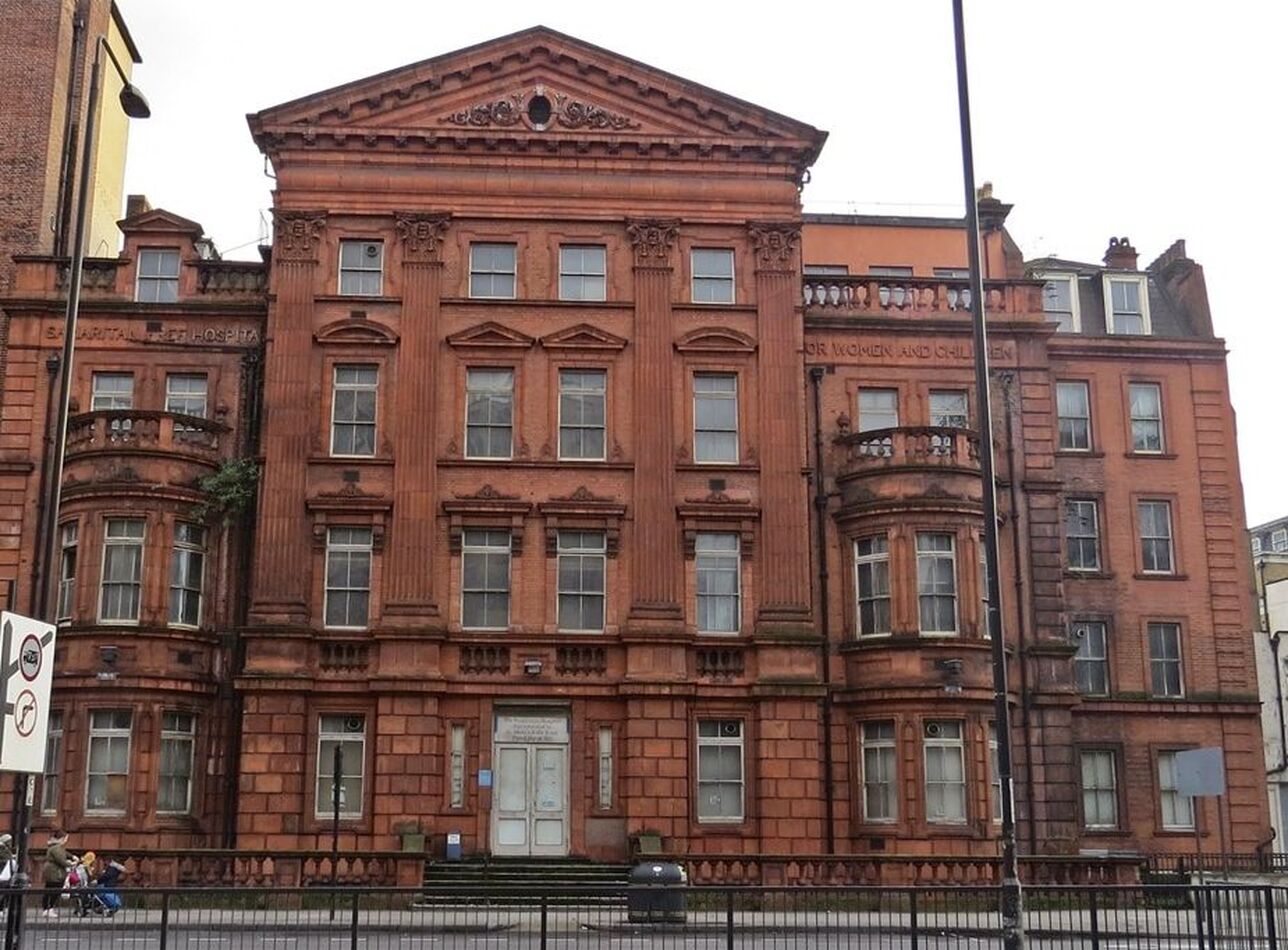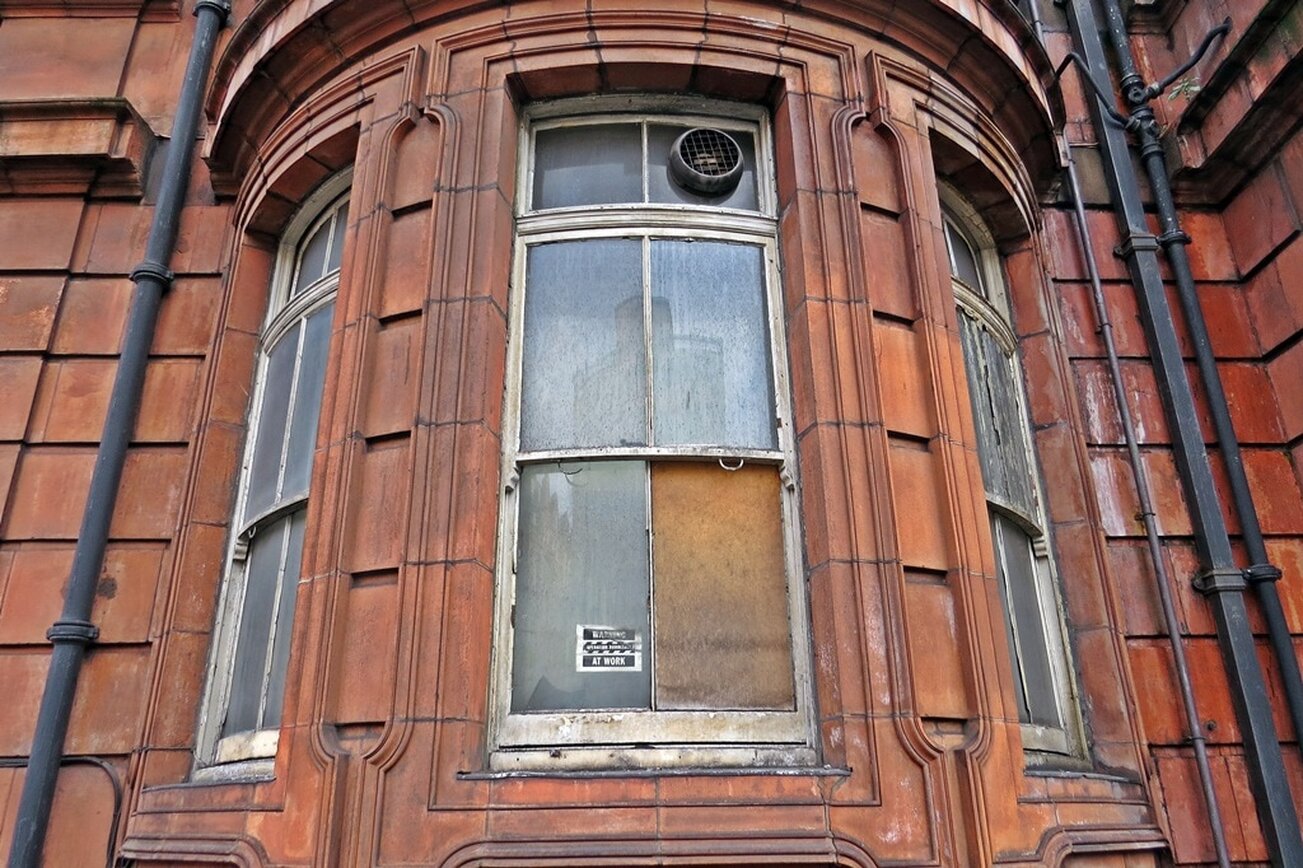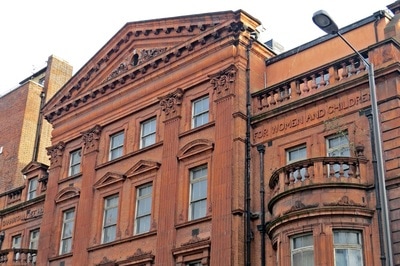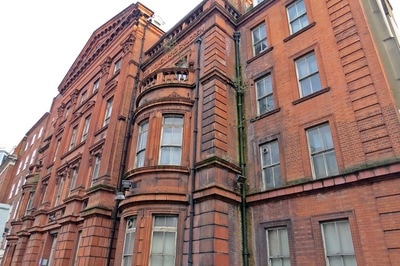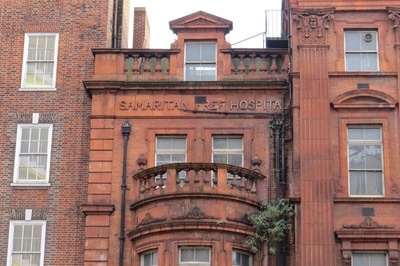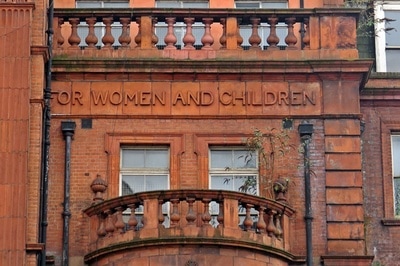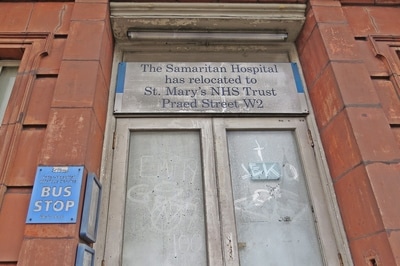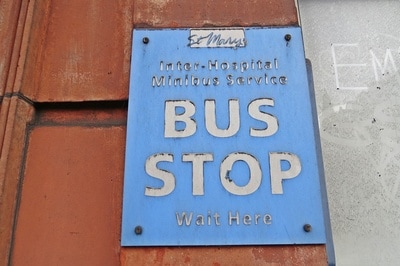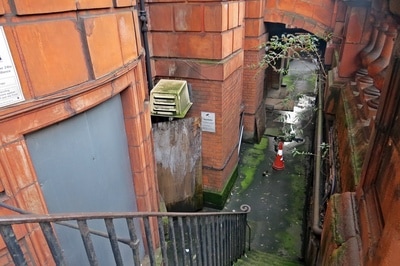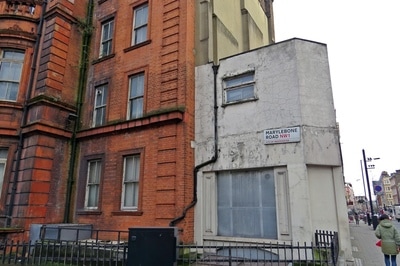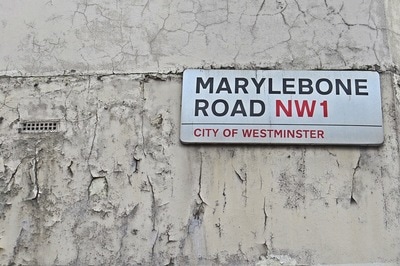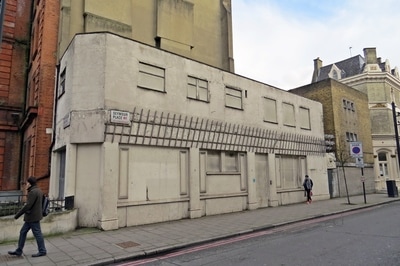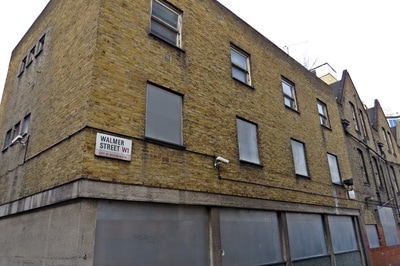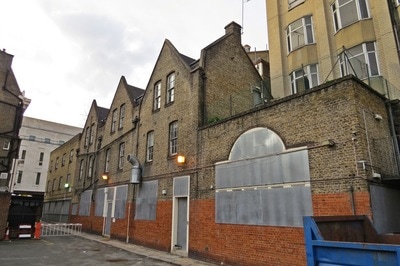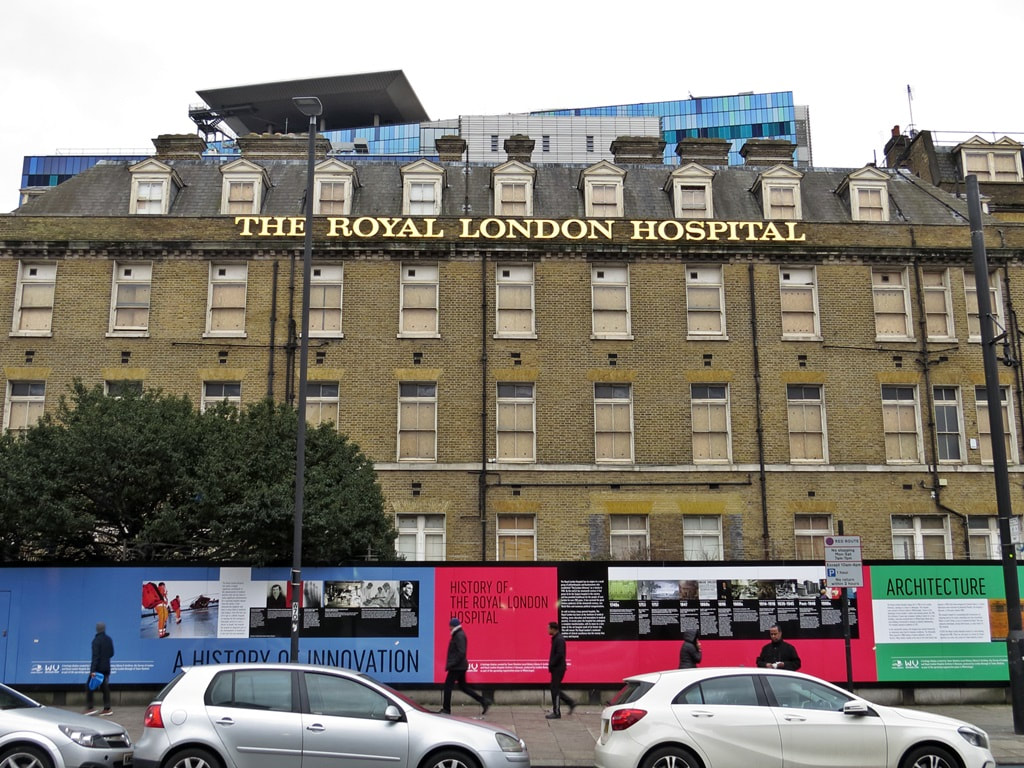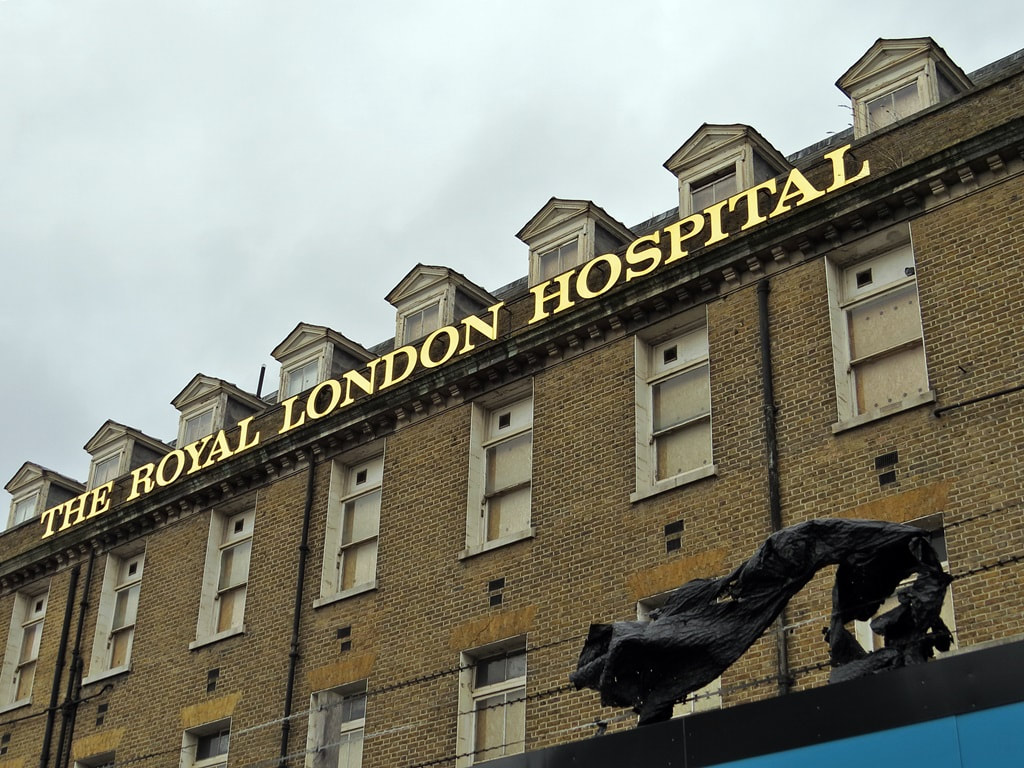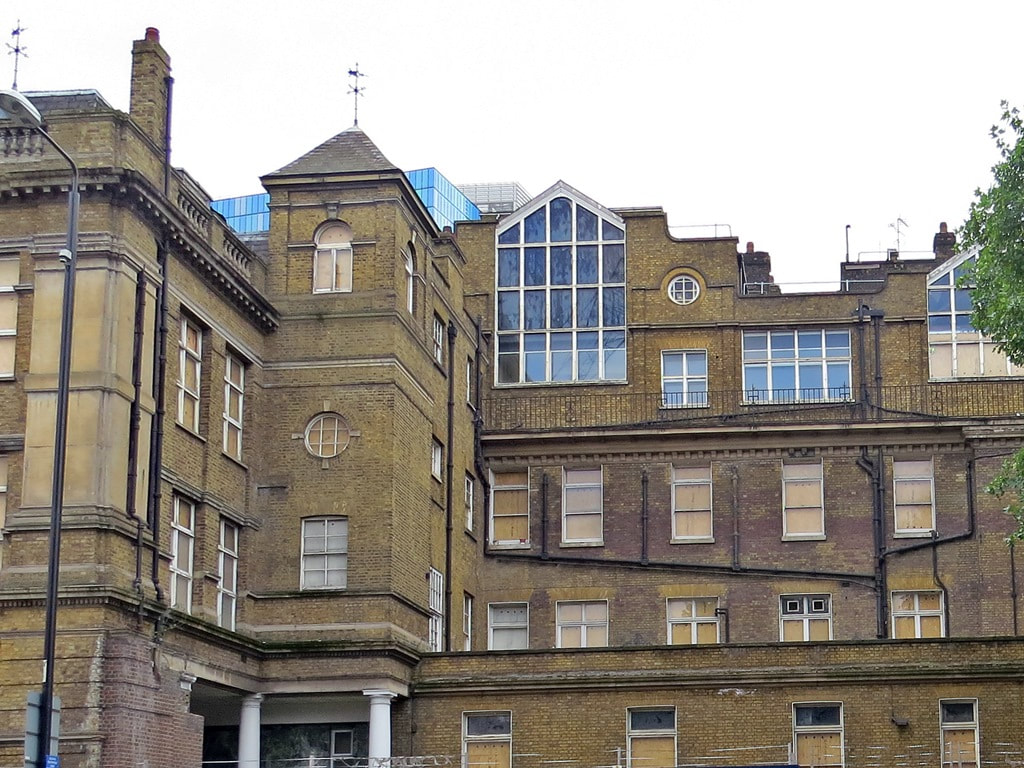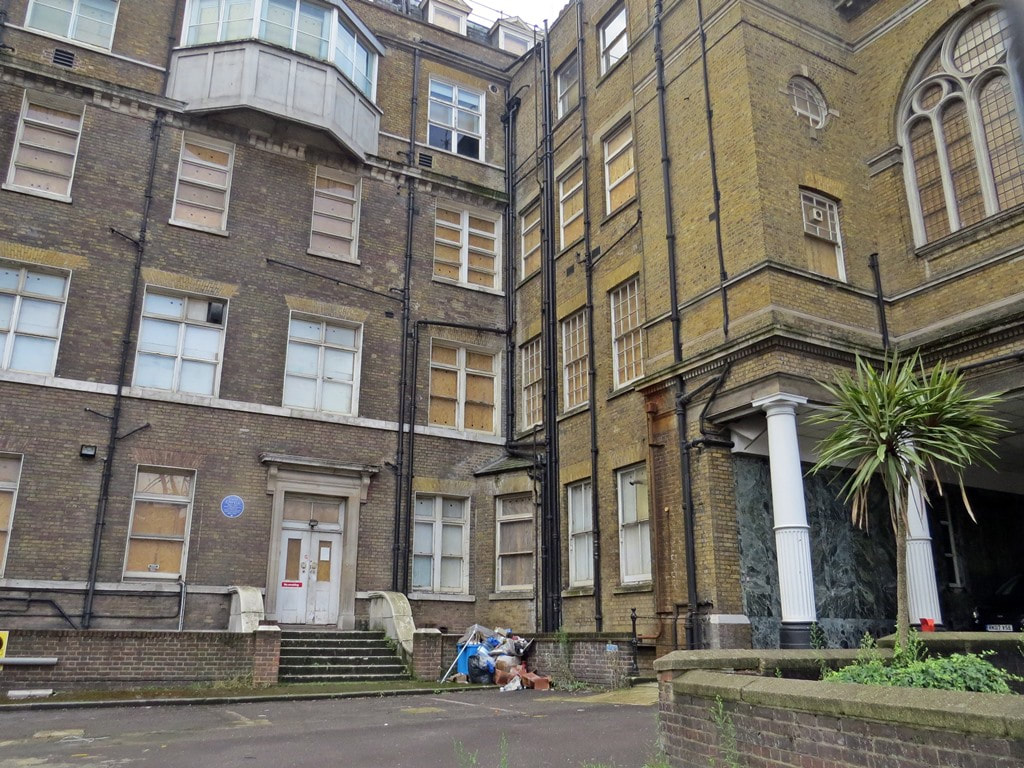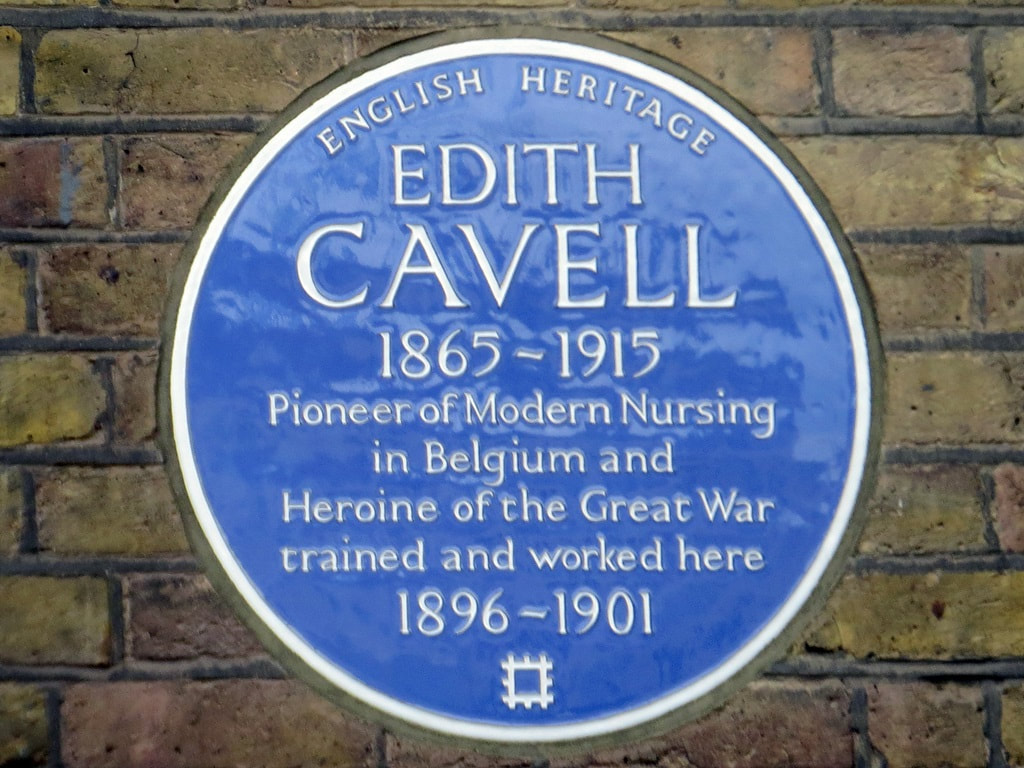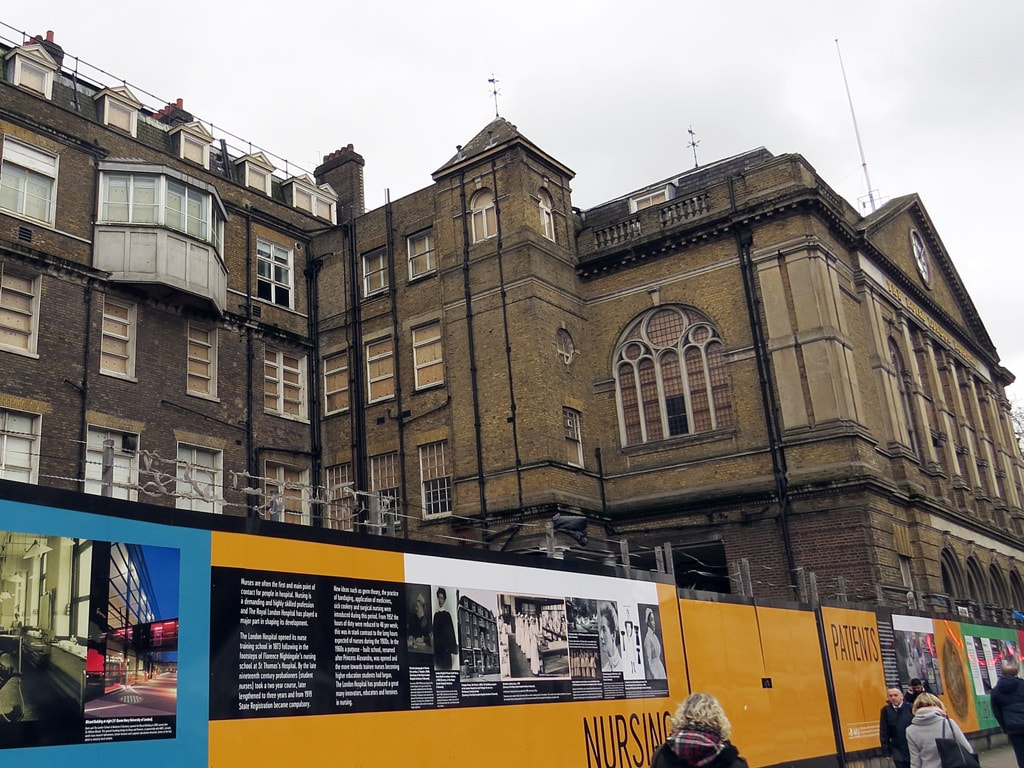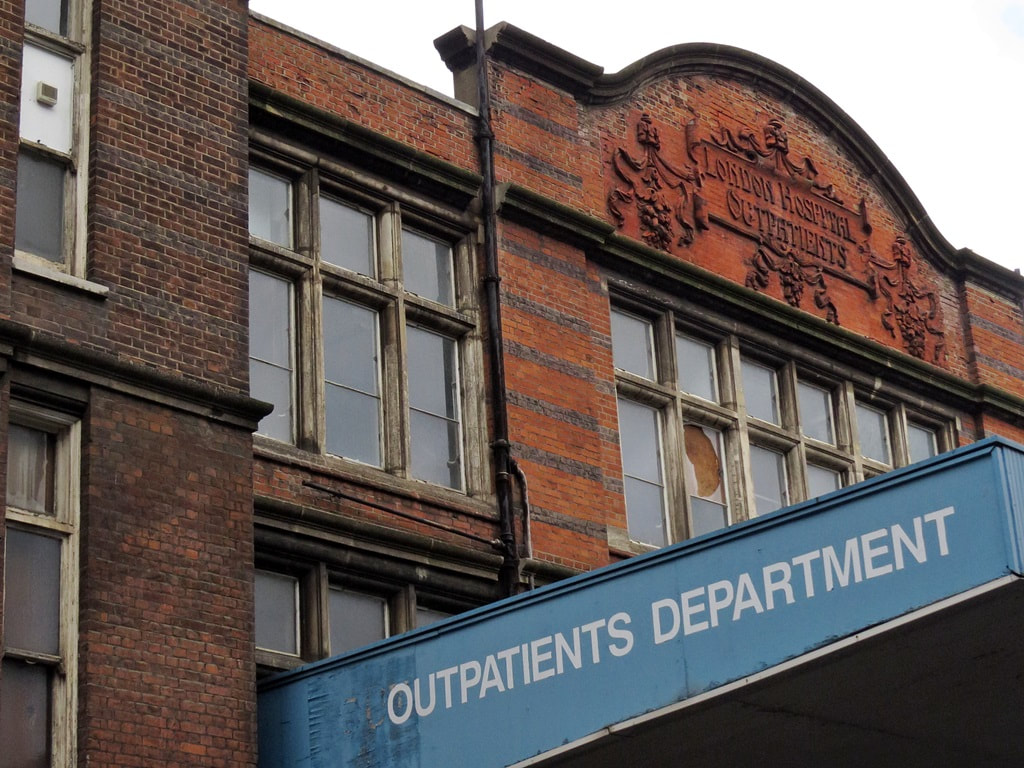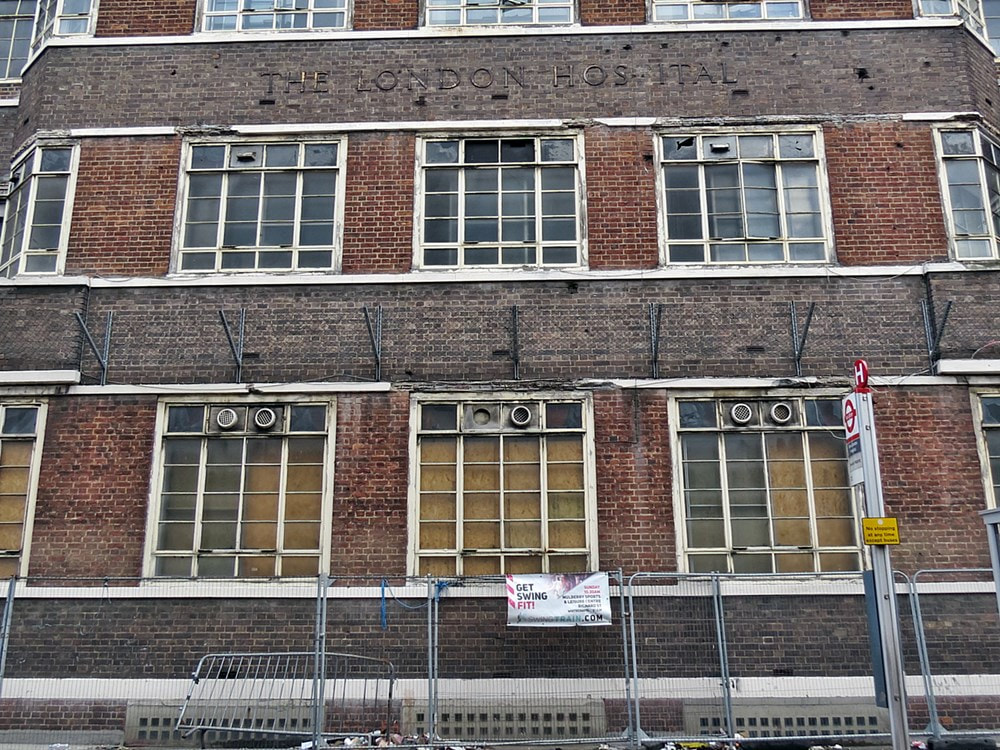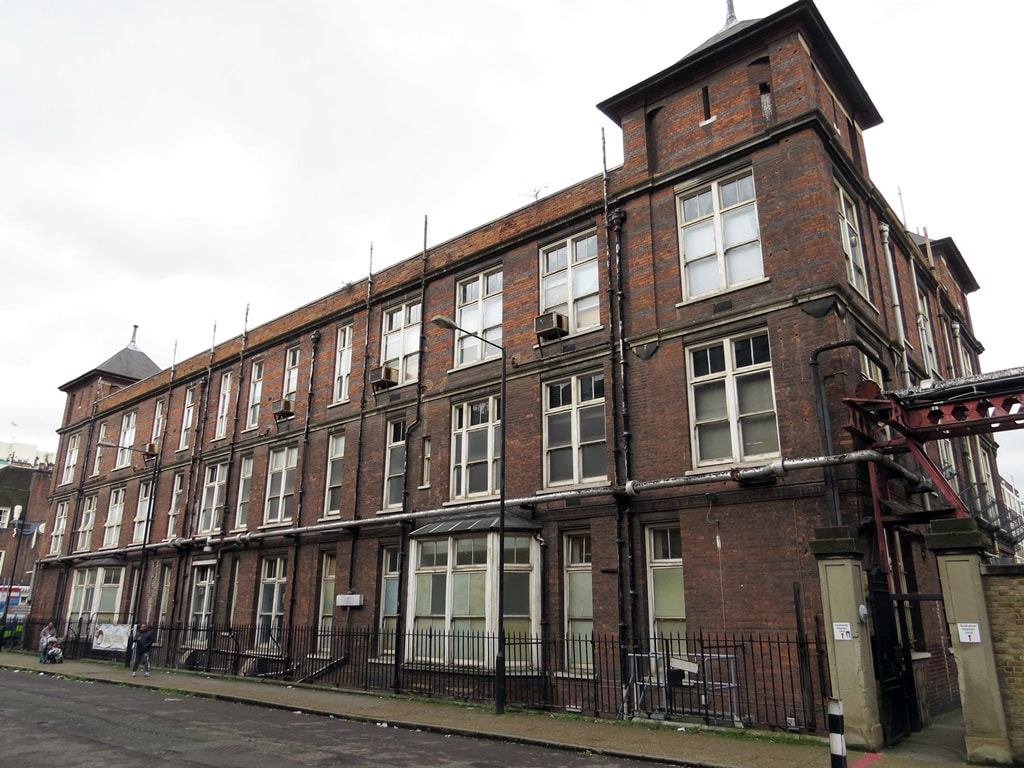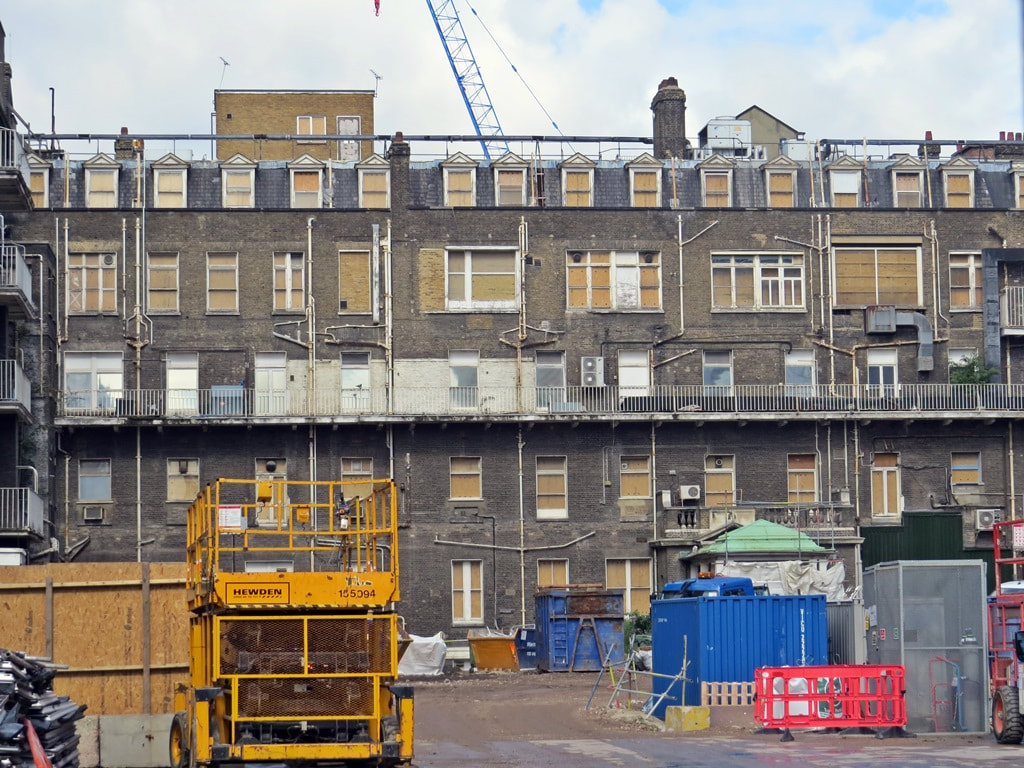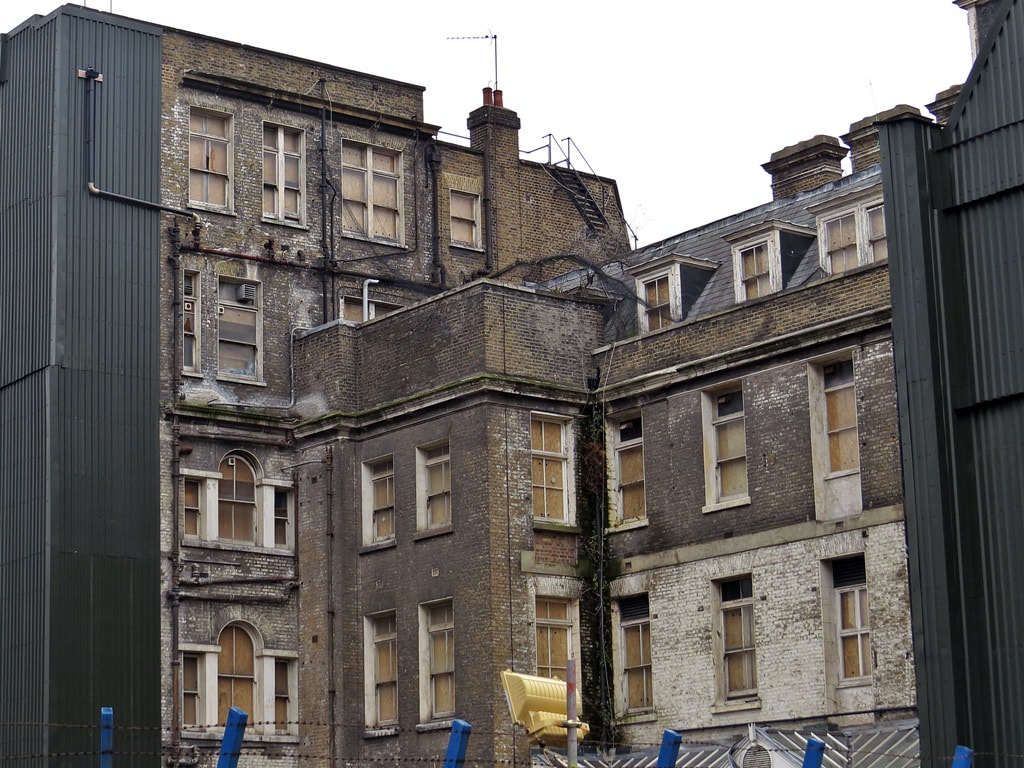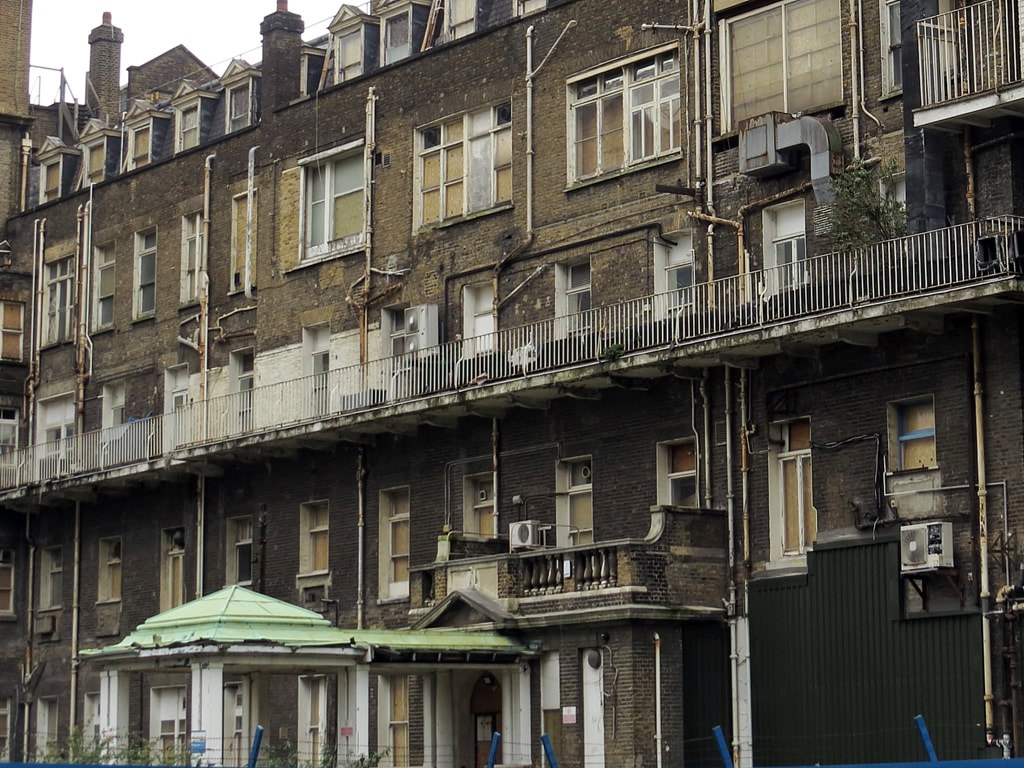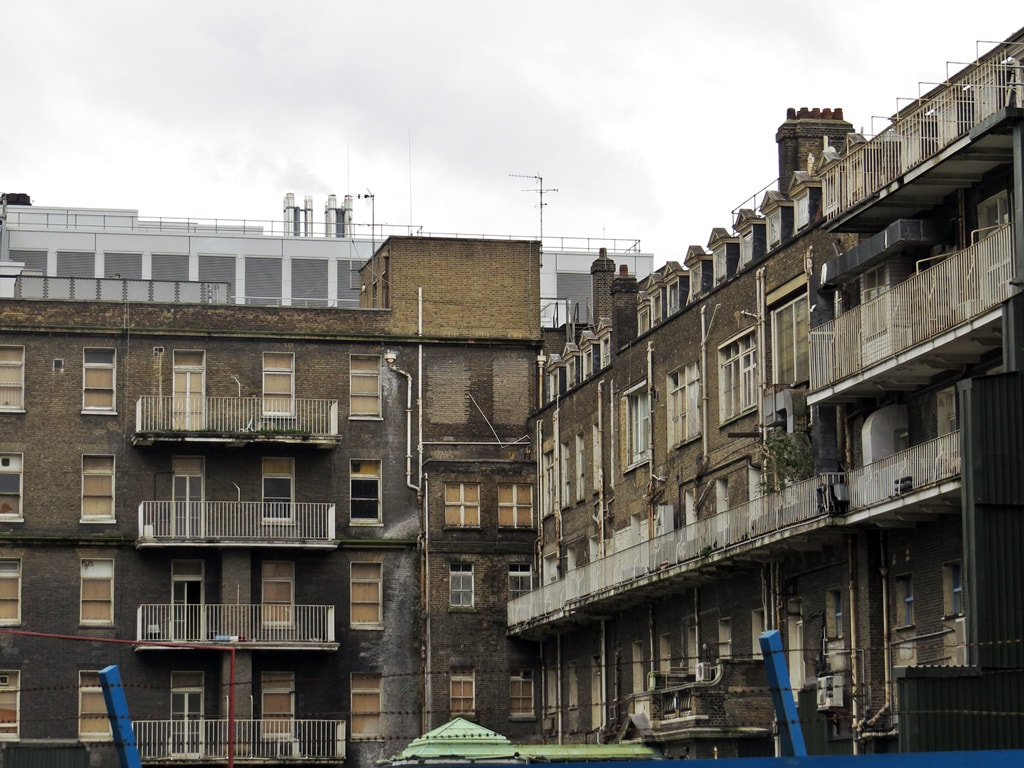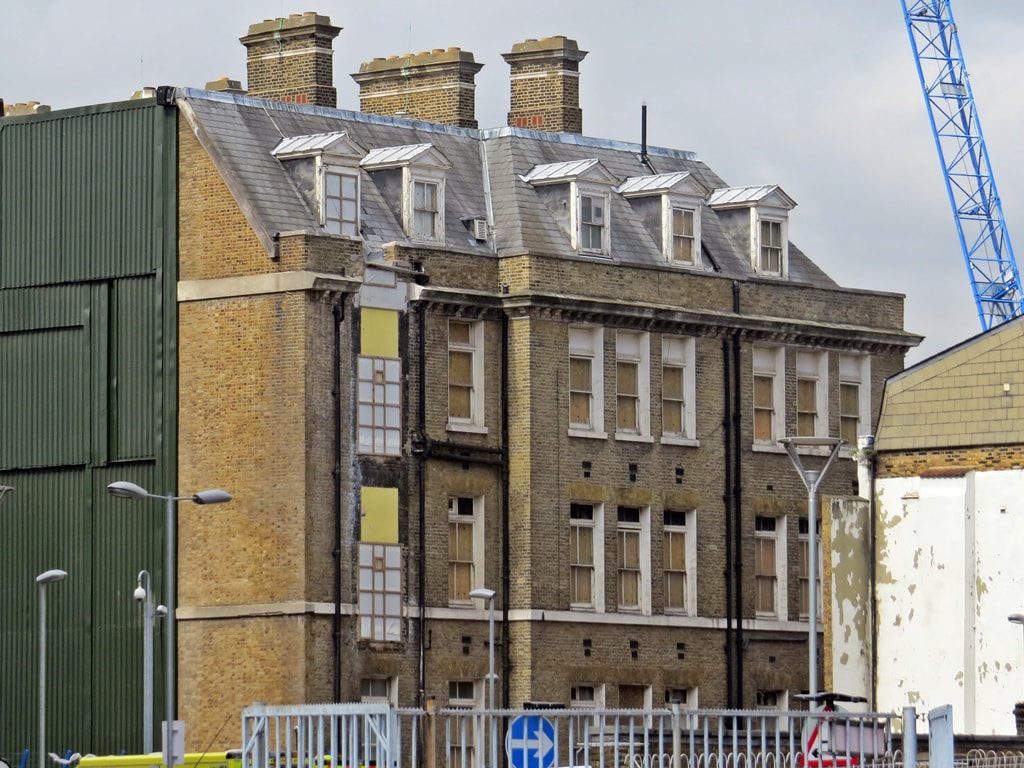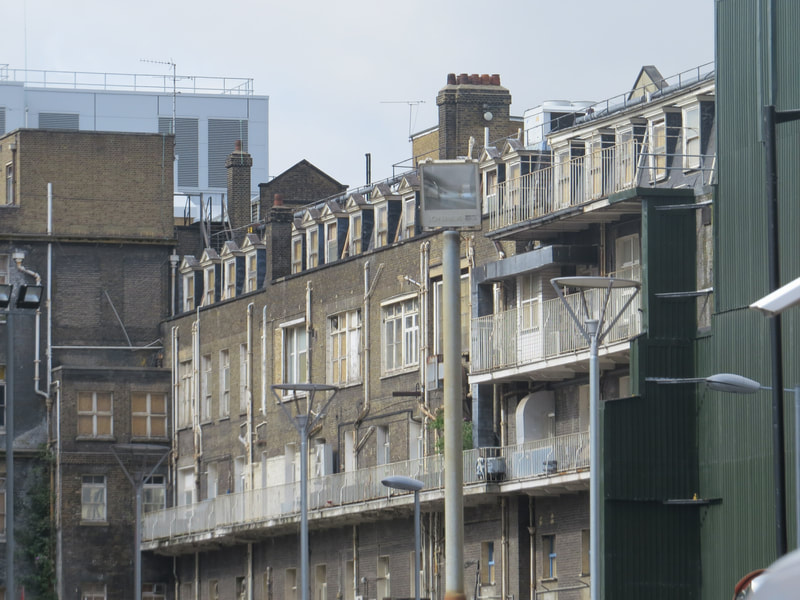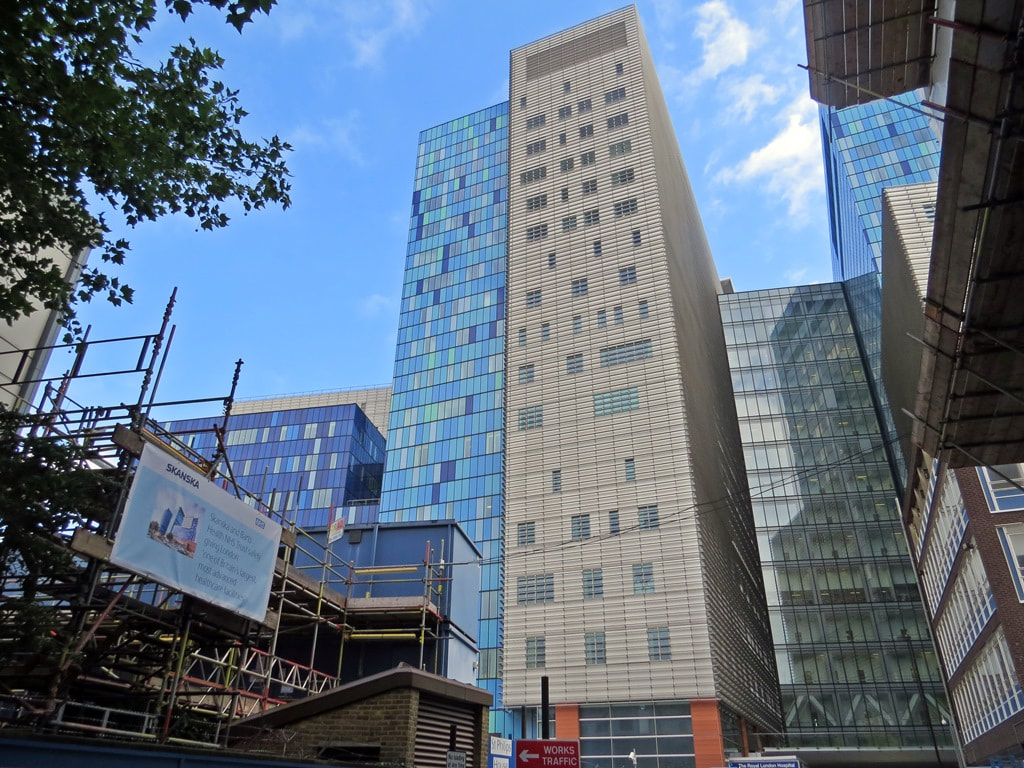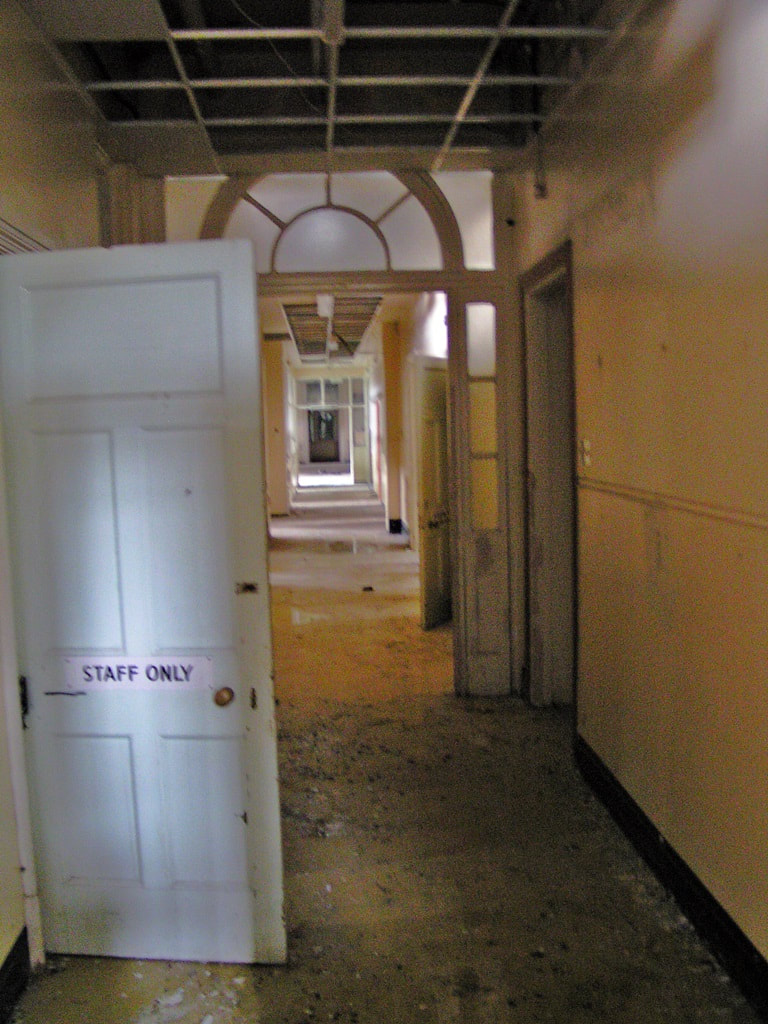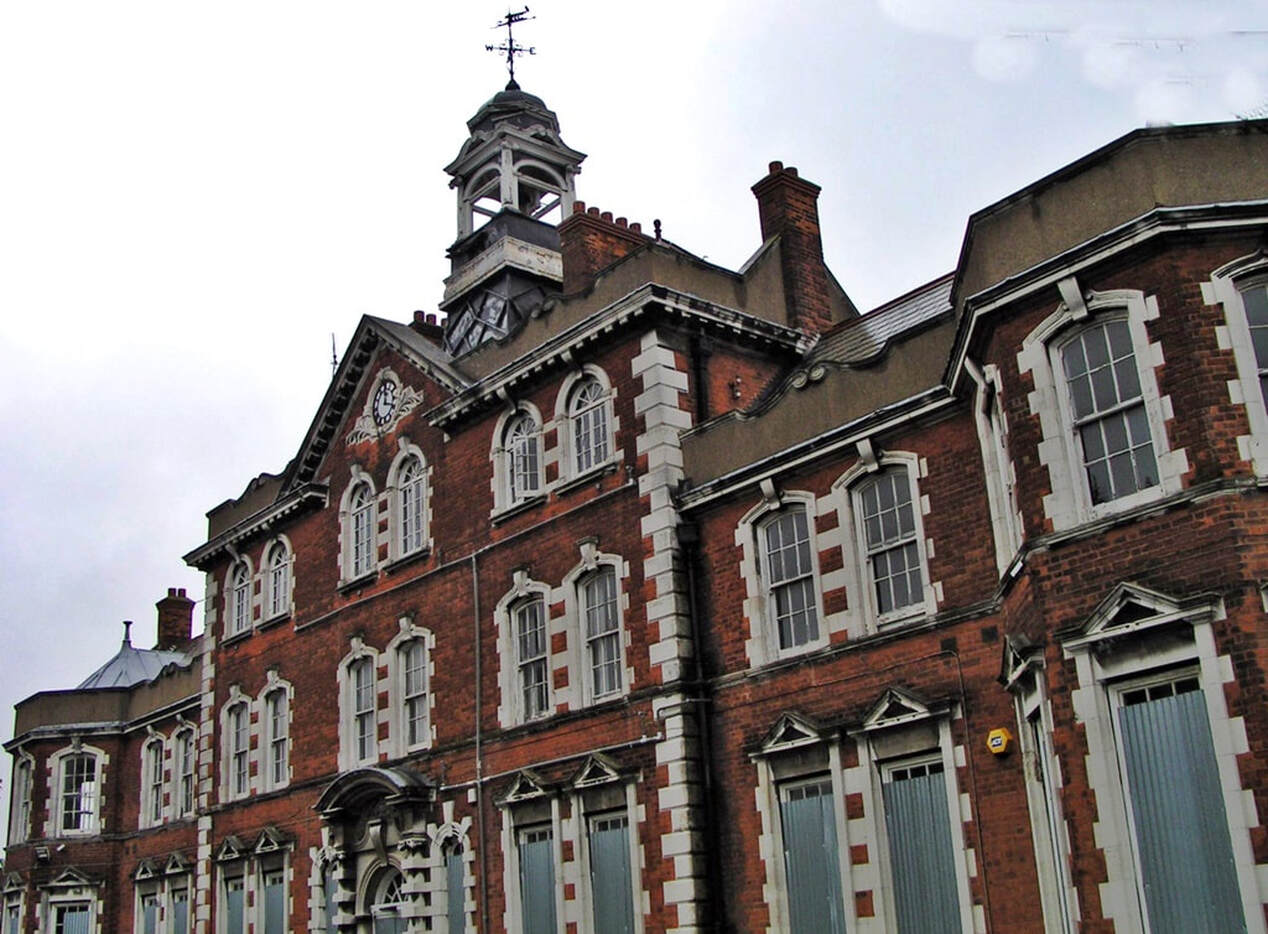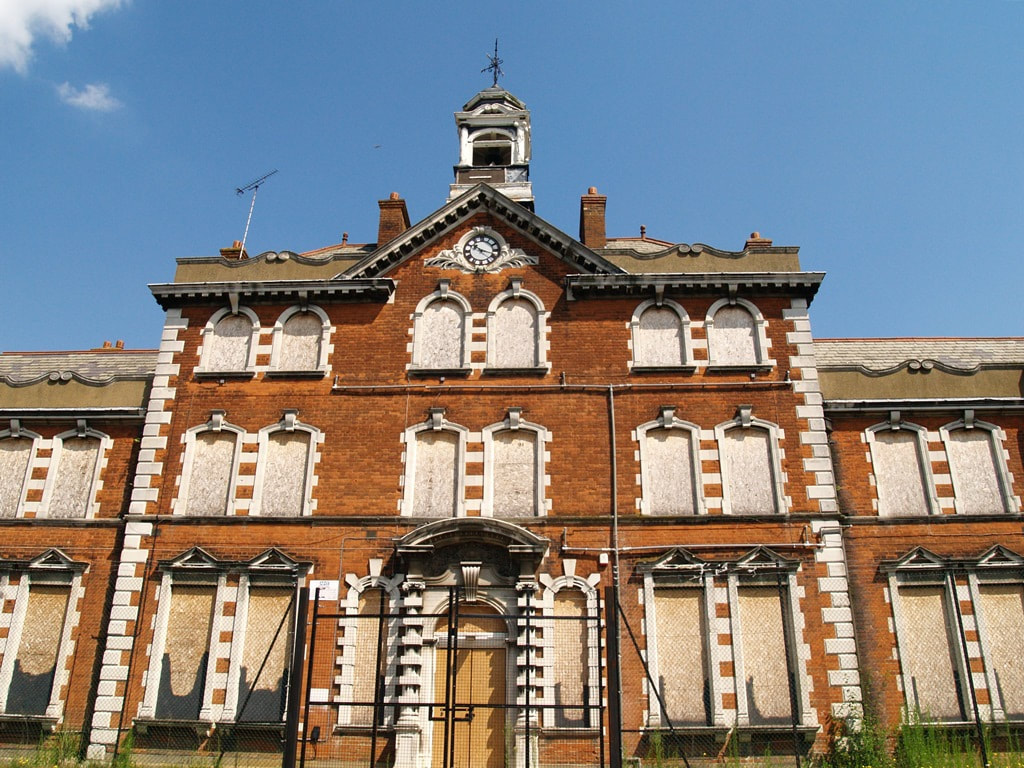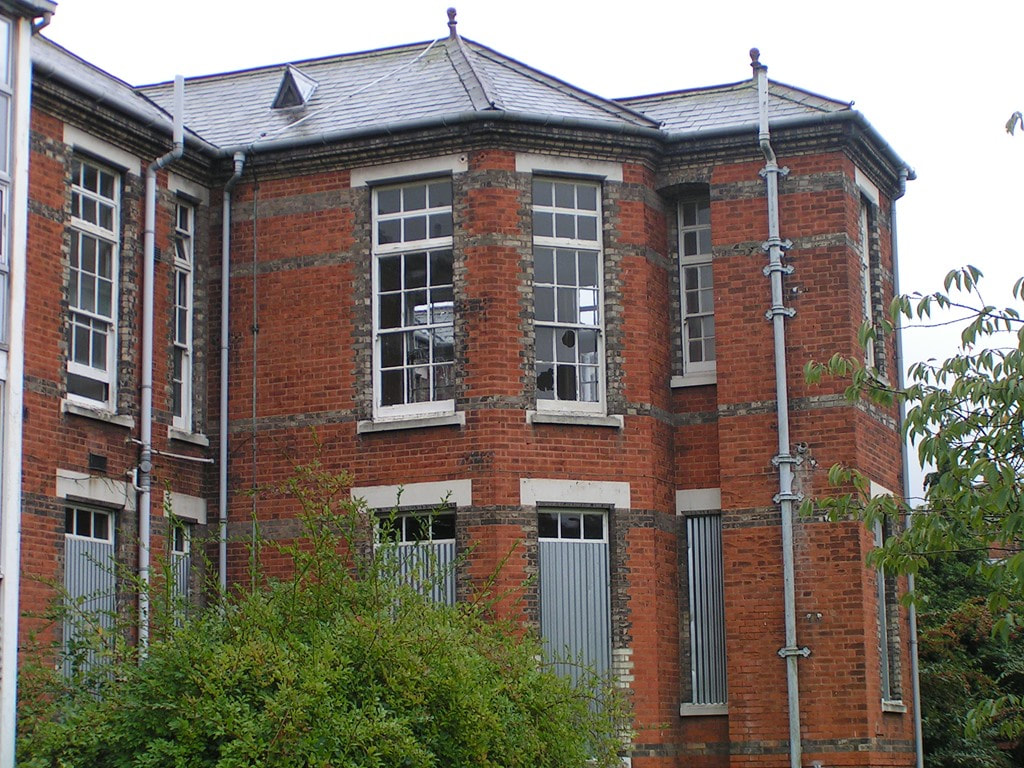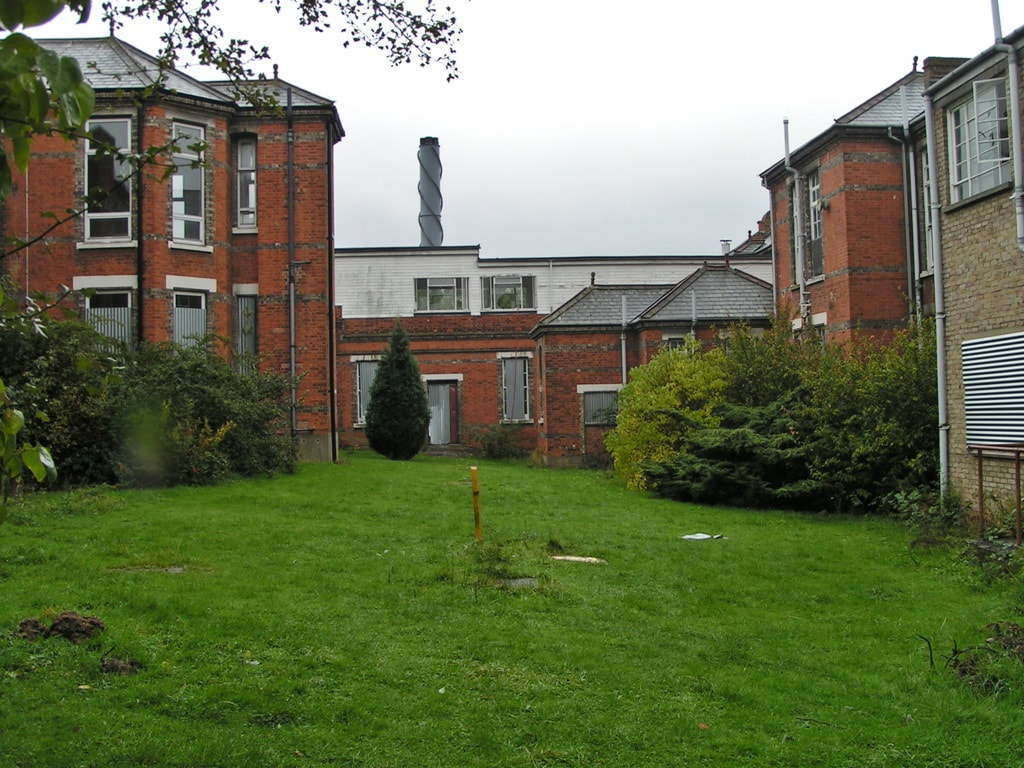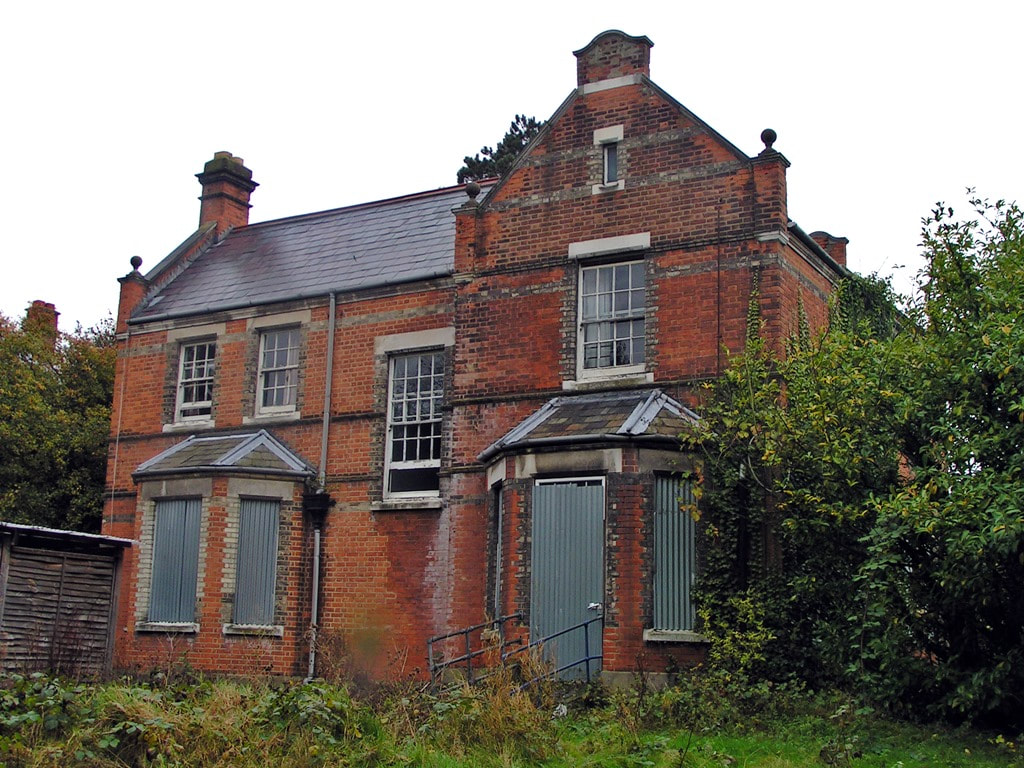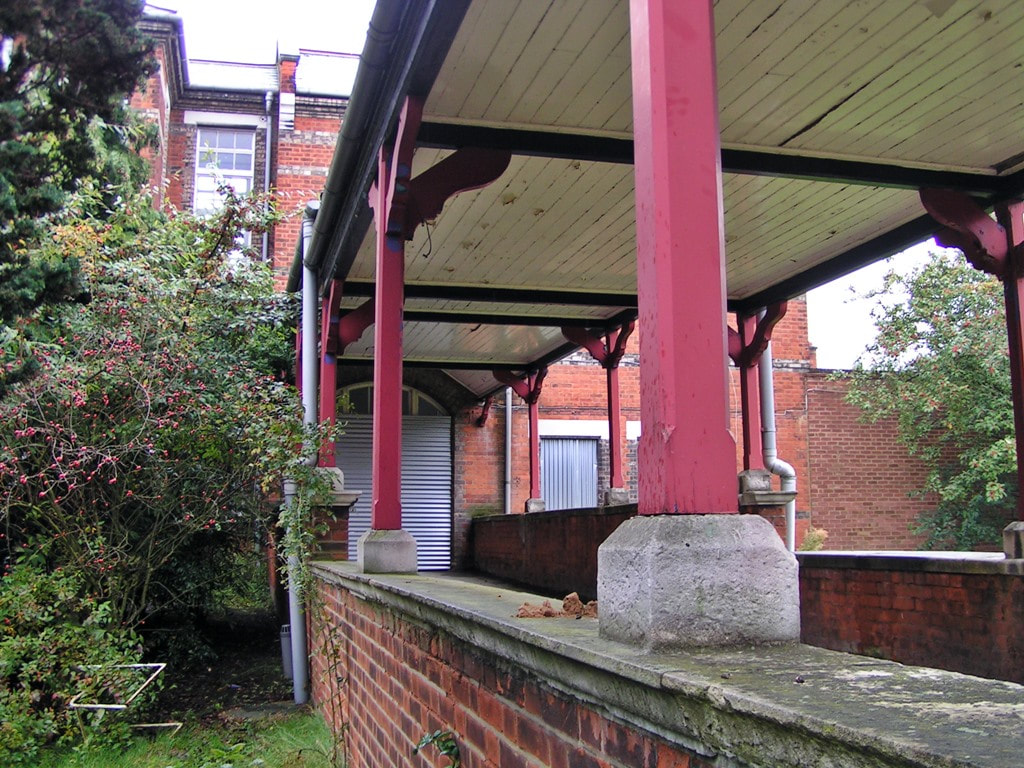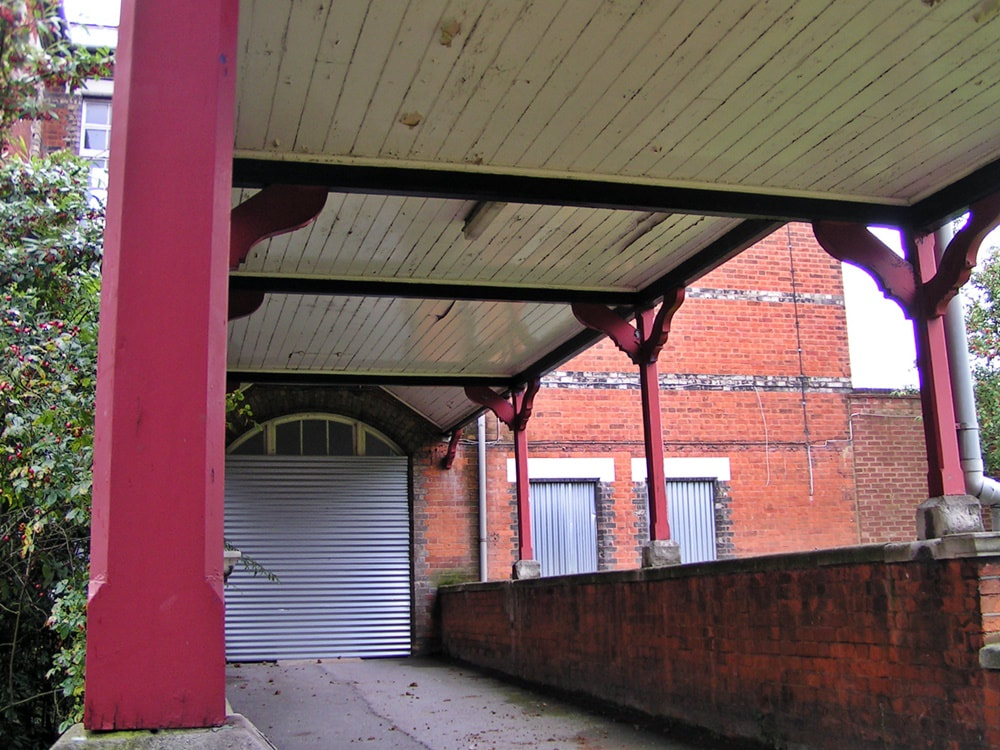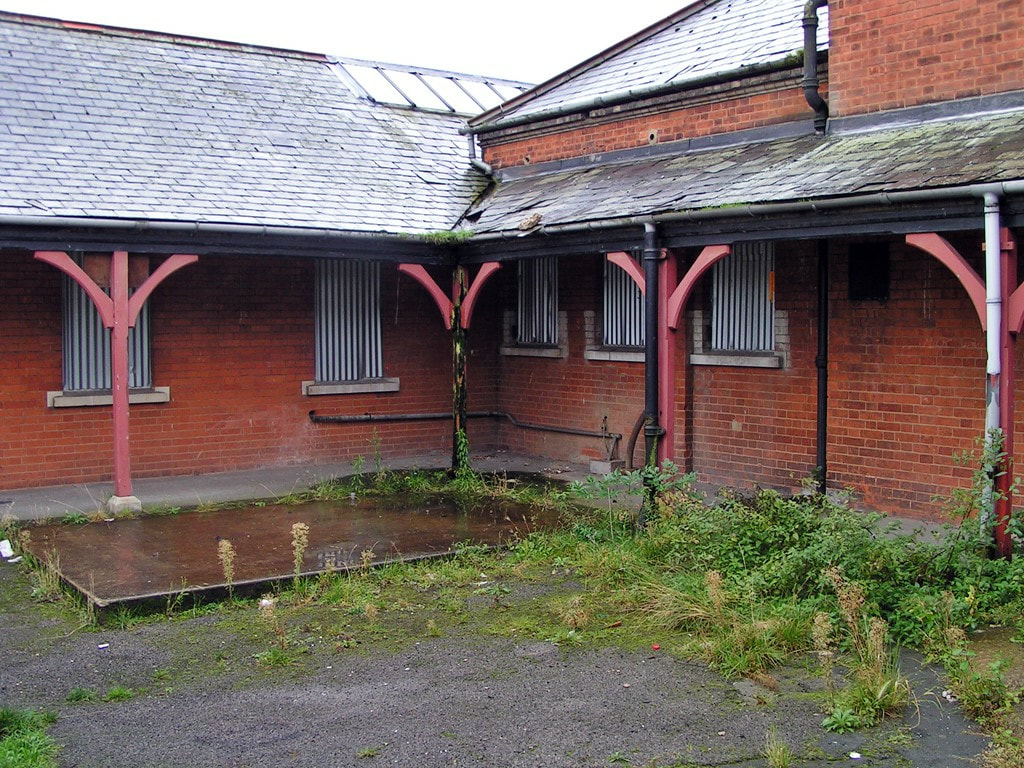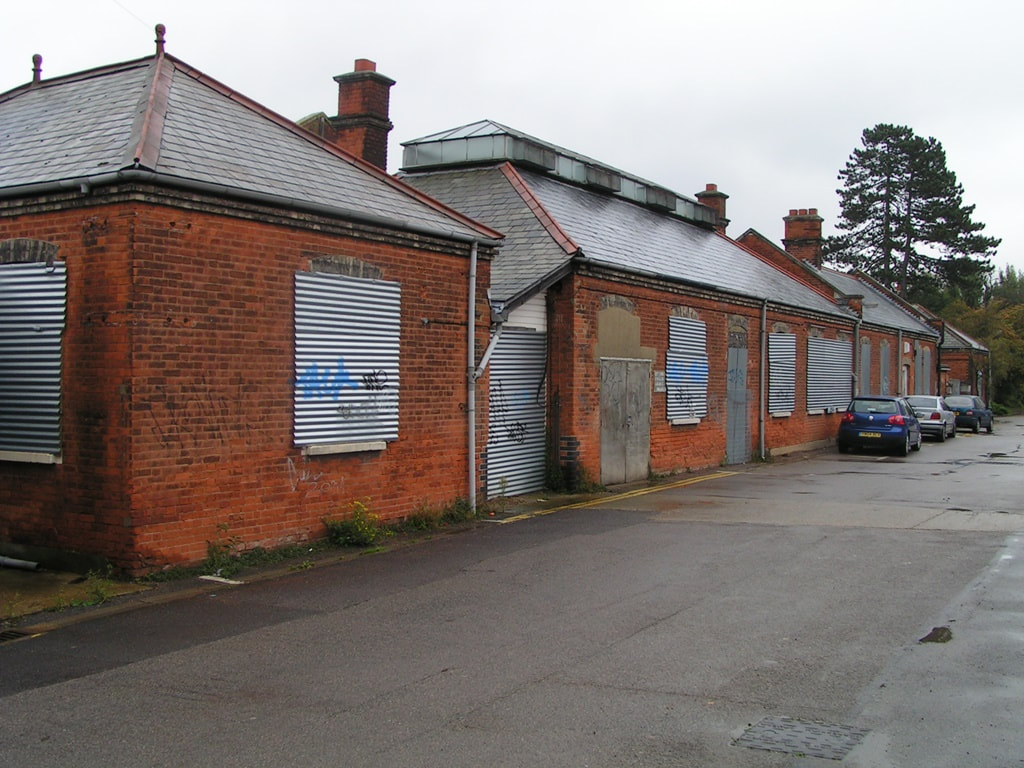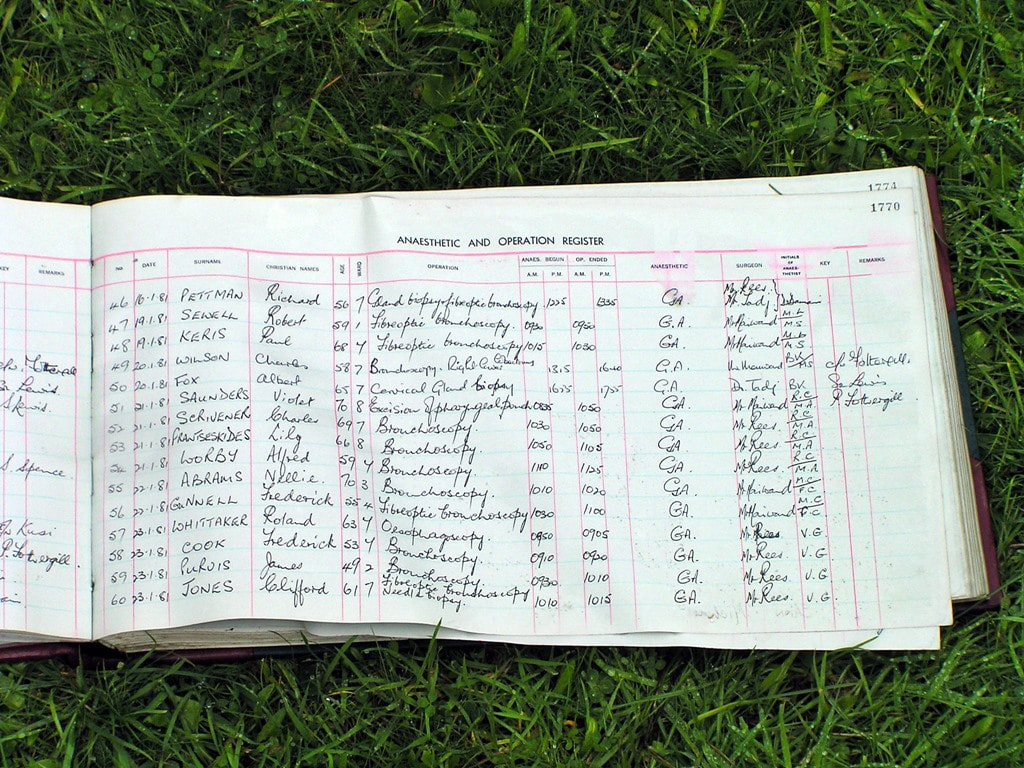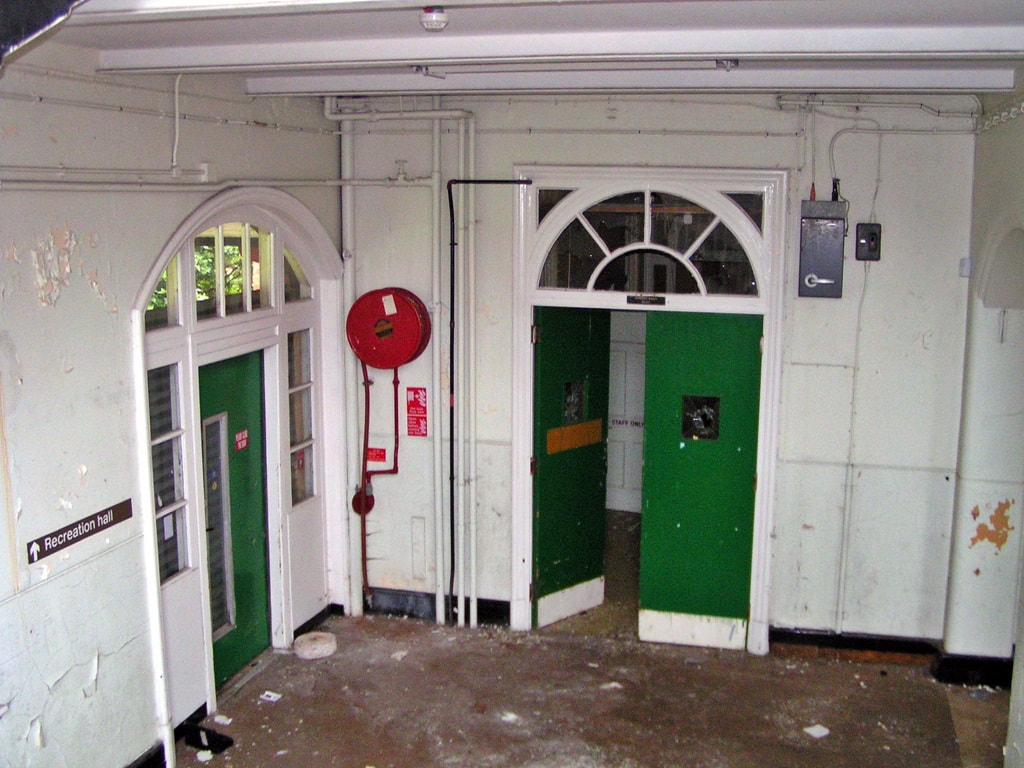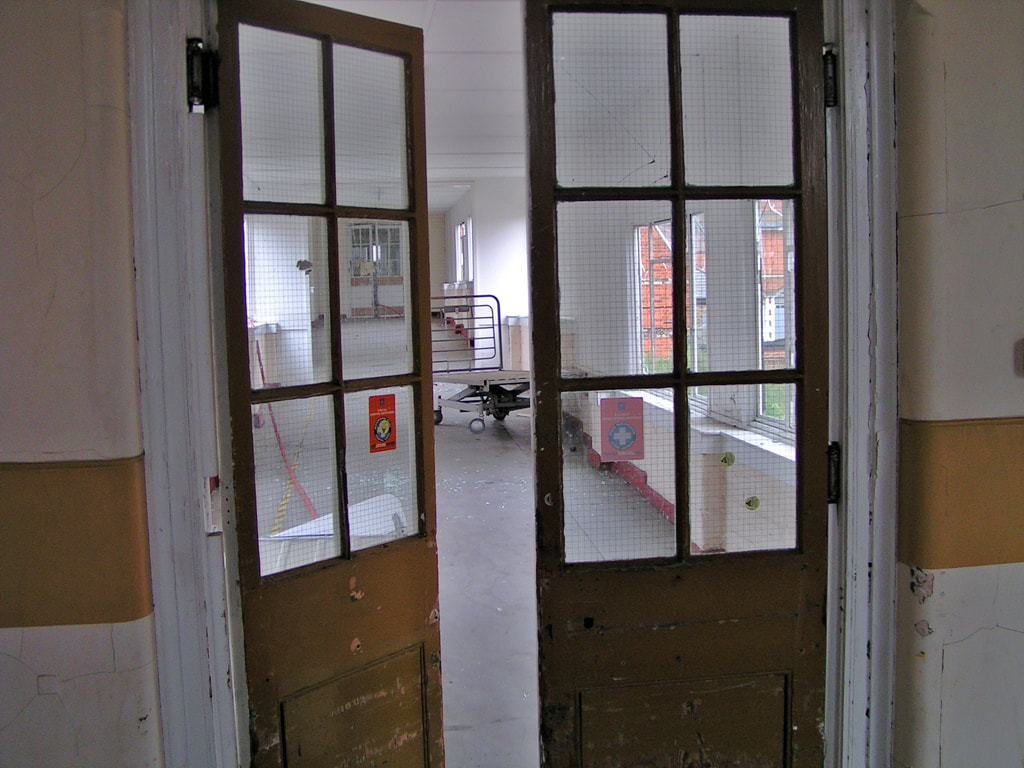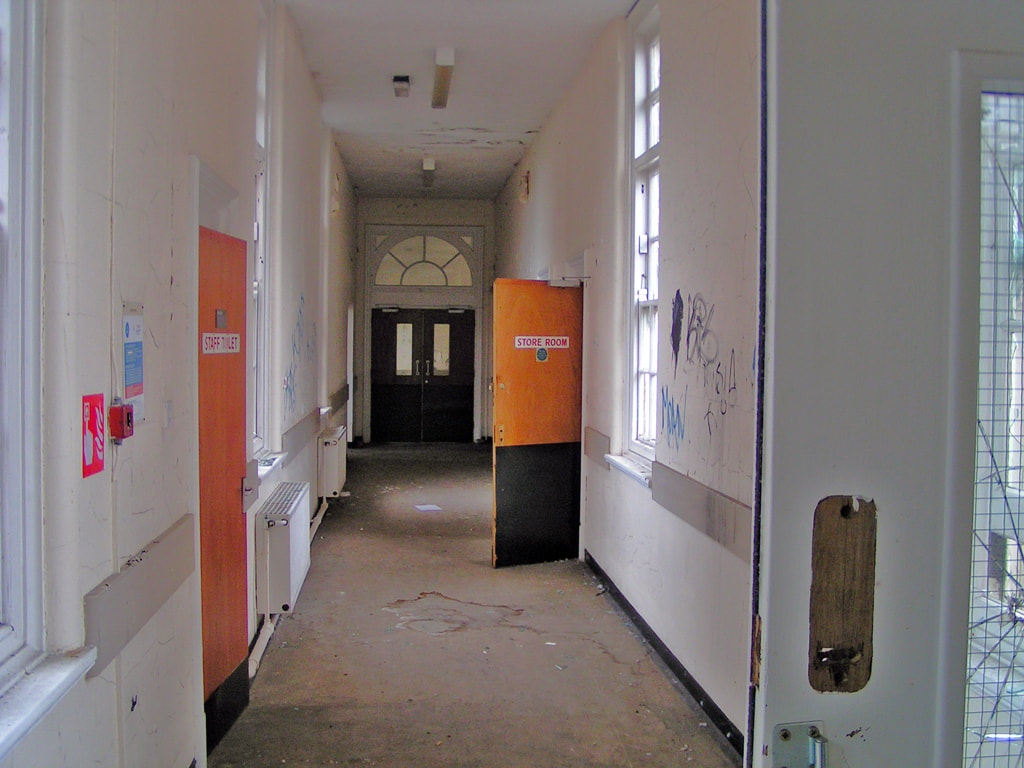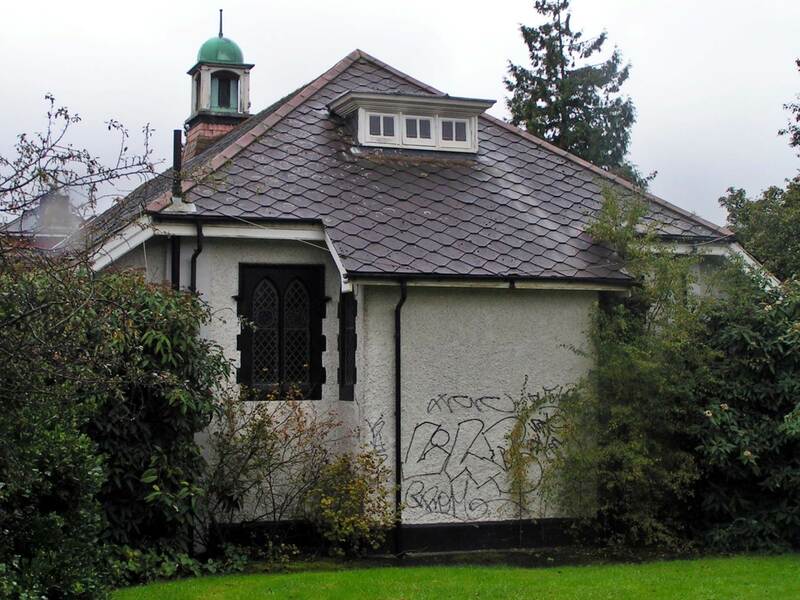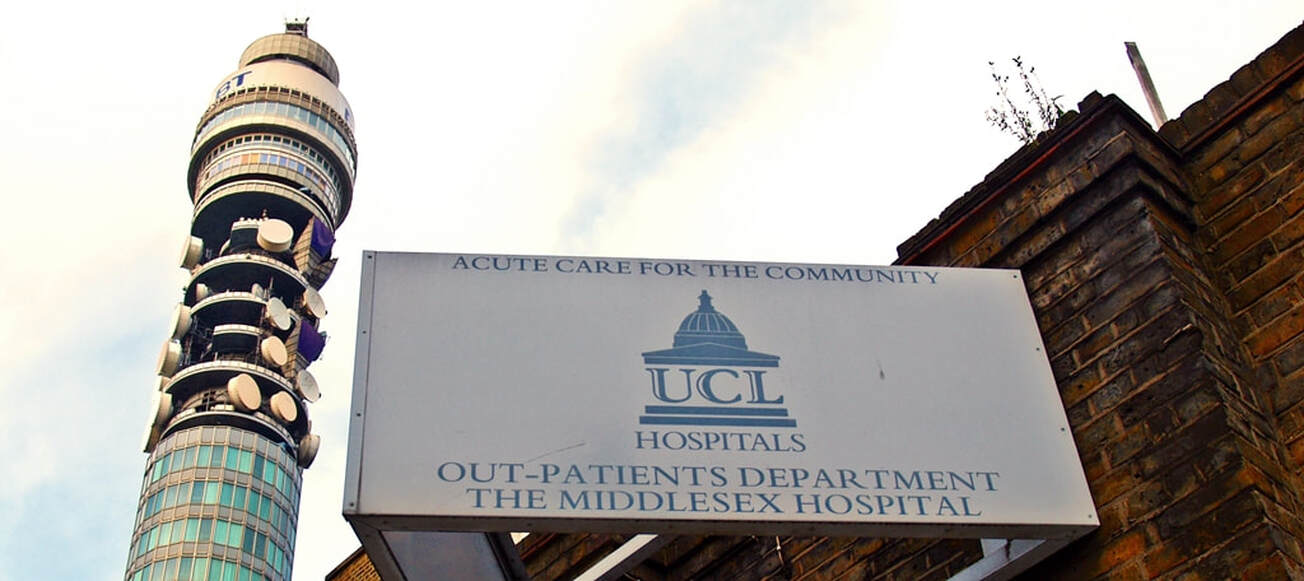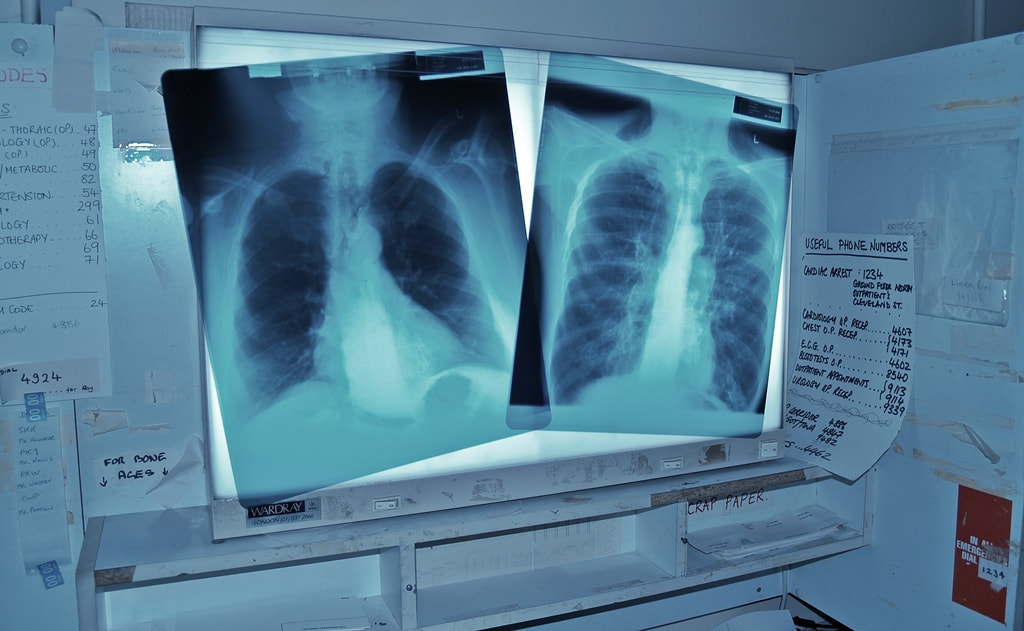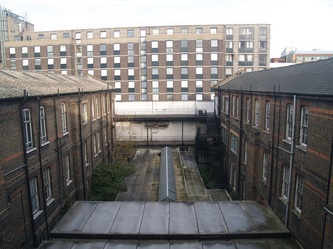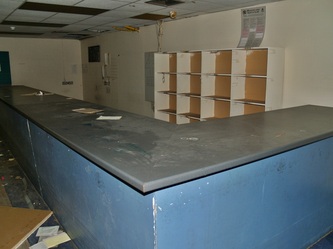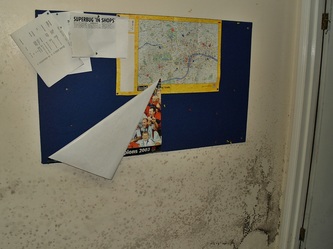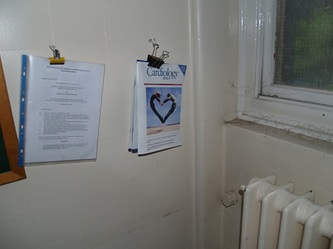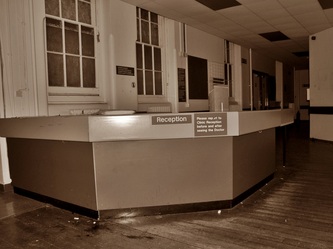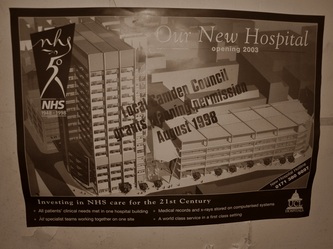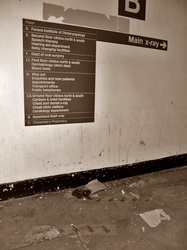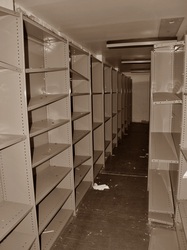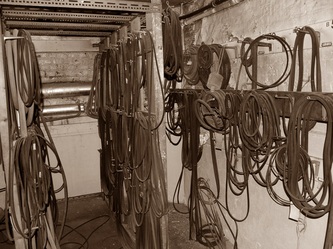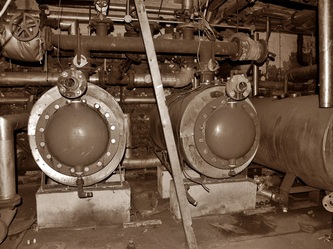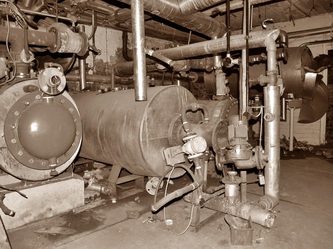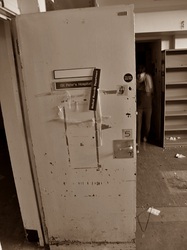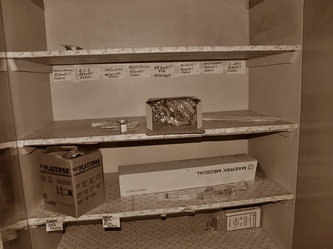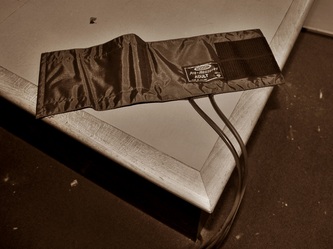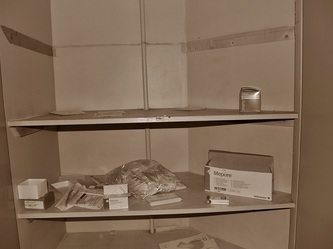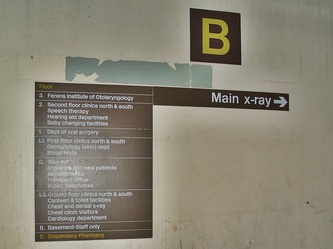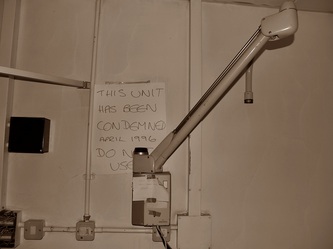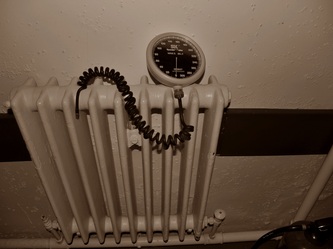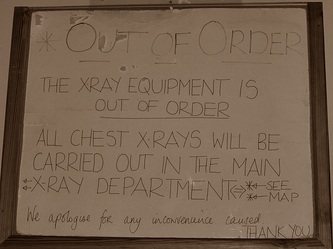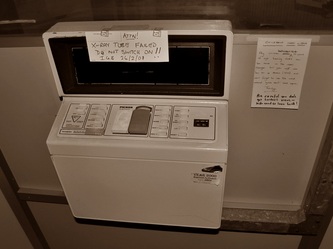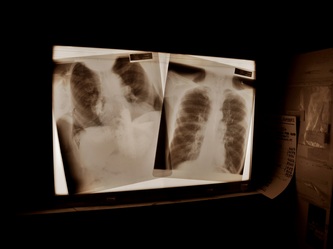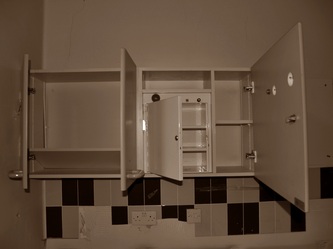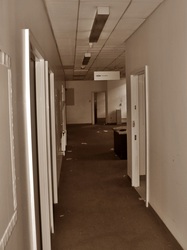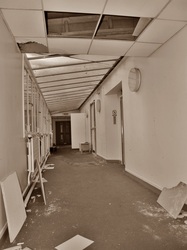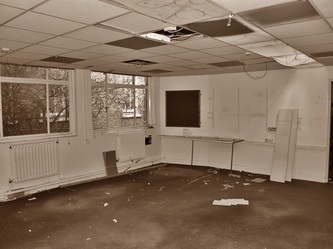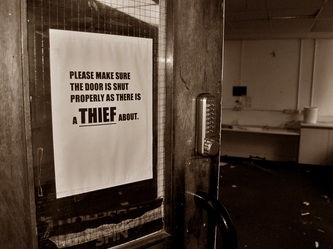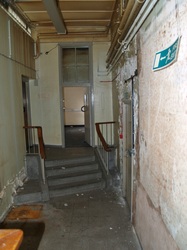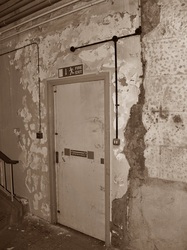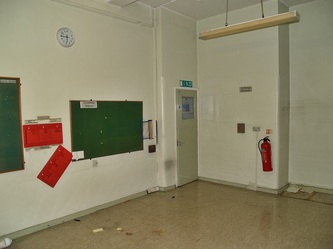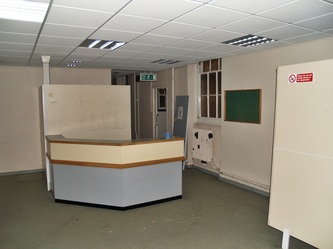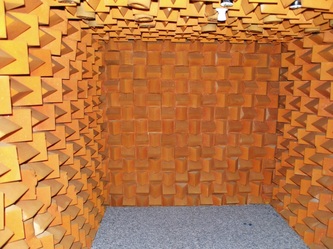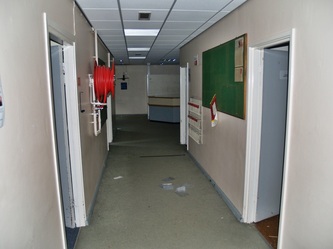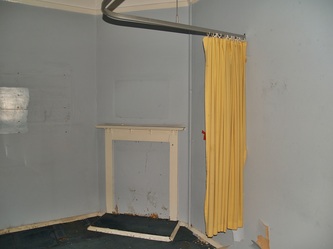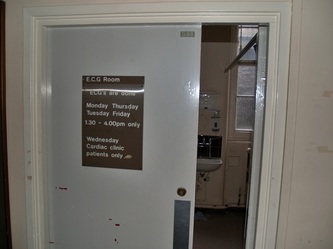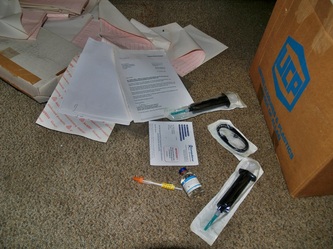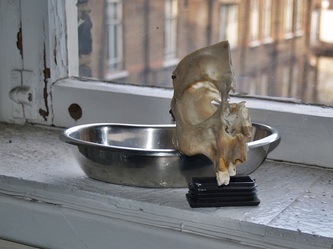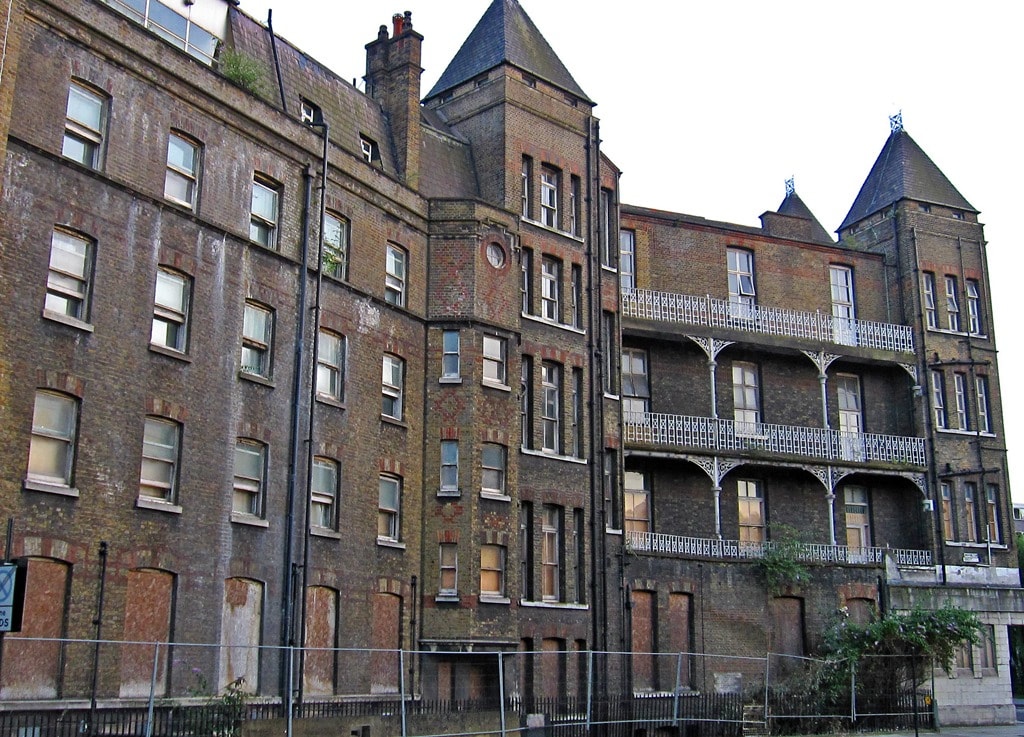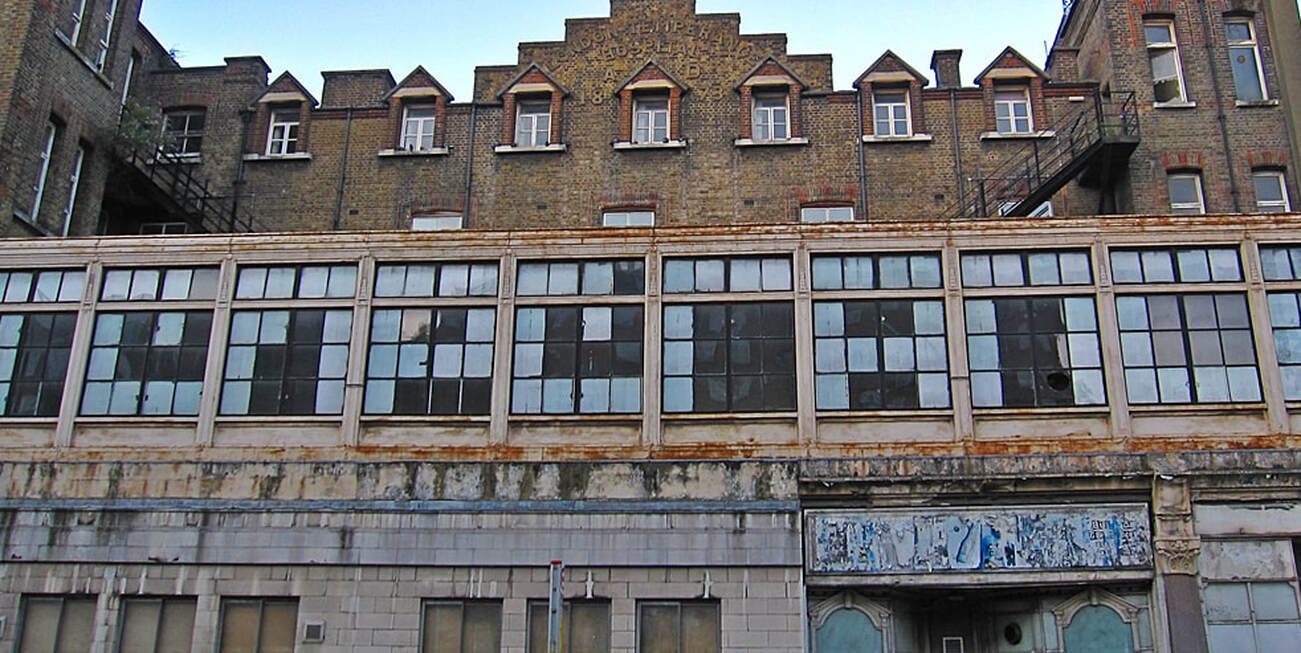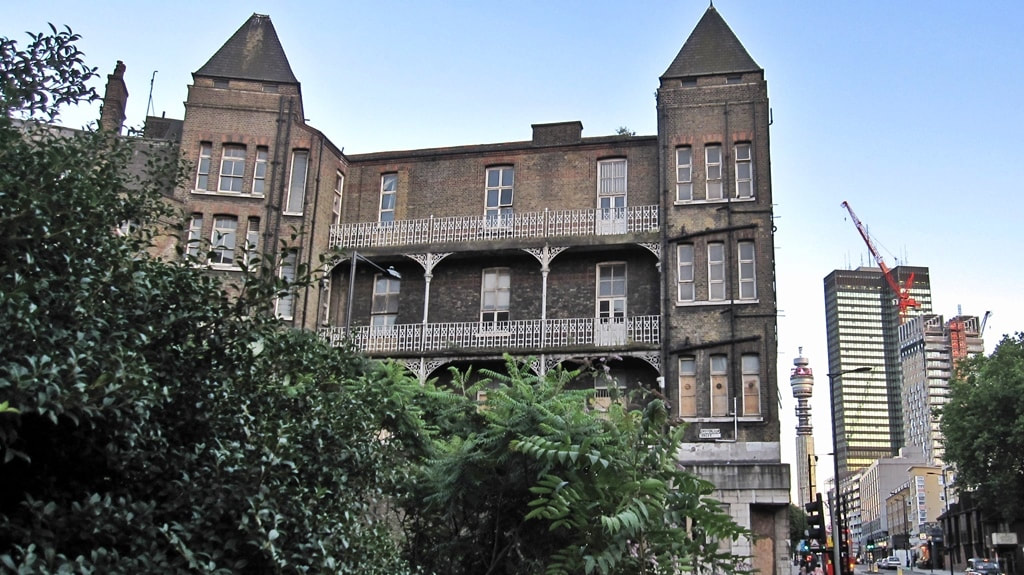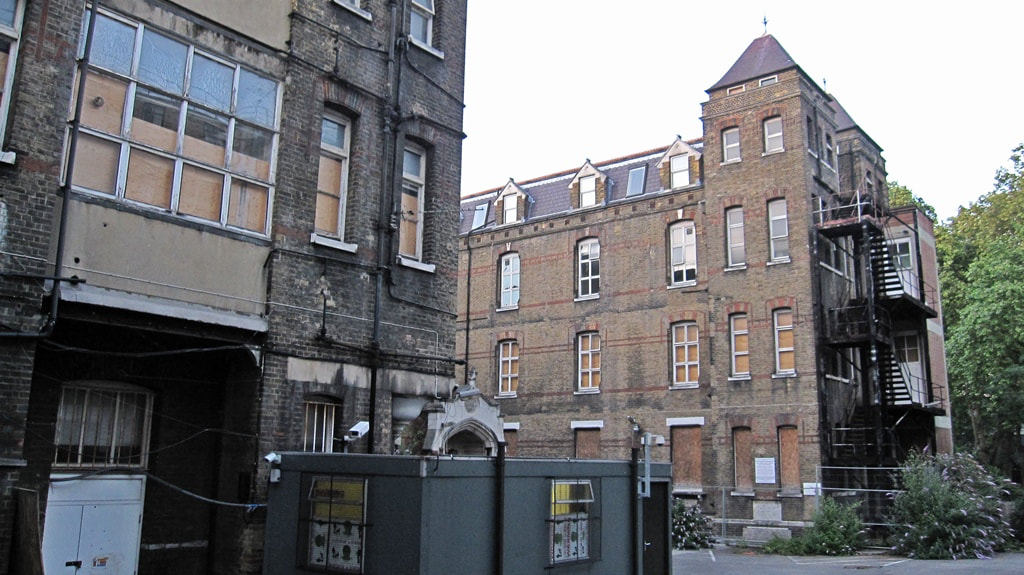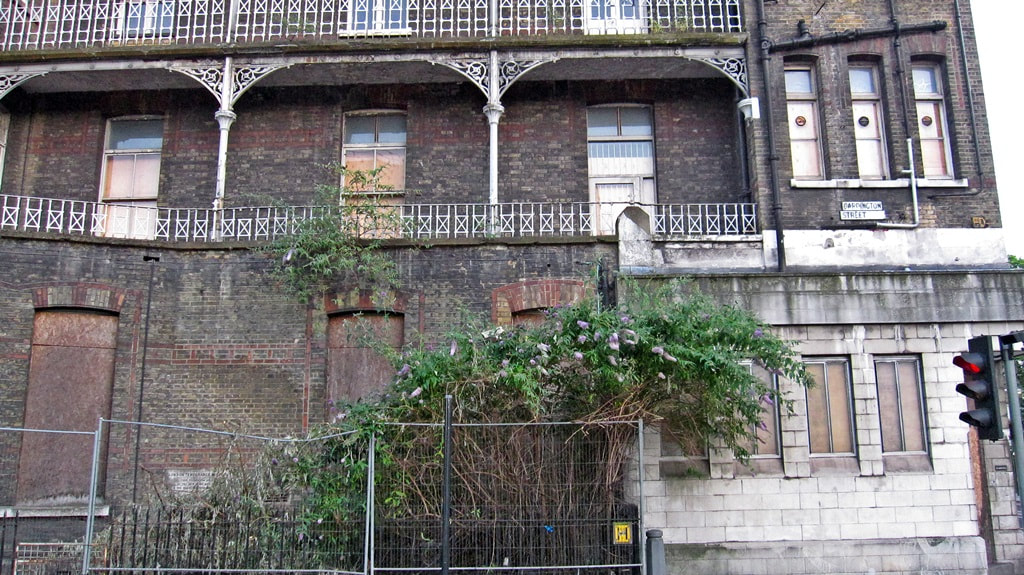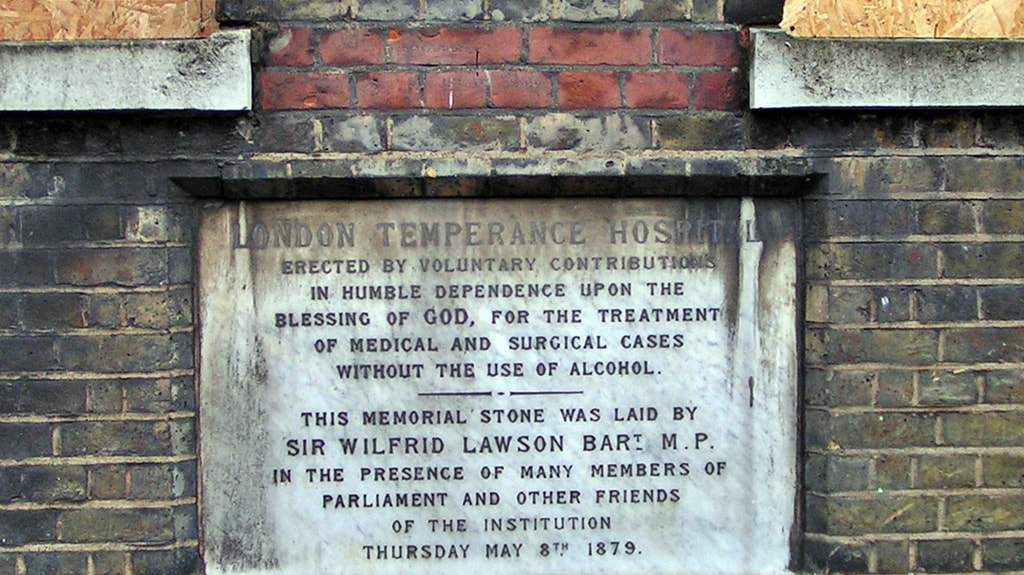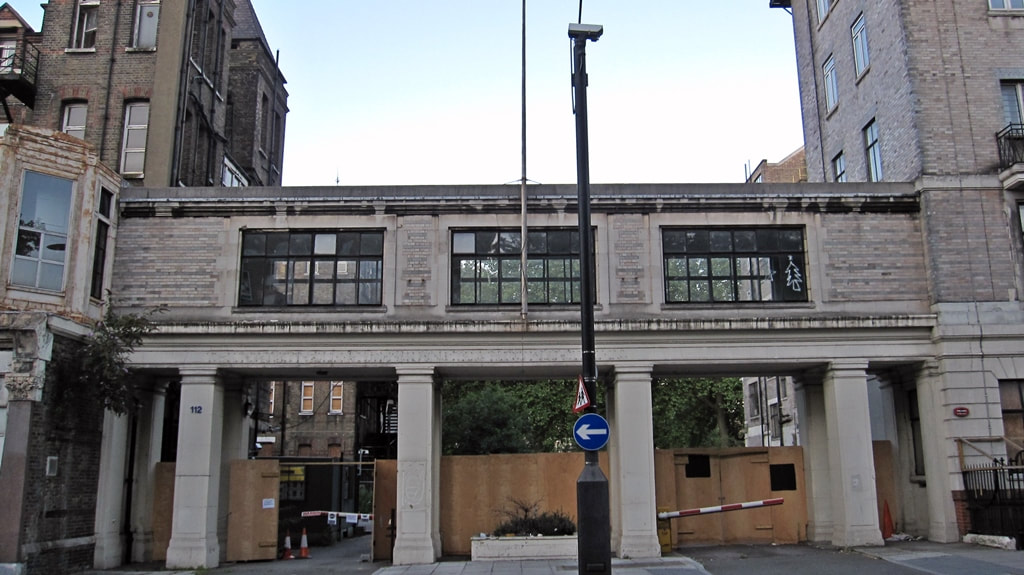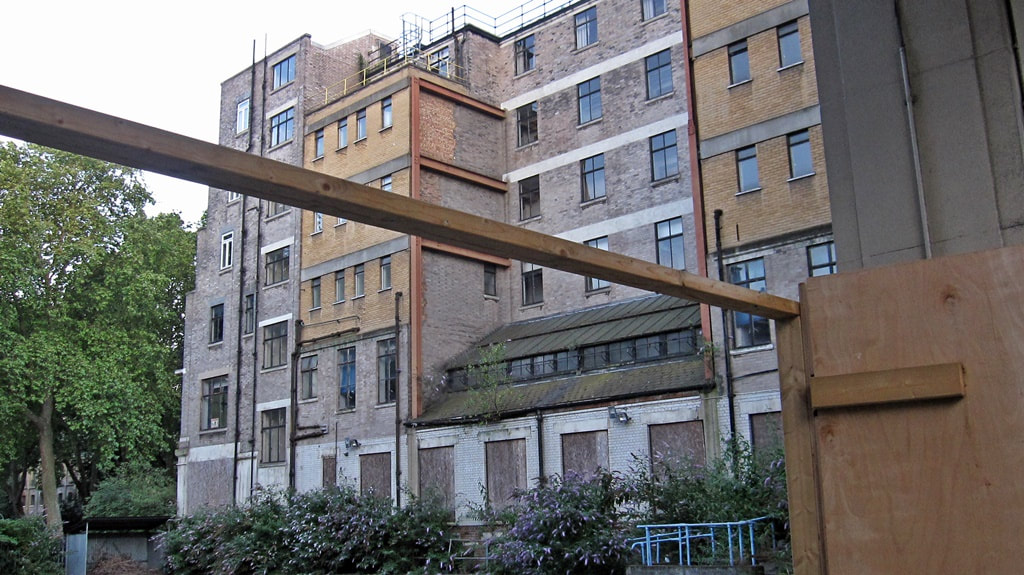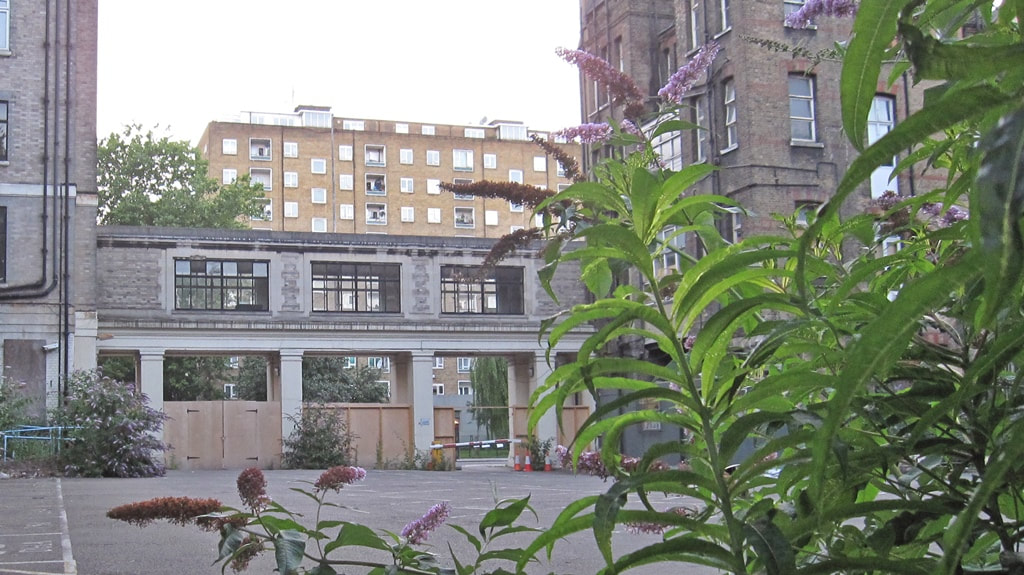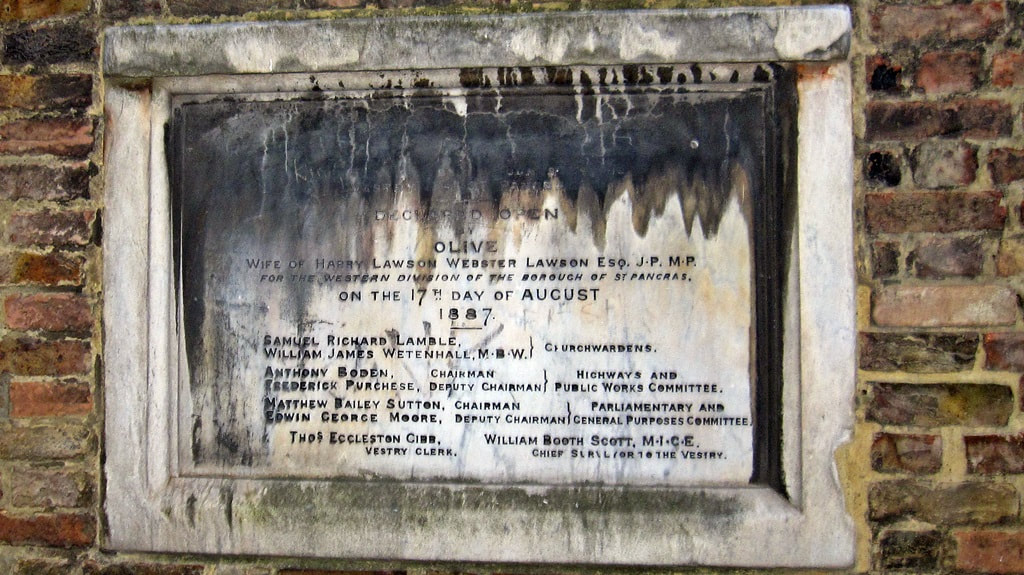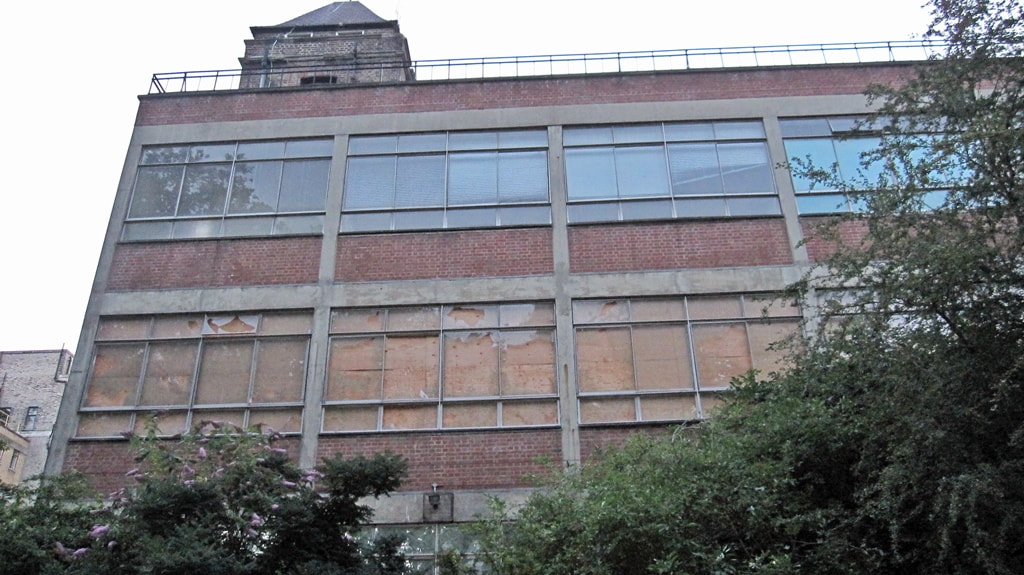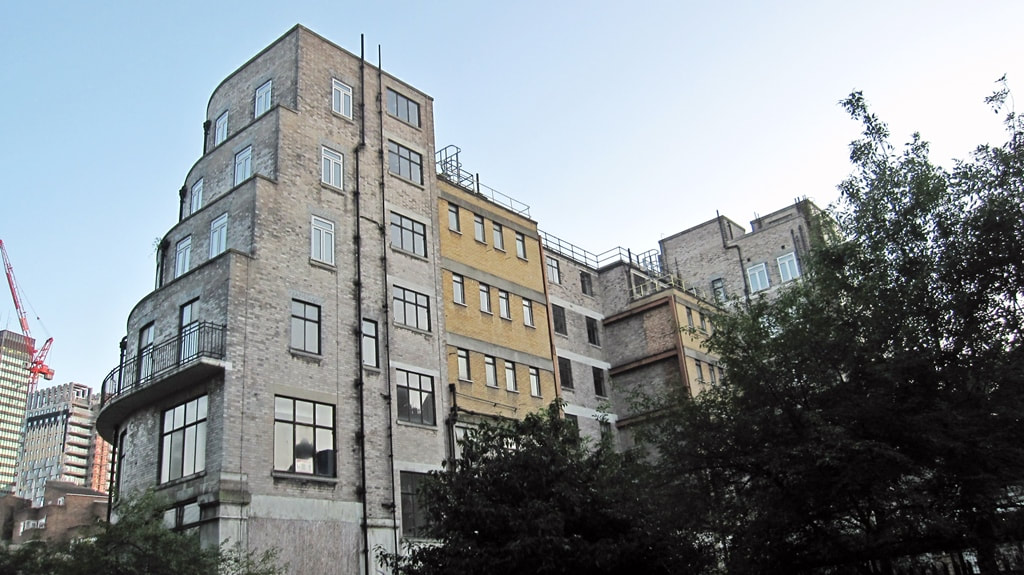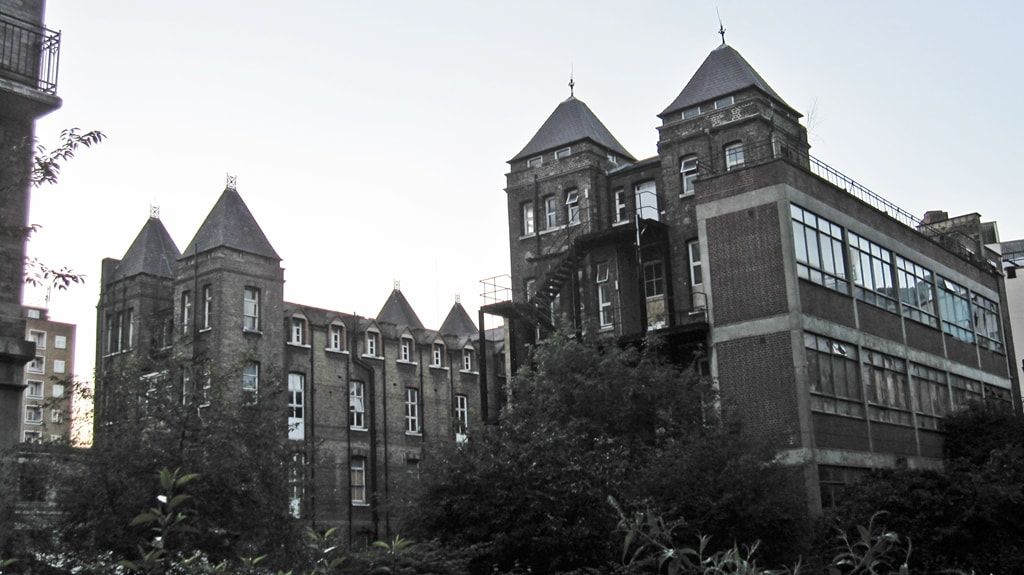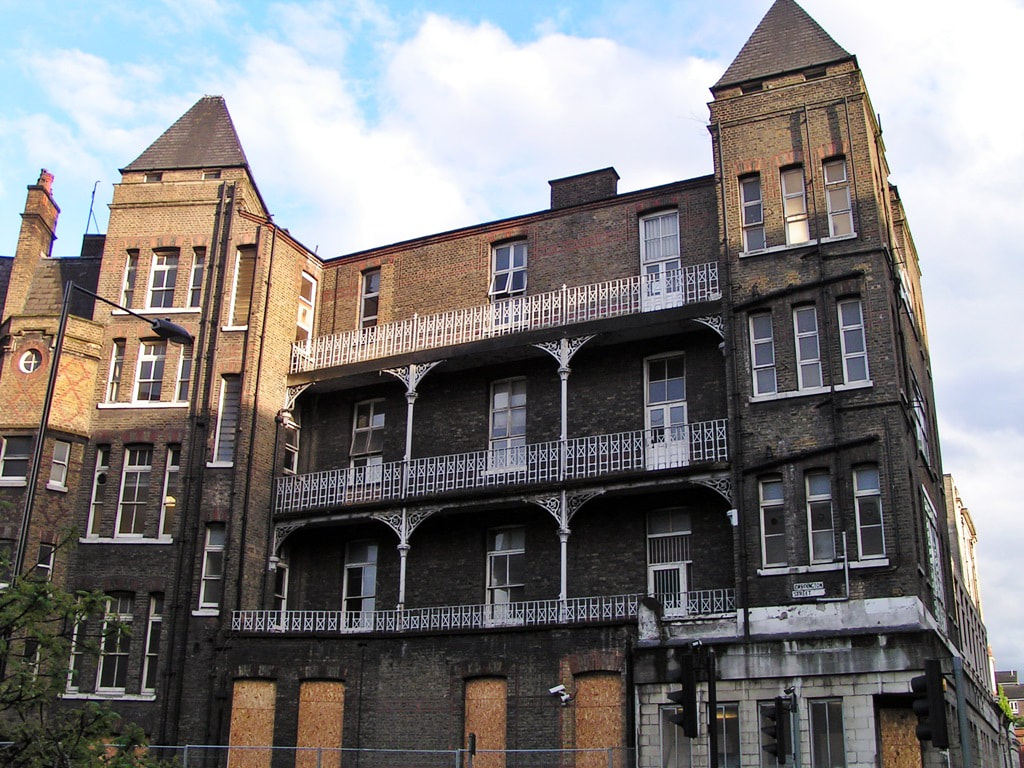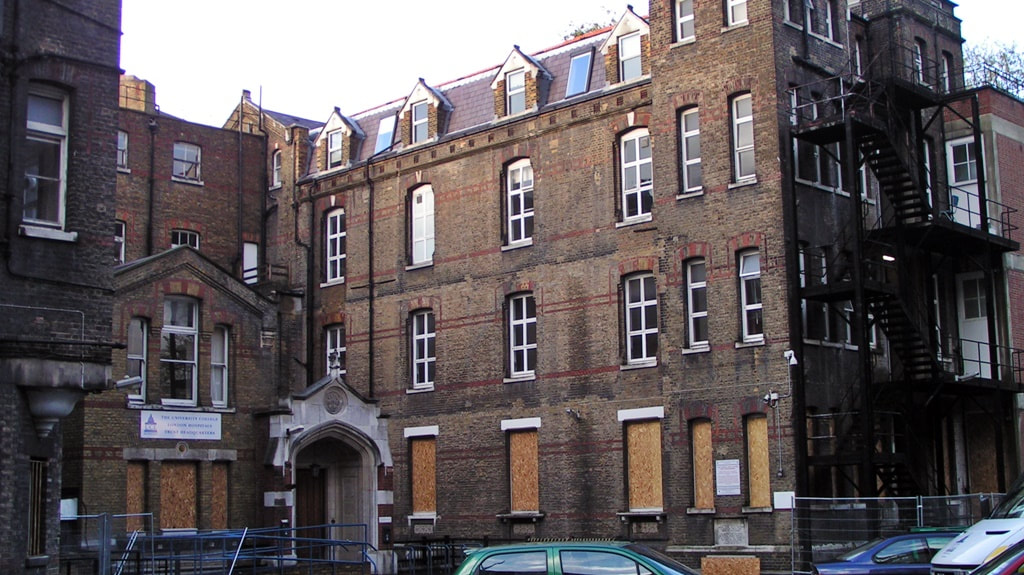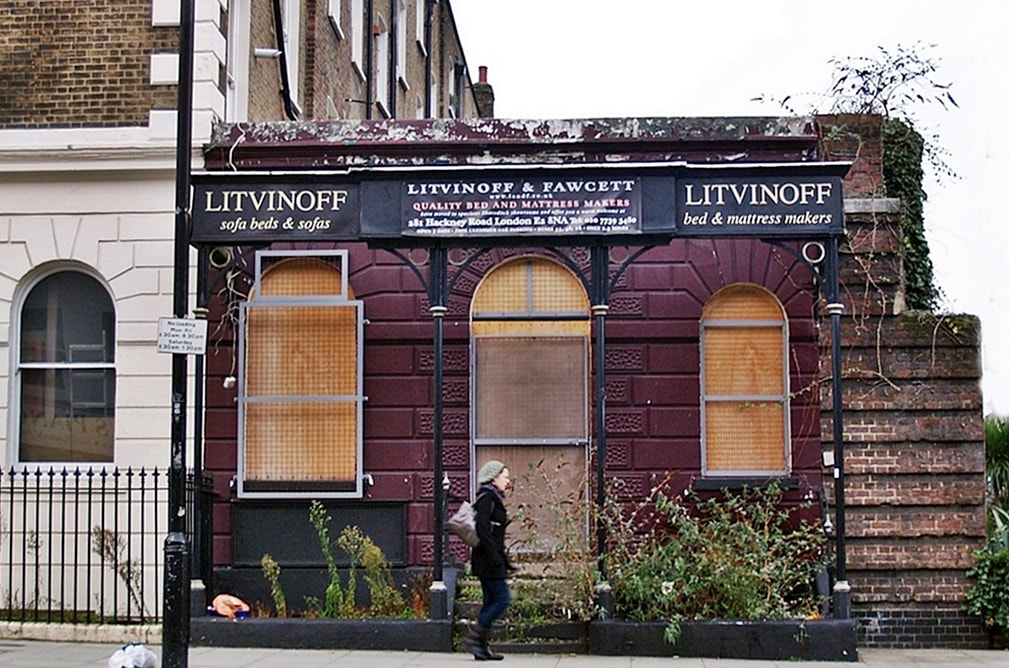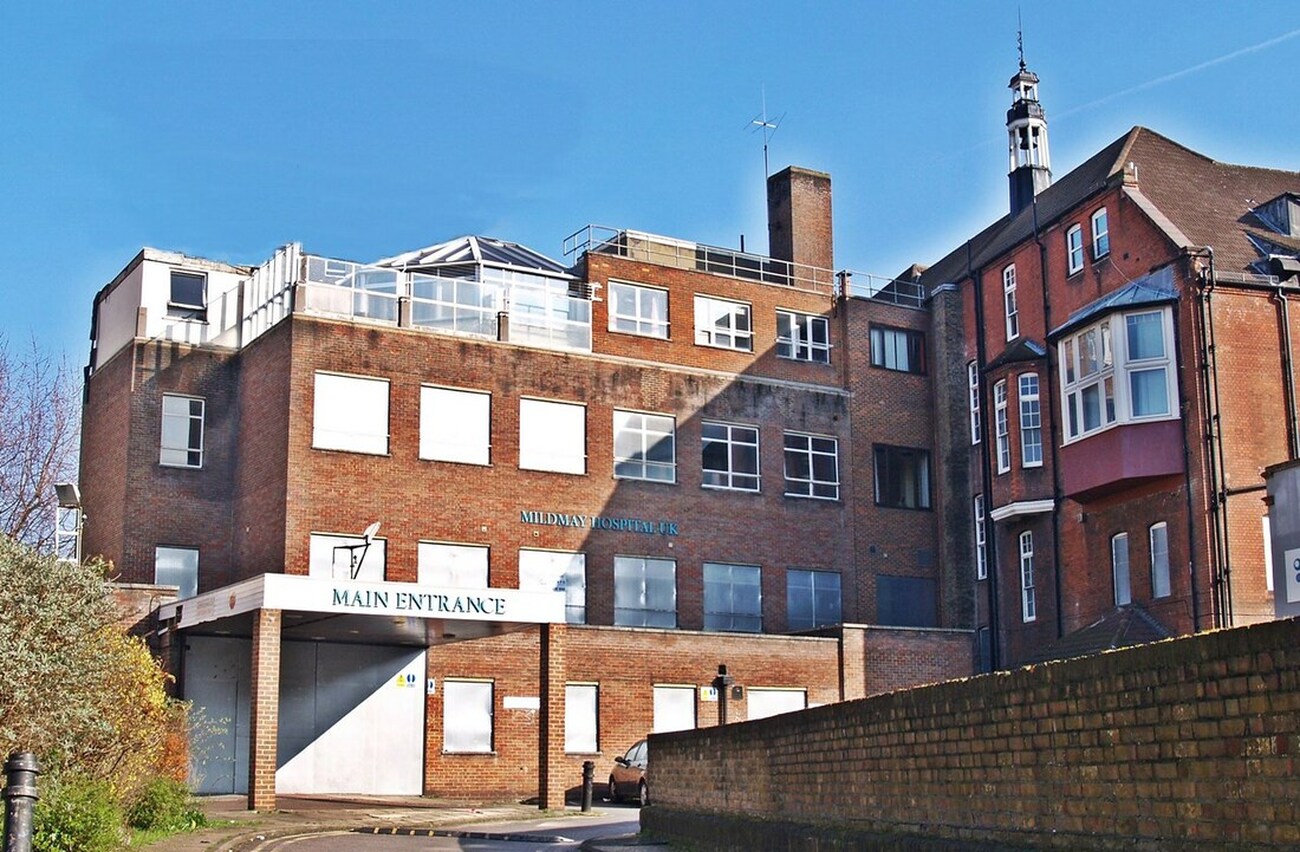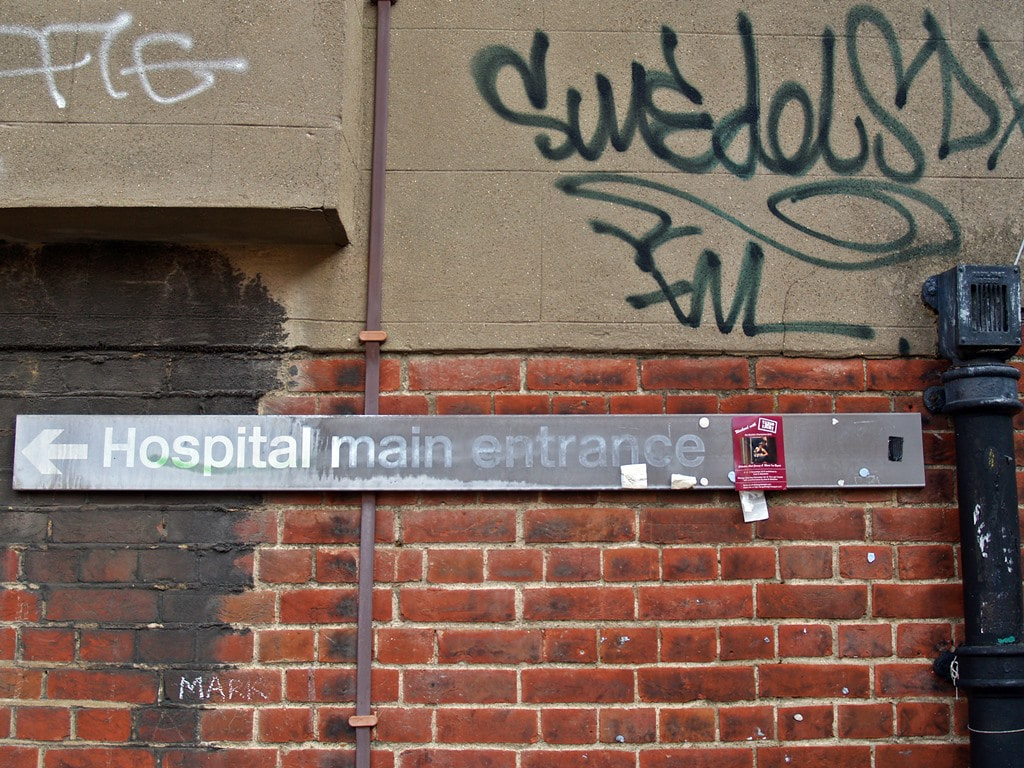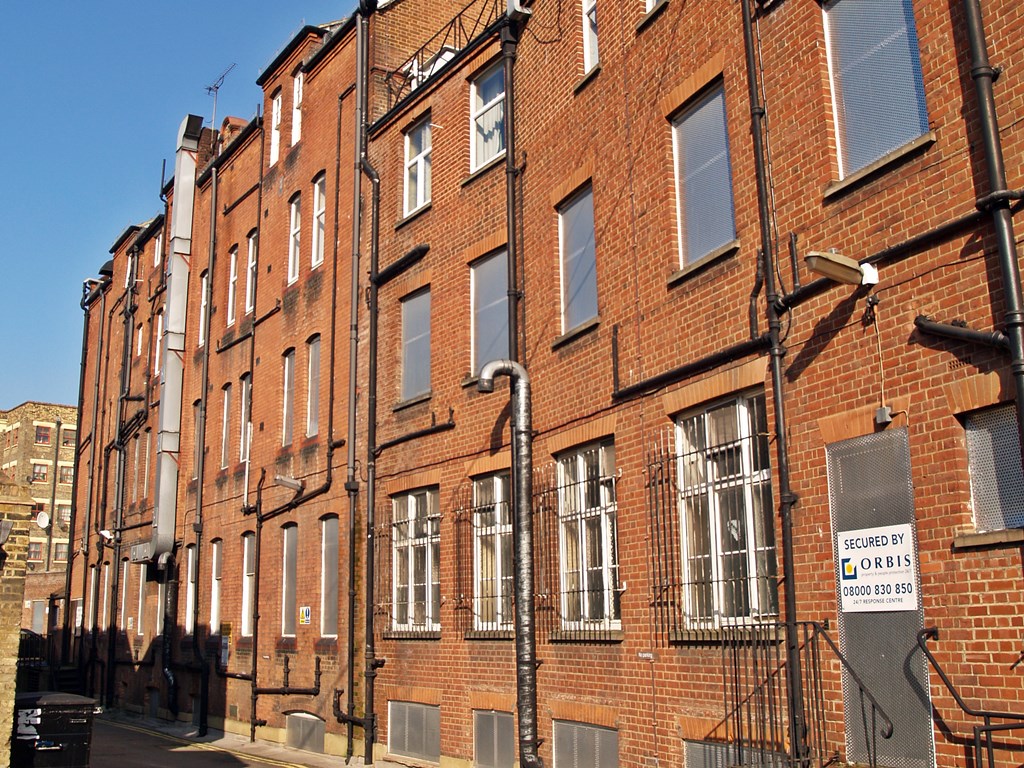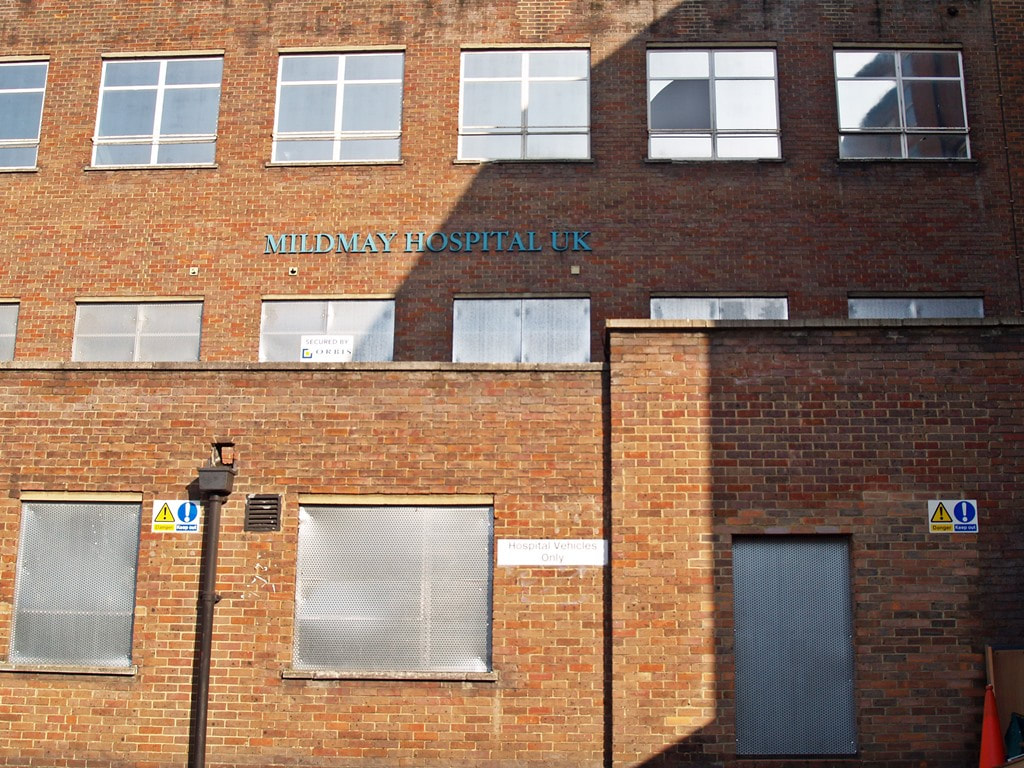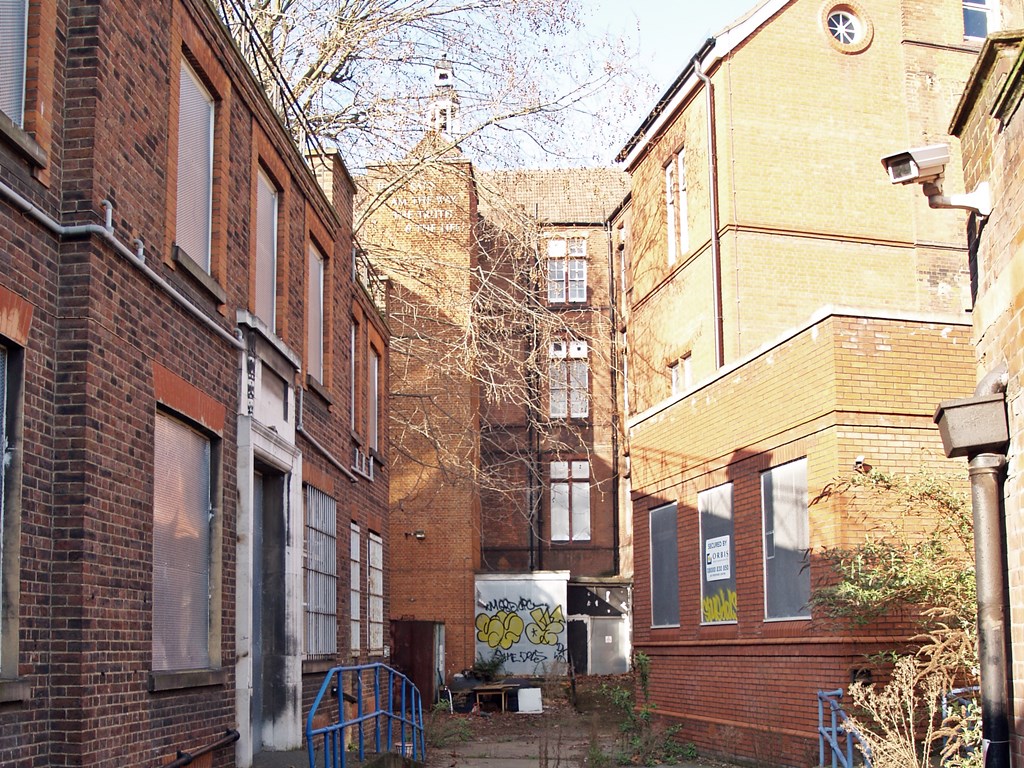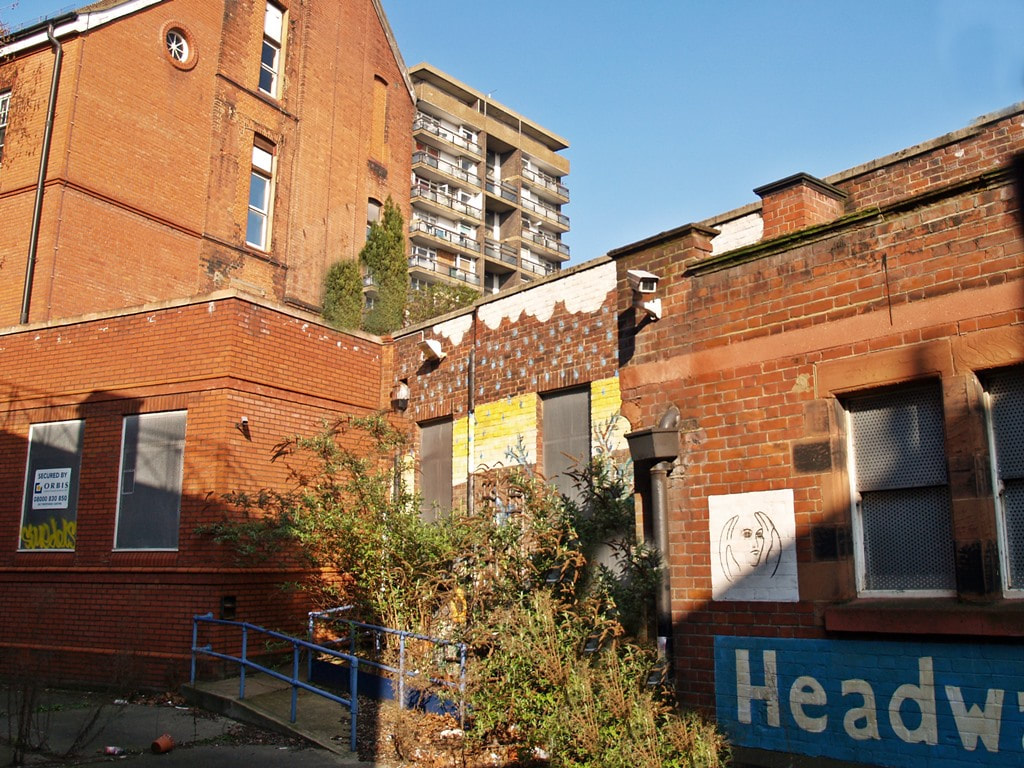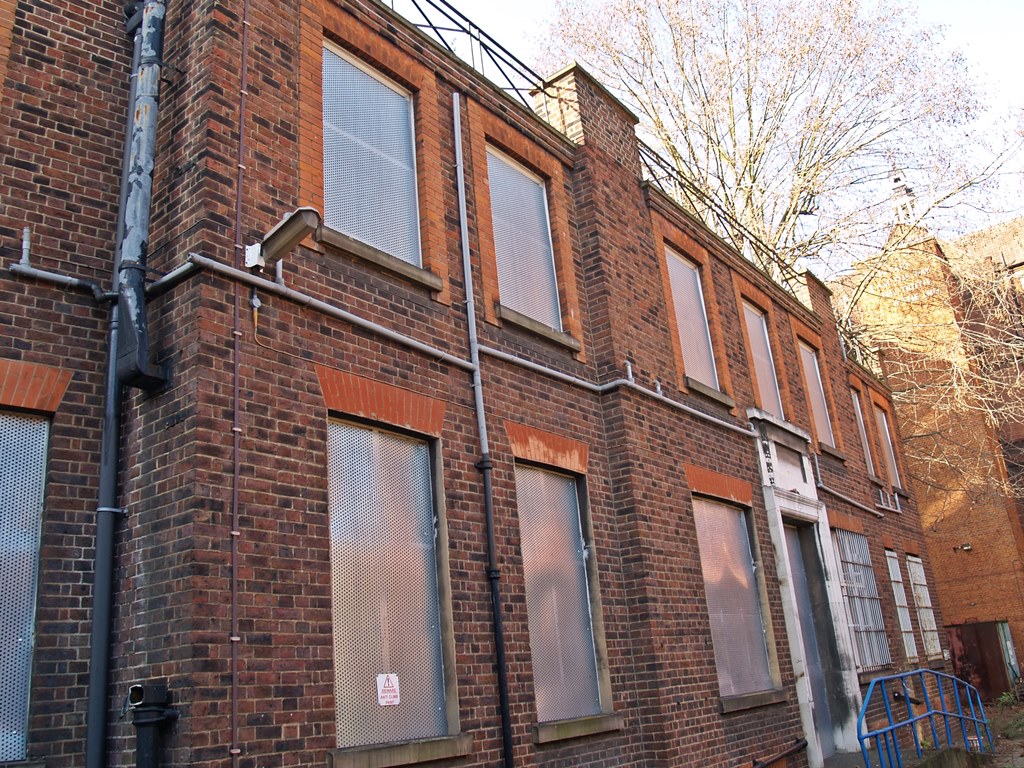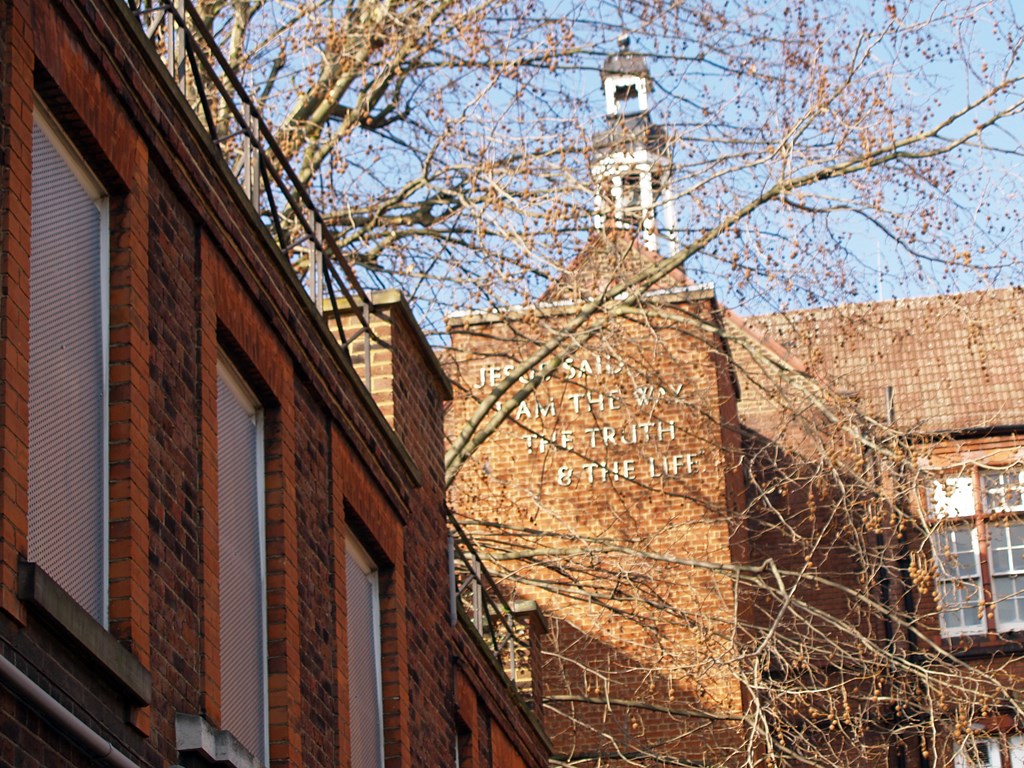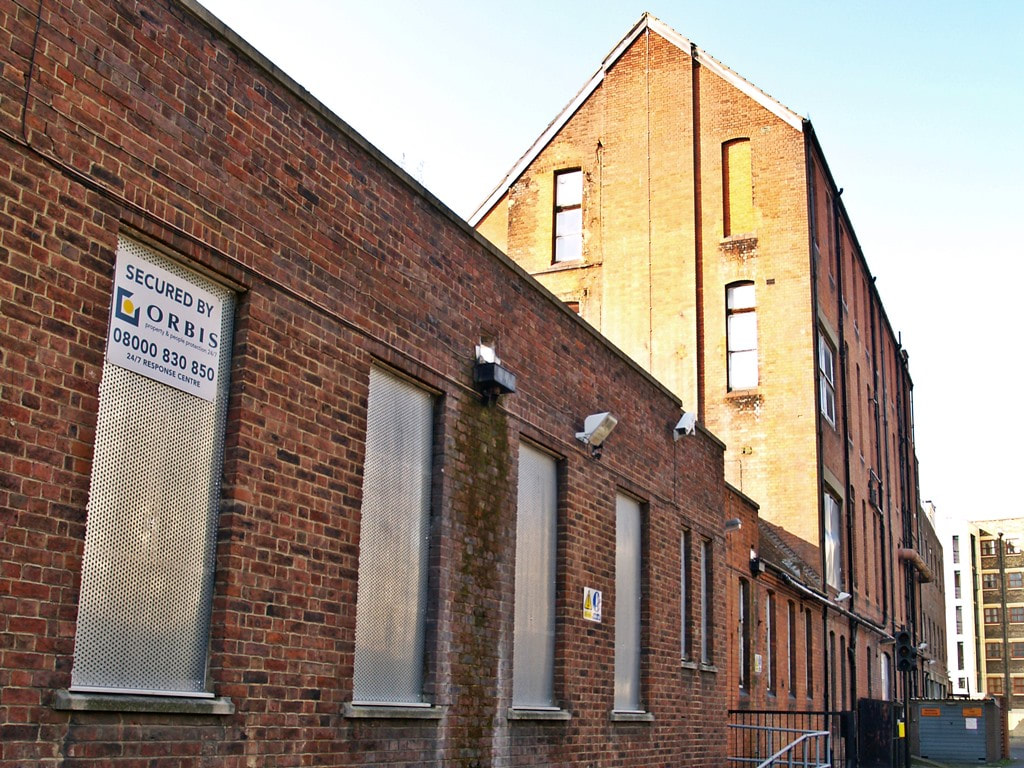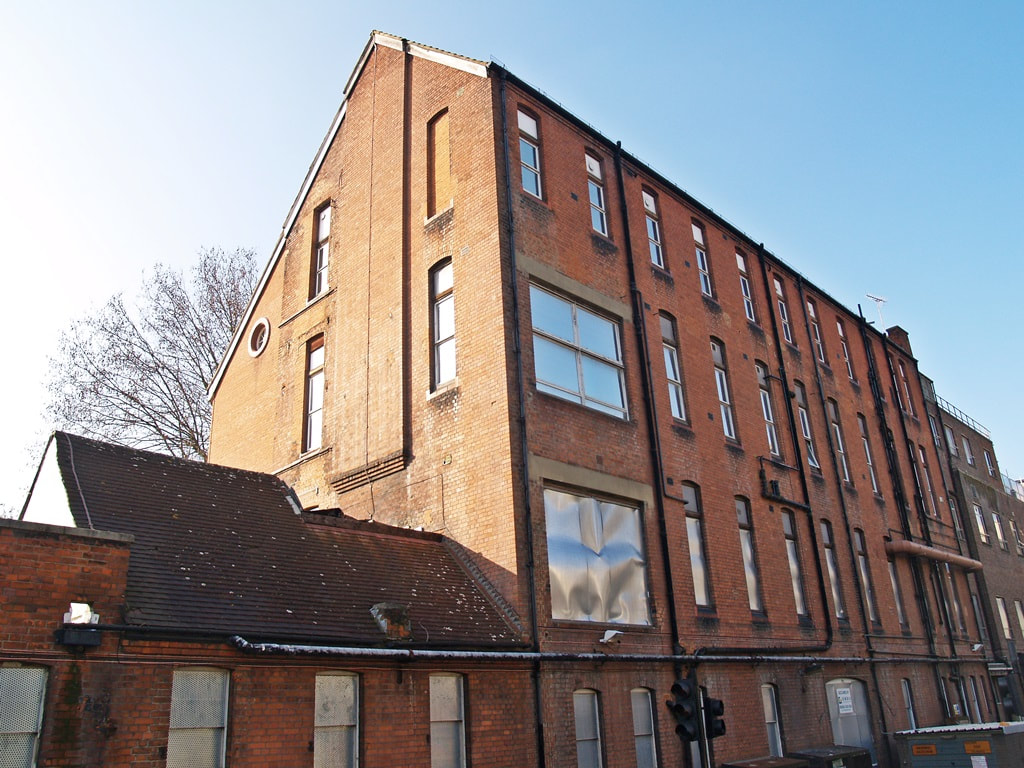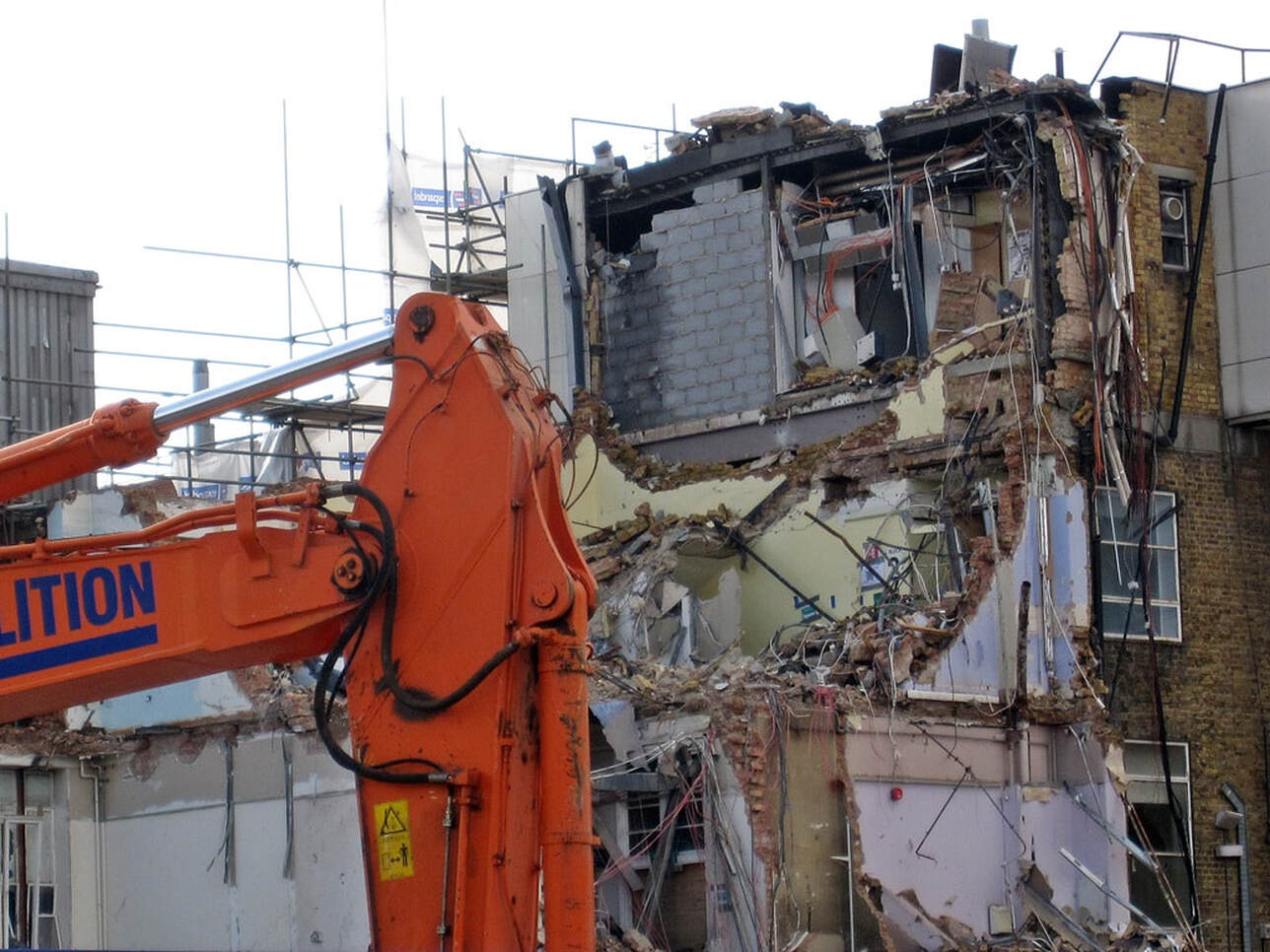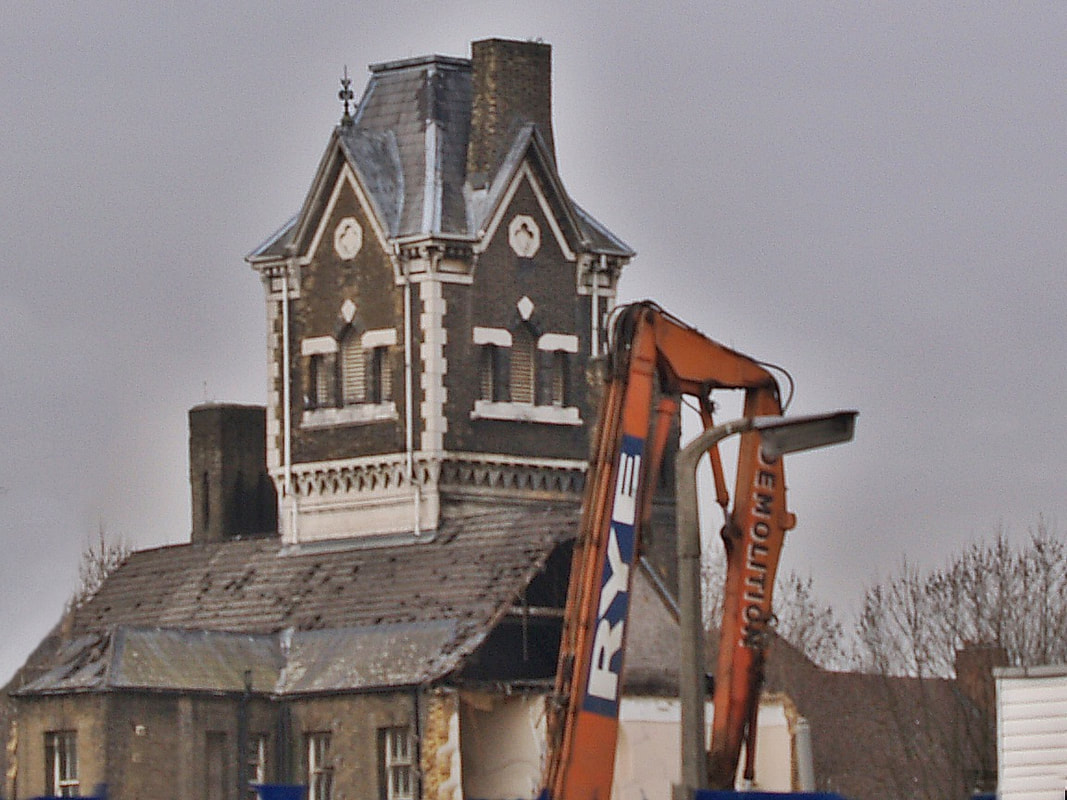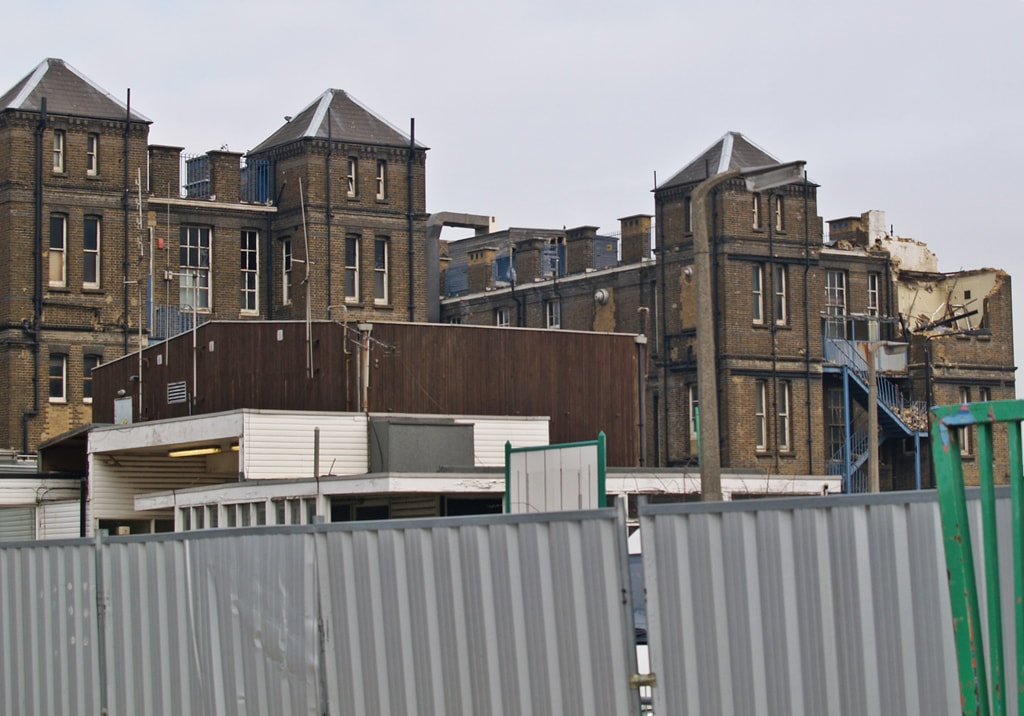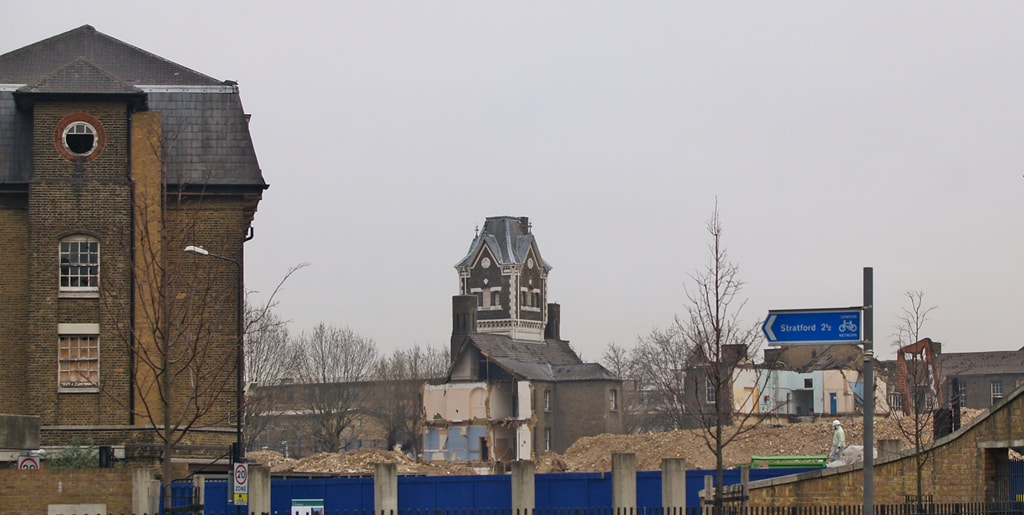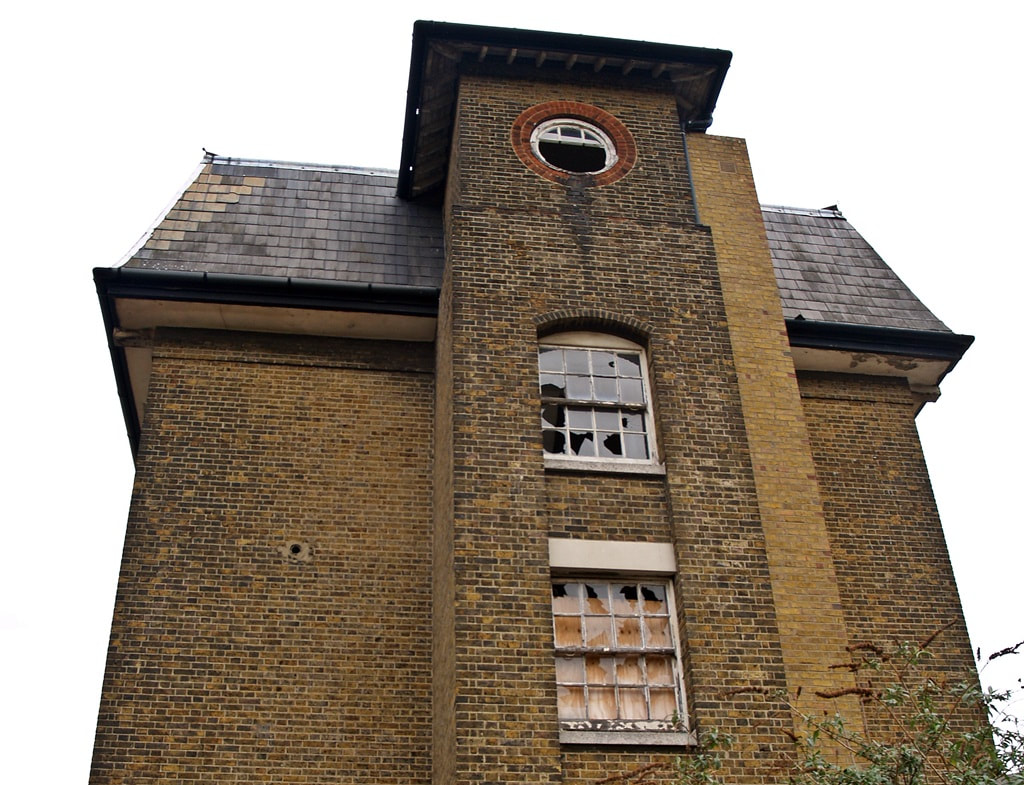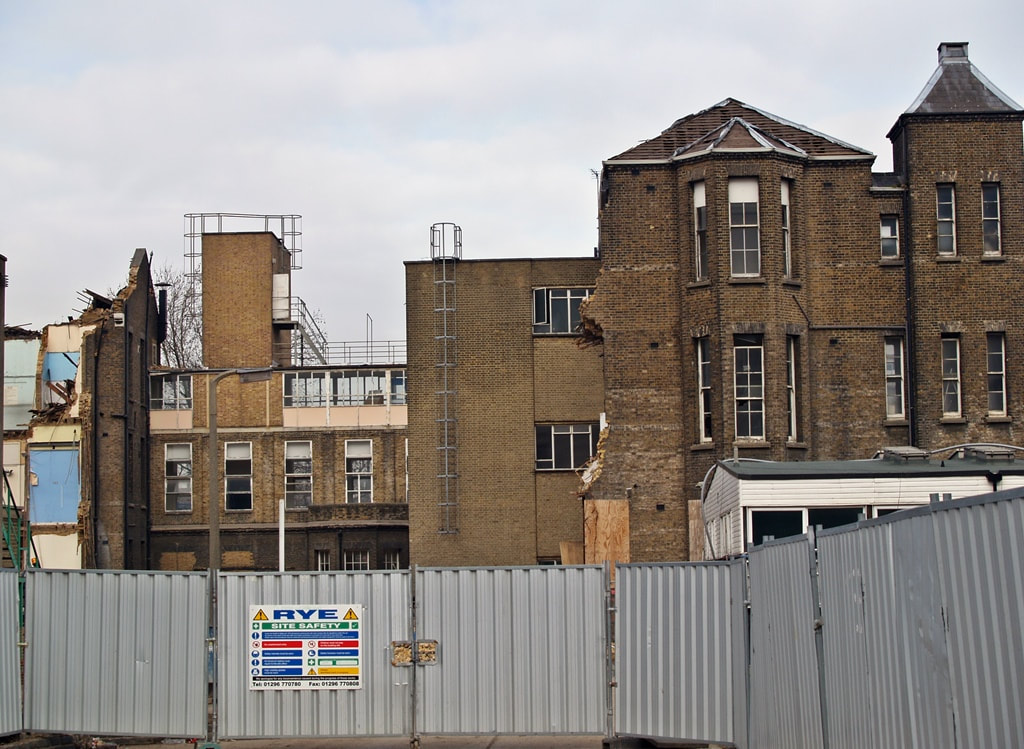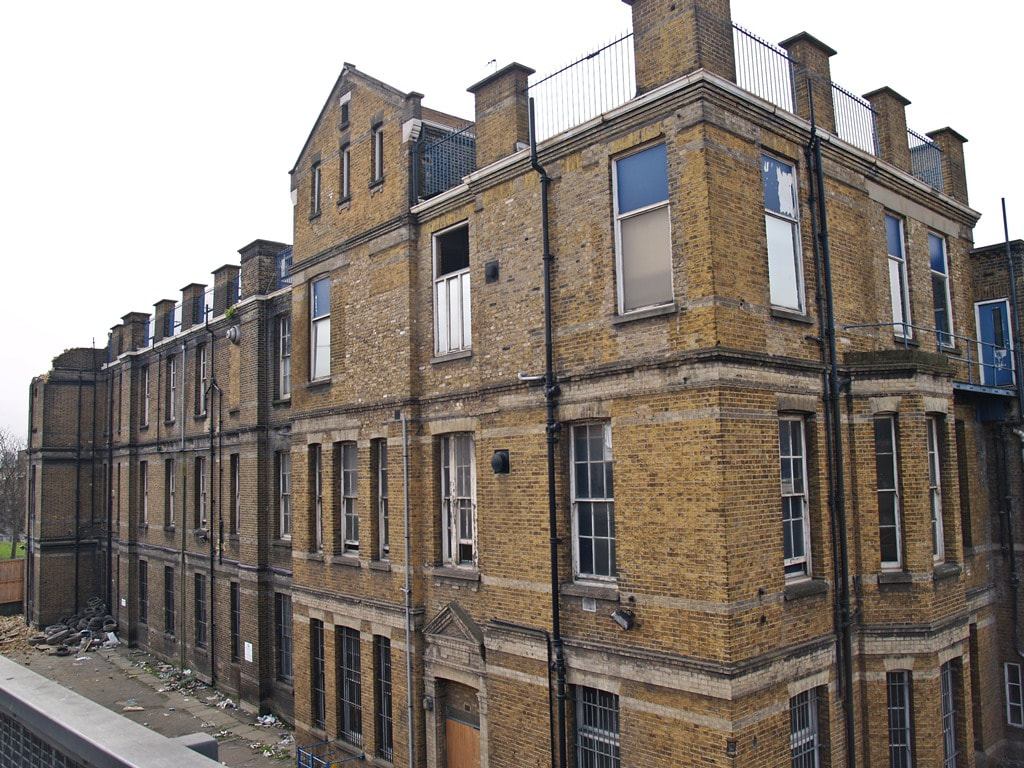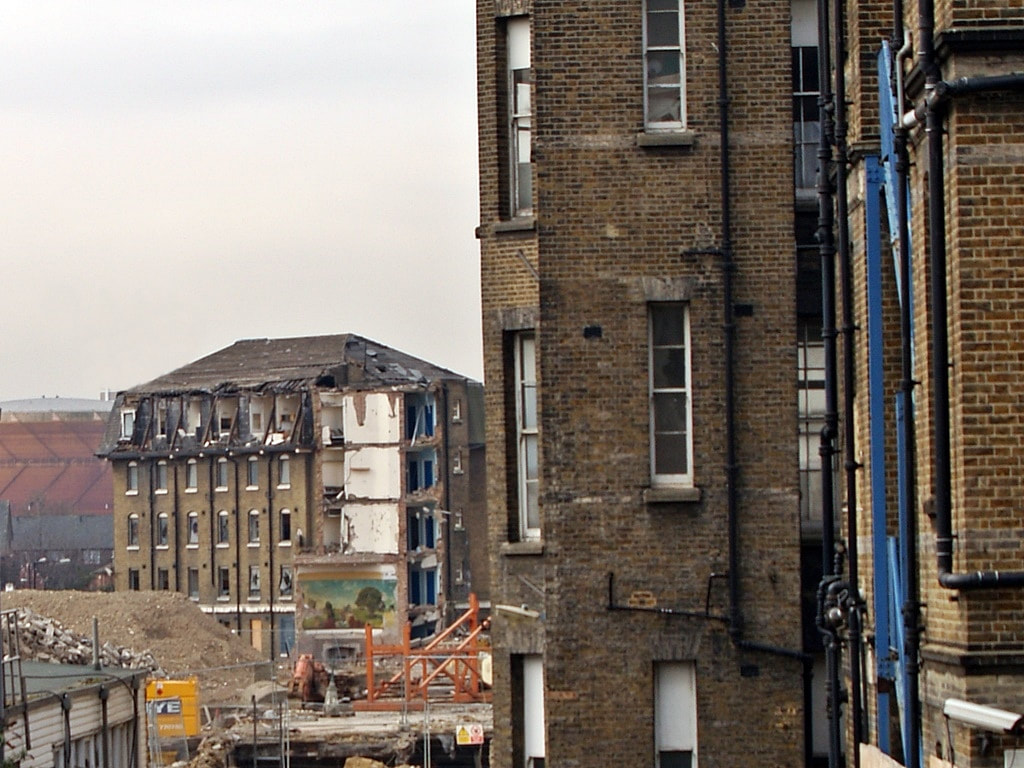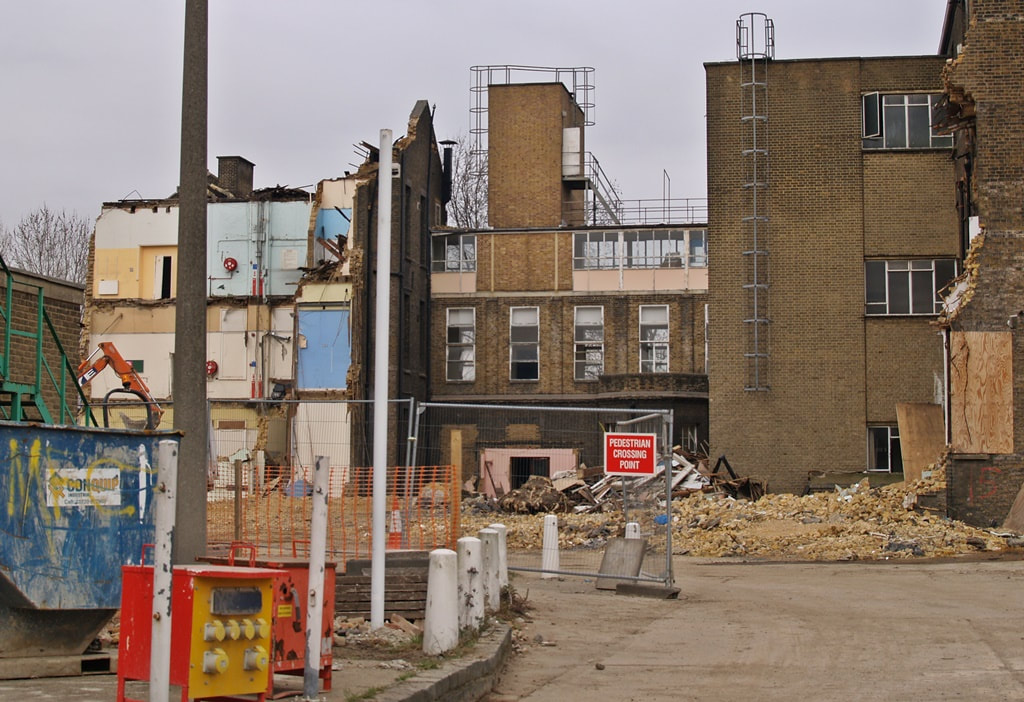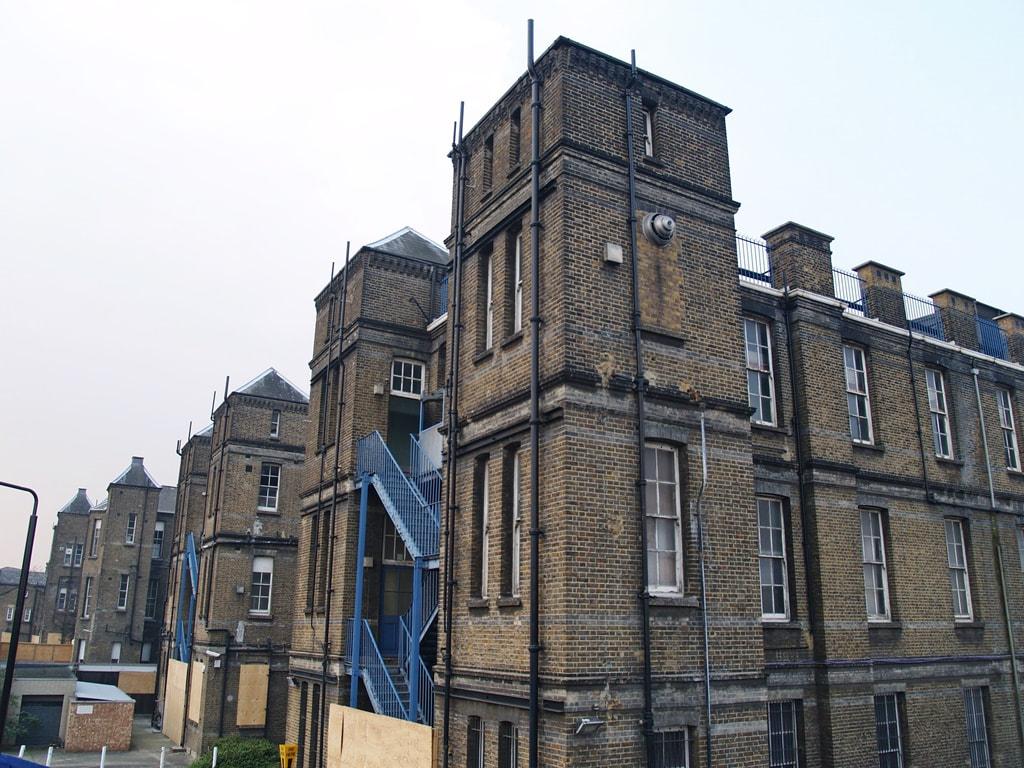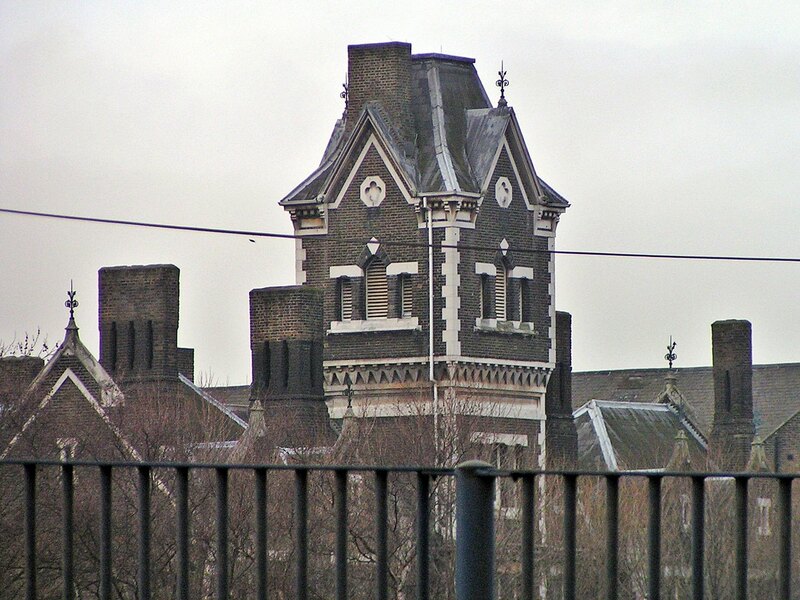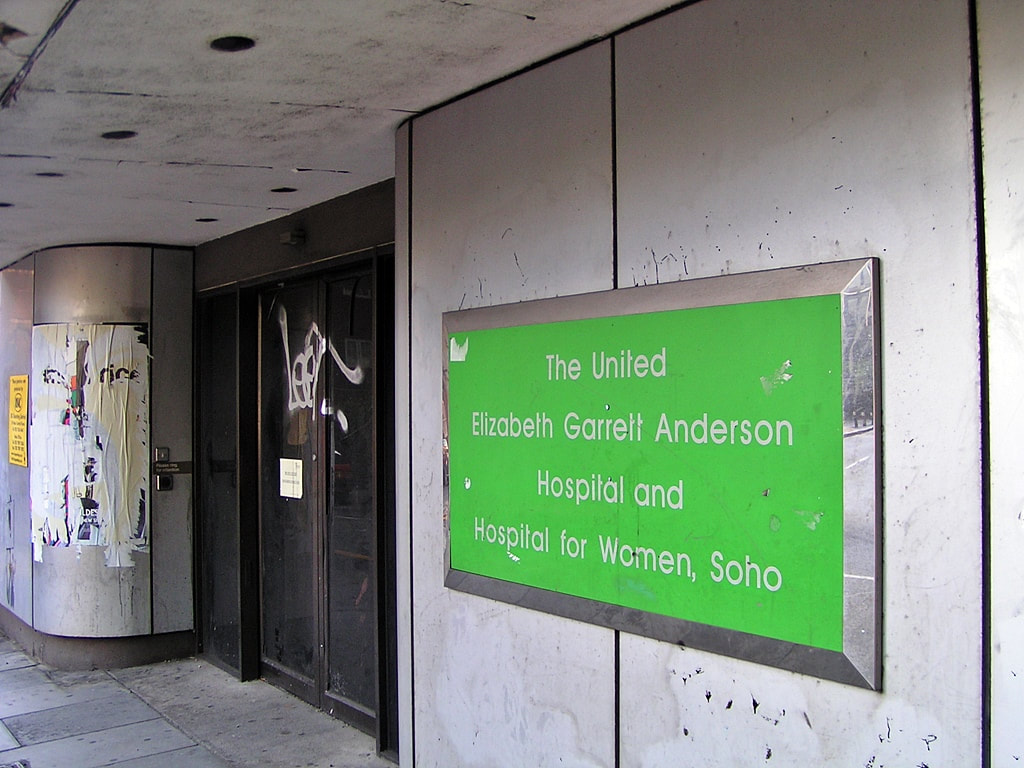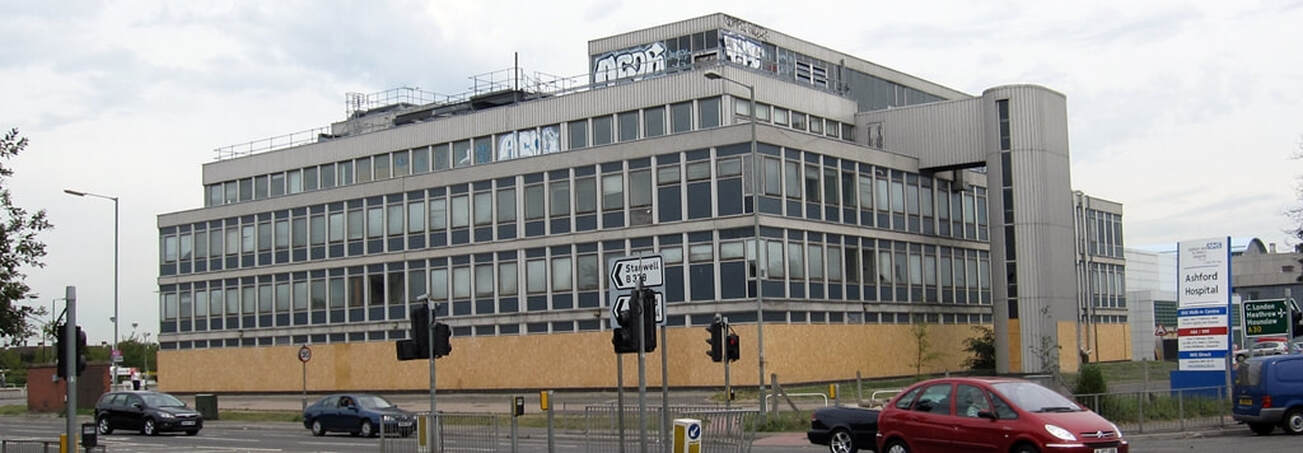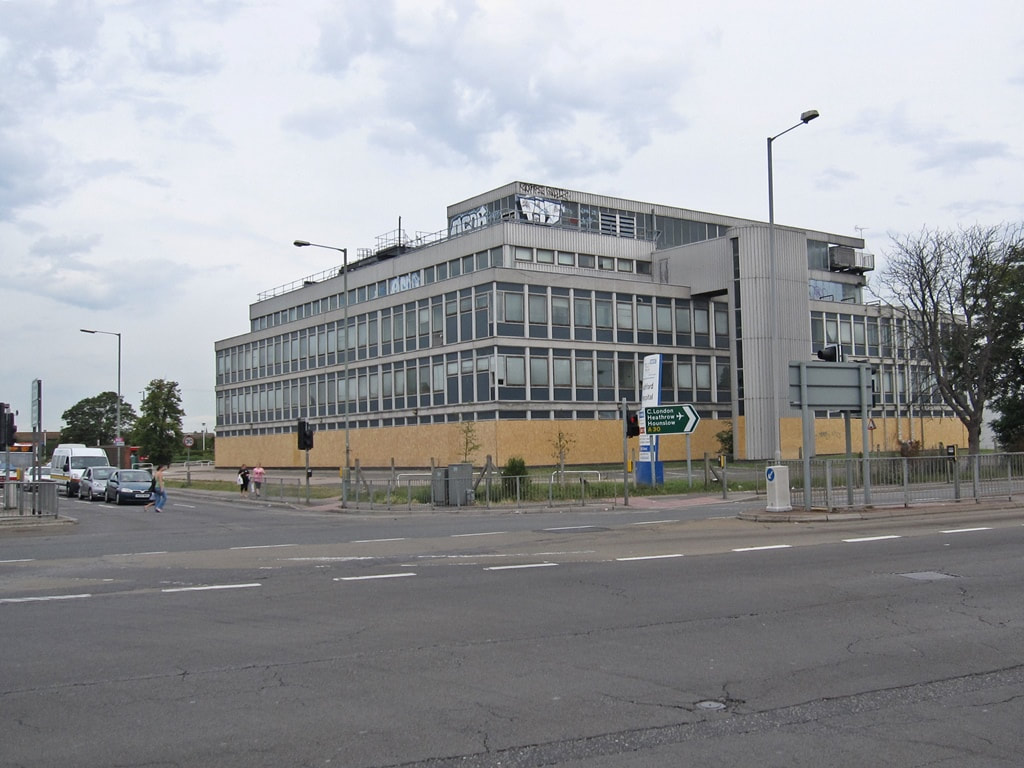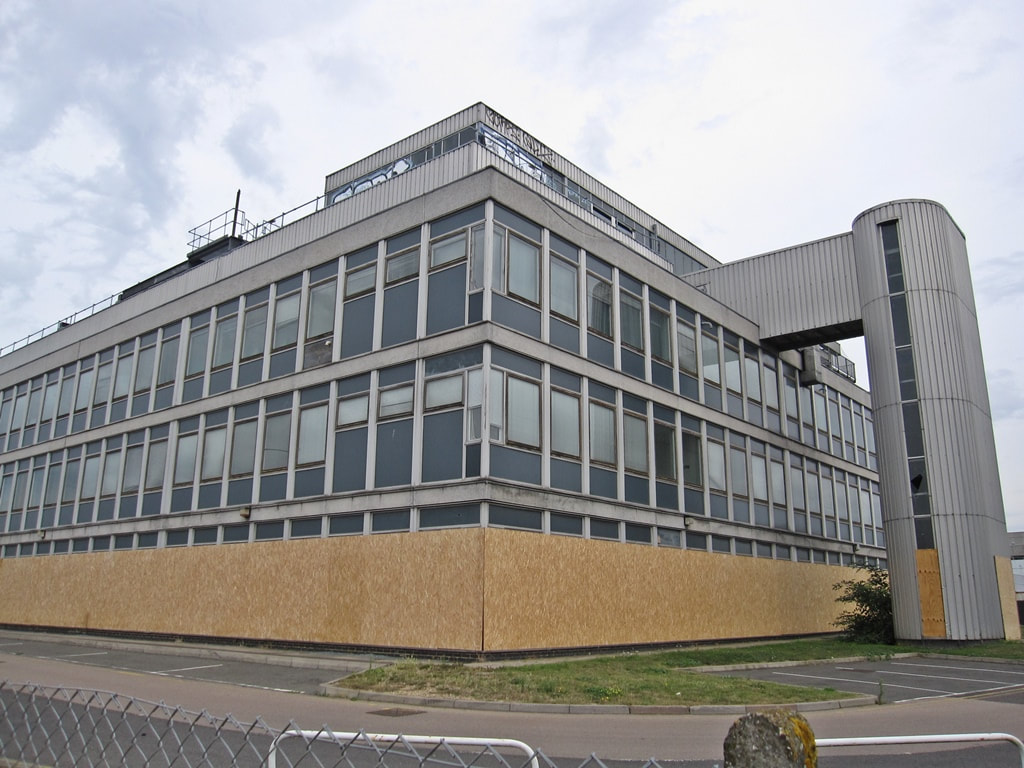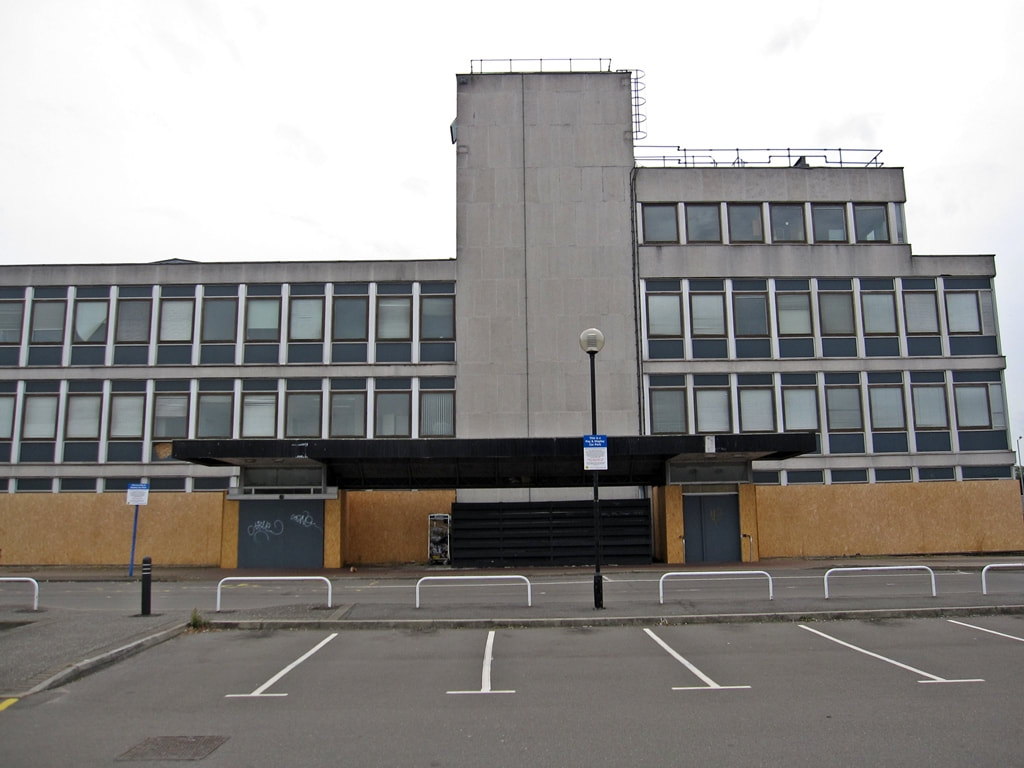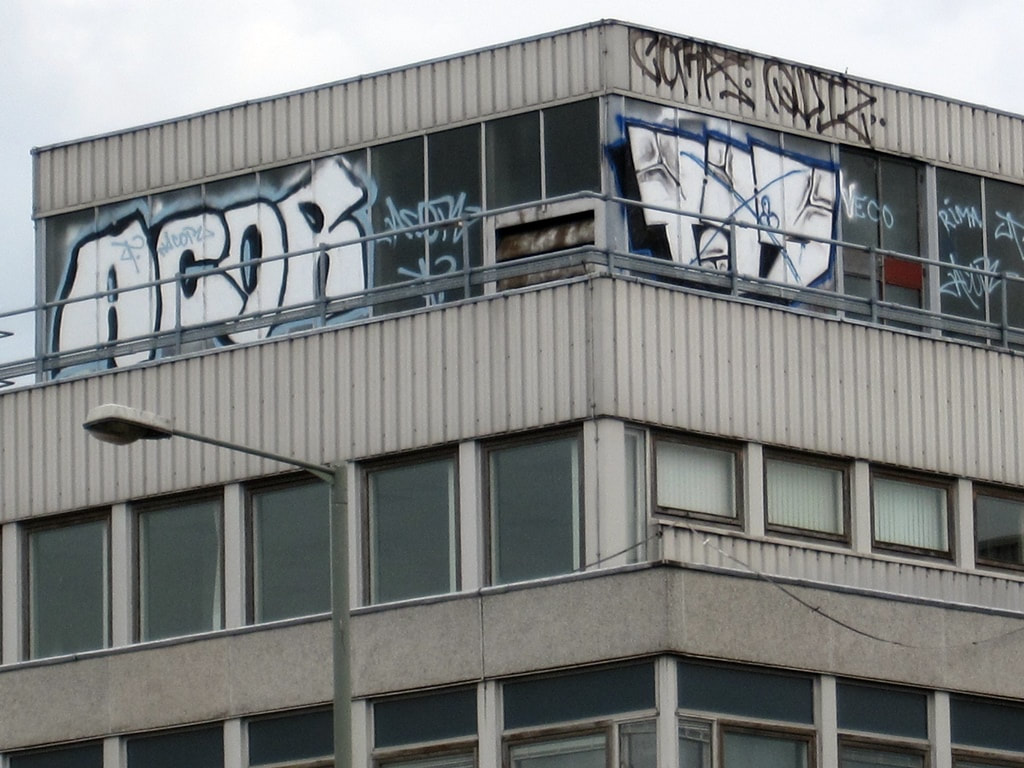LETONSTONE , E11 - Whipps Cross University Hospital
David Beckham, Jonathan Ross, David Bailey, Graham Gooch & Harry Kane were all born in this hospital which goes back on this site to 1900 when it was an infirmary for the West Ham Union workhouse and after the World War 1 it became a general hospital and the name was changed to Whipps Cross Hospital.
Whipps Cross still provides a full range of local general hospital services and is home to one of the busiest A&E departments in the country. Approximately a third of the size of the site of the current hospital is vacant. Buildings that were used for nurses’ accommodation have been derelict for around 15 years. Healthwatch Havering wrote in 2015 that this plot is estimated to be worth £15 million and "there have been talks about selling this land to fund refurbishment of the hospital and to provide accommodation for staff, but there is robust opposition from local people against this. All talks have been put on hold for the time being".
Whipps Cross still provides a full range of local general hospital services and is home to one of the busiest A&E departments in the country. Approximately a third of the size of the site of the current hospital is vacant. Buildings that were used for nurses’ accommodation have been derelict for around 15 years. Healthwatch Havering wrote in 2015 that this plot is estimated to be worth £15 million and "there have been talks about selling this land to fund refurbishment of the hospital and to provide accommodation for staff, but there is robust opposition from local people against this. All talks have been put on hold for the time being".
MARYLEBONE ROAD, NW1 Samaritan Hospital for Women
This red brick and terracotta hospital was opened in 1889. In 1904, the Hospital became a dedicated gynaecological hospital.
On 17th June 1905 a new building for the Out-Patients Department, with a Nurses' Home above, was opened immediately behind the Hospital In November 1934 a new extension was opened. In 1987, the Hospital building was listed by English Heritage as Grade II. The Hospital closed in 1997 and has remained empty ever since.
Politician Murad Qureshi recently asked NHS England what is happening with the building. It is owned along with the adjacent Western Eye Hospital by Imperial College Healthcare NHS Trust and earmarked for off-setting redevelopment costs on other major sites.
Murad writes on his blog: "But does it really take 20 years to sort it out with these buildings which could have been put to good alternative use in the meantime rather than lying empty for so long...This potential makes available the resources released for this site on the running costs of NHS locally in City of Westminster and West Central during the present winter crisis.
During all those 20 years as well, no proposed scheme has been submitted through planning at City of Westminster.
Now that's a thought that could focus the minds of the property managers of the NHS after 20 years of doing nothing much on the site and a winter crisis begging for more resources for our social care. Whatever options are pursued eventually, this grand old building is probably worth 10s of millions, a princely sum no one could have imagined in the middle of the 19th century"
On 17th June 1905 a new building for the Out-Patients Department, with a Nurses' Home above, was opened immediately behind the Hospital In November 1934 a new extension was opened. In 1987, the Hospital building was listed by English Heritage as Grade II. The Hospital closed in 1997 and has remained empty ever since.
Politician Murad Qureshi recently asked NHS England what is happening with the building. It is owned along with the adjacent Western Eye Hospital by Imperial College Healthcare NHS Trust and earmarked for off-setting redevelopment costs on other major sites.
Murad writes on his blog: "But does it really take 20 years to sort it out with these buildings which could have been put to good alternative use in the meantime rather than lying empty for so long...This potential makes available the resources released for this site on the running costs of NHS locally in City of Westminster and West Central during the present winter crisis.
During all those 20 years as well, no proposed scheme has been submitted through planning at City of Westminster.
Now that's a thought that could focus the minds of the property managers of the NHS after 20 years of doing nothing much on the site and a winter crisis begging for more resources for our social care. Whatever options are pursued eventually, this grand old building is probably worth 10s of millions, a princely sum no one could have imagined in the middle of the 19th century"
WHITECHAPEL, E1 - Royal London Hospital
Originally named the London Infirmary at a nearby site in 1740. The London Hospital opened at these premises in 1757 and after extensions were added, it was the largest hospital in the country by the end of the 19th century. In 1990, the Queen visited the hospital and added "Royal" to the name, to celebrate the 250th anniversary of its founding.
The hospital treated the Cholera epidemics of the nineteenth century, received the first wounded to return from the Western Front during the First World War. It suffered heavy bomb damage during the Blitz. From the first use of X-rays in a British hospital to running the first emergency helicopter service to carry a doctor on board, as well as extensive teaching facilities, the hospital played an important part in the development of healthcare.
In 2012, the Royal London moved to a new building to the rear of these premises on land belonging to some of the hospital's previously demolished facilities. The old building is to restored to create a civic centre for Tower Hamlets Council as part of their 'Whitechapel Vision' – one of London’s biggest regeneration projects.
The hospital treated the Cholera epidemics of the nineteenth century, received the first wounded to return from the Western Front during the First World War. It suffered heavy bomb damage during the Blitz. From the first use of X-rays in a British hospital to running the first emergency helicopter service to carry a doctor on board, as well as extensive teaching facilities, the hospital played an important part in the development of healthcare.
In 2012, the Royal London moved to a new building to the rear of these premises on land belonging to some of the hospital's previously demolished facilities. The old building is to restored to create a civic centre for Tower Hamlets Council as part of their 'Whitechapel Vision' – one of London’s biggest regeneration projects.
COLINDALE, NW9 - Colindale Hospital (aka Central London District Sick Asylum)
Officially closed in 1996 . A few buildings were still used for elderly mental health patients until approx 2009.
Central London District Sick Asylum was erected in 1898-1900 "in the country" at Colindale. The site cost £12,500 and the foundation stone was laid on 6th June 1898. Its layout was based on the pavilion system with separate blocks connected by a central linking corridor. A central administrative block contained offices, nurses' rooms, the boardroom and chapel, with kitchens and laundry to the rear. At each side were placed two two-storey ward blocks: one for TB patients, one for children, one for infectious children, and one for casualty cases. In 1913, the hospital was sold to the newly formed City of Westminster Union. In 1920, it was taken over by the Metropolitan Asylums Board as a sanatorium for advanced TB cases. From 1930, control passed to the London County Council then, in 1948, it joined the new National Health Service & renamed Colindale Hospital.
JM writes to Derelict London "I was a patient in Colindale Hospital in my teens. Originally placed in Edgware General, but a whole lot of patients were transferred over to Colindale. I was there for six months being treated for TB. It was in the 1950s and the wards were the typical large affairs with some 30 plus beds and some side rooms or balconies. The organisation was such that it catered for long-term treatment. Depending upon level of infection/recovery, some patients were 'allowed out' on day or weekend passes."
Colindale Hospital has now been demolished apart from the administration building which has been converted into flats called Jenner Court. There is now a massive new housing development of 700 apartments in the grounds of the hospital called Pulse. Colindale Hospital featured in the original edition of the Derelict London book. Then and Now pics can be found in Derelict London: All New Edition.
Central London District Sick Asylum was erected in 1898-1900 "in the country" at Colindale. The site cost £12,500 and the foundation stone was laid on 6th June 1898. Its layout was based on the pavilion system with separate blocks connected by a central linking corridor. A central administrative block contained offices, nurses' rooms, the boardroom and chapel, with kitchens and laundry to the rear. At each side were placed two two-storey ward blocks: one for TB patients, one for children, one for infectious children, and one for casualty cases. In 1913, the hospital was sold to the newly formed City of Westminster Union. In 1920, it was taken over by the Metropolitan Asylums Board as a sanatorium for advanced TB cases. From 1930, control passed to the London County Council then, in 1948, it joined the new National Health Service & renamed Colindale Hospital.
JM writes to Derelict London "I was a patient in Colindale Hospital in my teens. Originally placed in Edgware General, but a whole lot of patients were transferred over to Colindale. I was there for six months being treated for TB. It was in the 1950s and the wards were the typical large affairs with some 30 plus beds and some side rooms or balconies. The organisation was such that it catered for long-term treatment. Depending upon level of infection/recovery, some patients were 'allowed out' on day or weekend passes."
Colindale Hospital has now been demolished apart from the administration building which has been converted into flats called Jenner Court. There is now a massive new housing development of 700 apartments in the grounds of the hospital called Pulse. Colindale Hospital featured in the original edition of the Derelict London book. Then and Now pics can be found in Derelict London: All New Edition.
FITZROVIA - UCL Middlesex Hospital (aka Strand Union Workhouse)
This Cleveland Street site, these days overlooked from the BT Tower, was built as a workhouse in 1775-78 for the parish of St Paul’s Covent Garden. It became known as the Strand Union Workhouse in 1836. Land was also used as an additional parish burial ground between 1780 and 1853. Parish burial records suggest that “the total number of interments made at the site might be between 9,000 and 10,000”.
It is believed that this workhouse inspired Charles Dickens' Oliver Twist. Dickens is understood to have lived a few doors away from the building for nearly five years, in his formative years. Historian Dr Paul Schlicke, editor of The Dickens Companion, said that the workhouse was used as the model for Dickens' famous novel Oliver Twist. "It's inconceivable it wasn't that workhouse," he said. "He lived so close to it. He would have been seeing it, hearing it. It will have been the one he knew best." An article in the medical journal The Lancet in 1865, reporting on the grim conditions in the workhouse, hugely contributed to the passing of the 1867 Metropolitan Poor Act. The Central London Sick Asylum District, an amalgam of former Poor Law Unions, then used the building as an infirmary until it became part of the Middlesex Hospital in 1927 and used up until 2005 as an outpatients department. When I visited in 2008 the electricity was still on and medical records and x-rays scattered all over the place.
The site is now being redeveloped with some of the old blocks being converted into flats plus new blocks of flats and offices. Surely, a fair few bodies will be excavated during this process.....The Evening Standard in 2017 reported: "private owners will use an entrance at the front of the refurbished listed building in Cleveland Street, buyers of the affordable properties will reach their homes via a “poor door” down an alley".
It is believed that this workhouse inspired Charles Dickens' Oliver Twist. Dickens is understood to have lived a few doors away from the building for nearly five years, in his formative years. Historian Dr Paul Schlicke, editor of The Dickens Companion, said that the workhouse was used as the model for Dickens' famous novel Oliver Twist. "It's inconceivable it wasn't that workhouse," he said. "He lived so close to it. He would have been seeing it, hearing it. It will have been the one he knew best." An article in the medical journal The Lancet in 1865, reporting on the grim conditions in the workhouse, hugely contributed to the passing of the 1867 Metropolitan Poor Act. The Central London Sick Asylum District, an amalgam of former Poor Law Unions, then used the building as an infirmary until it became part of the Middlesex Hospital in 1927 and used up until 2005 as an outpatients department. When I visited in 2008 the electricity was still on and medical records and x-rays scattered all over the place.
The site is now being redeveloped with some of the old blocks being converted into flats plus new blocks of flats and offices. Surely, a fair few bodies will be excavated during this process.....The Evening Standard in 2017 reported: "private owners will use an entrance at the front of the refurbished listed building in Cleveland Street, buyers of the affordable properties will reach their homes via a “poor door” down an alley".
The interior pictures below were taken in 2008:
EUSTON, NW1 - The National Temperance Hospital
This forlorn building with its turreted towers & elegant iron balconies that lay derelict behind Euston Station for many years was The National Temperance Hospital (called London Temperance Hospital before 1939).
The hospital originally opened in 1873 at 112 Gower St, Bloomsbury by initiative of the National Temperance League, and was managed by a board of teetotallers. The movement encouraged abstinence, thinking alcohol responsible for many of society’s ills. They had doubts about the restorative qualities of alcohol (which was used clinically in most hospitals at the time), hoping to save money and improve staff efficiency by running a hospital based on their beliefs.
Inpatients were admitted to the new hospital free by a letter from a governor, or on payment of a fixed amount. Outpatients could be admitted with a governor's letter or pay at least a shilling a visit. Subscribers of a guinea per annum were entitled to recommend 6 outpatients a year, and those of 2 guineas per annum one inpatient and 6 outpatients. Life Governorship was conferred on payment of a lump sum of 20 guineas.
In 1885 the hospital moved to this site on Hampstead Road after purchasing land from St. James Church. A children's ward was opened in 1892 by the Duchess of Westminster. In 1893, 12 beds were set aside for cholera patients. The Ear, Nose and Throat and Skin Departments were opened in 1913/14. The hospital was further extended in 1931 after Chicago magnate Samuel Insull donated $160,000 to build a new extension, the "Insull Memorial wing".
The Vezey Strong Memorial Home was built as a home for nurses in 1928 as a memorial to former chairman Sir Thomas Vezey Strong, a keen and enthusiastic worker in the temperance movement.
The hospital was incorporated into the National Health Service in 1948 and merged with University College Hospital in 1968. Between 1986 & 1990 the hospital was used to treat torture victims by an organisation called Freedom from Torture (which originated from Amnesty International’s Medical Group)
It was closed as a hospital in 1990 and the building was used for various courses and admin purposes by Middlesex Hospital and the Camden and Islington NHS Trust established various clinics on the site until 2006 when the Middlesex Hospital also closed down. In around 2004, I wandered in here when the place was still being used as a clinic with parts disused and sealed off though not sealed off very well ... I didn't have a camera on me but its no great loss as the buildings were totally empty, and the interiors were quite modern looking.
The site had been considered for redevelopment or refurbishment into the new centre for the National Institute for Medical Research, but it was purchased by the Department of Transport who allegedly planned to use the site for social housing as replacement homes for people who will be displaced due to the demolition of their homes elsewhere in the borough due to the construction of the controversial £33 billion HS2 rail-link from London to Birmingham.
The buildings were all demolished in 2017 to be used as a construction site for the HS2 rail project.
The hospital originally opened in 1873 at 112 Gower St, Bloomsbury by initiative of the National Temperance League, and was managed by a board of teetotallers. The movement encouraged abstinence, thinking alcohol responsible for many of society’s ills. They had doubts about the restorative qualities of alcohol (which was used clinically in most hospitals at the time), hoping to save money and improve staff efficiency by running a hospital based on their beliefs.
Inpatients were admitted to the new hospital free by a letter from a governor, or on payment of a fixed amount. Outpatients could be admitted with a governor's letter or pay at least a shilling a visit. Subscribers of a guinea per annum were entitled to recommend 6 outpatients a year, and those of 2 guineas per annum one inpatient and 6 outpatients. Life Governorship was conferred on payment of a lump sum of 20 guineas.
In 1885 the hospital moved to this site on Hampstead Road after purchasing land from St. James Church. A children's ward was opened in 1892 by the Duchess of Westminster. In 1893, 12 beds were set aside for cholera patients. The Ear, Nose and Throat and Skin Departments were opened in 1913/14. The hospital was further extended in 1931 after Chicago magnate Samuel Insull donated $160,000 to build a new extension, the "Insull Memorial wing".
The Vezey Strong Memorial Home was built as a home for nurses in 1928 as a memorial to former chairman Sir Thomas Vezey Strong, a keen and enthusiastic worker in the temperance movement.
The hospital was incorporated into the National Health Service in 1948 and merged with University College Hospital in 1968. Between 1986 & 1990 the hospital was used to treat torture victims by an organisation called Freedom from Torture (which originated from Amnesty International’s Medical Group)
It was closed as a hospital in 1990 and the building was used for various courses and admin purposes by Middlesex Hospital and the Camden and Islington NHS Trust established various clinics on the site until 2006 when the Middlesex Hospital also closed down. In around 2004, I wandered in here when the place was still being used as a clinic with parts disused and sealed off though not sealed off very well ... I didn't have a camera on me but its no great loss as the buildings were totally empty, and the interiors were quite modern looking.
The site had been considered for redevelopment or refurbishment into the new centre for the National Institute for Medical Research, but it was purchased by the Department of Transport who allegedly planned to use the site for social housing as replacement homes for people who will be displaced due to the demolition of their homes elsewhere in the borough due to the construction of the controversial £33 billion HS2 rail-link from London to Birmingham.
The buildings were all demolished in 2017 to be used as a construction site for the HS2 rail project.
CLICK HERE for a short BBC documentary about the Hospital that I made with the BBC in 2014
BLOOMSBURY, WC1 - Central London Ophthalmic Hospital
Many of you will have passed this unloved interesting looking single storey building on the Grays Inn Rd. It was clear until a couple of years ago that it was the ex premises of Litvinoff bedmakers but after studying old maps I discovered that from 1848 until 1913 it was the entrance to an eye hospital. Since the photograph above was taken the building has been tidied up and repainted pink but as far as I can tell, remains vacant.
The adjoining building is the rest of the original hospital building which was converted into houses. Not much has changed externally on that part of the building apart from the removal of the hospital signage/engraving.
The adjoining building is the rest of the original hospital building which was converted into houses. Not much has changed externally on that part of the building apart from the removal of the hospital signage/engraving.
Rebuilt: SHOREDITCH, E2 - Mildmay Hospital
The Mildmay Mission Hospital had its origins in the work of the Reverend William Pennefeather and his team of Christian women, later known as Deaconesses, who began their work of visiting the sick of the East End of London during the Cholera outbreak of 1866 and moved to this site in Hackney Road in 1892.
In 1948, the Mildmay Mission Hospital was incorporated into the National Health Service. The hospital was closed at the end of 1982 & then re-opened outside the National Health Service as a facility for HIV/AIDS patients and their families. The first European AIDS hospice was established here.
The venue was made famous following a visit by the Princess of Wales in 1989. In front of national television cameras during one of several visits, she was presented with a bunch of flowers by a 34-year-old AIDS patient named Simon. Within 30 minutes of the story airing on the evening news, Simon's family – from which he had long been estranged – contacted him. They stayed with him until he died at Mildmay just ten days later. Diana’s visit was widely regarded as a defining moment in seeking to break down the stigma around AIDS in late-80s Britain.
Mildmay closed in 2008. The hospital was demolished along with an adjacent church in 2012 to make way for a development of nearly 150 flats, a new building for the Shoreditch Tabernacle Baptist Church plus a 24-bed new Mildmay Hospital, continues to meet the needs of people living with HIV. Prince Harry officially opened Mildmay’s new hospital in 2015. Below are some more pics of the old building before it was demolished.
In 1948, the Mildmay Mission Hospital was incorporated into the National Health Service. The hospital was closed at the end of 1982 & then re-opened outside the National Health Service as a facility for HIV/AIDS patients and their families. The first European AIDS hospice was established here.
The venue was made famous following a visit by the Princess of Wales in 1989. In front of national television cameras during one of several visits, she was presented with a bunch of flowers by a 34-year-old AIDS patient named Simon. Within 30 minutes of the story airing on the evening news, Simon's family – from which he had long been estranged – contacted him. They stayed with him until he died at Mildmay just ten days later. Diana’s visit was widely regarded as a defining moment in seeking to break down the stigma around AIDS in late-80s Britain.
Mildmay closed in 2008. The hospital was demolished along with an adjacent church in 2012 to make way for a development of nearly 150 flats, a new building for the Shoreditch Tabernacle Baptist Church plus a 24-bed new Mildmay Hospital, continues to meet the needs of people living with HIV. Prince Harry officially opened Mildmay’s new hospital in 2015. Below are some more pics of the old building before it was demolished.
EAST ACTON, W12 - Hammersmith Hospital
Hammersmith Hospital is a major teaching hospital in West London. The buildings origins begin in 1902 when it was a workhouse & infirmiary. Roger Daltrey was born here on March 1st, 1944. It’s right next to Wormwood Scrubs Prison. This demolition of some buildings was to make way for erection of a 6-storey building for use as biomedical research laboratories costing £100 million.
BROMLEY BY BOW, E3 - St Andrew's Hospital
A notorious smelly East End Hospital during its latter years. St Andrew's Hospital was founded in 1868 as the Poplar and Stepney Sick Asylum, under the Metropolitan Poor Act of 1867 along architectural lines favoured by Florence Nightingale, and opened in 1873 with over 500 beds but only 26 nurses and 1 doctor. New ward blocks were added increasing capacity to over 750 beds by the 1890s. The Asylum was renamed St Andrew's Hospital in 1921. The hospital closed in 2006 due it being in poor condition. By the end it was mainly used for geriatric care.
Demolition of the entire site began in 2008 and redevelopment work started immediately afterwards on this 3-hectare site situated next to Bromley-by-Bow station. Nearly 1000 homes plus a health centre have since been built on the site bordering Devas St, Devons Rd, the A12 and the tube line containing new private roads named Nelson/Hannaford/Truman/Harston Walk. Now 13 years later, the only trace as to the existence of the site's past is the odd redundant street sign pointing pedestrians towards St Andrew's Hospital.
Demolition of the entire site began in 2008 and redevelopment work started immediately afterwards on this 3-hectare site situated next to Bromley-by-Bow station. Nearly 1000 homes plus a health centre have since been built on the site bordering Devas St, Devons Rd, the A12 and the tube line containing new private roads named Nelson/Hannaford/Truman/Harston Walk. Now 13 years later, the only trace as to the existence of the site's past is the odd redundant street sign pointing pedestrians towards St Andrew's Hospital.
EUSTON, NW1 - United Elizabeth Garrett Anderson Hospital and Hospital for Women, Soho
The Elizabeth Garrett Anderson and Obstetric Hospital and its predecessor organisations provided health care to women in central London from 1866. It opened on this Euston Road site in 1889 as the New Hospital for Women. The oldest building on this Euston Road site dates from 1889. The hospital was renamed the Elizabeth Garrett Anderson Hospital in 1918 named after and following the death of its founder who was one of Britain's first female physicians. The Queen Mary Wing built was built on adjacent land, on Churchway, and opened by Queen Mary in 1929. A nurses home was built in 1937. Closure was announced in 1976 by the local Health Authority and campaigning continued until 1979 when the newly elected Prime Minister, Margaret Thatcher reprieved it and granted monies to modernise facilities. In 1988, the Hospital for Women in Soho closed down, and its services moved to the Elizabeth Garrett Anderson Hospital and the site renamed United Elizabeth Garrett Anderson Hospital and Hospital for Women, Soho.
In 2001, the Elizabeth Garrett Anderson Hospital amalgamated with the Obstetric Hospital to form the Elizabeth Garrett Anderson and Obstetric Hospital, closing this site and moving over to the Obstetric's Huntley Street site. In 2008, the hospital's maternity and neonatal services moved to the new University College Hospital Elizabeth Garrett Anderson Wing near Euston Square, a £70 million purpose-built wing and the old building in Huntley Street was demolished to make room for the UCH Macmillan Cancer Centre, which opened in 2012.
The original 1890 building has restored. Since 2011 it forms part of the HQ for the union Unison. Within this building the Elizabeth Garrett Anderson Gallery tells the story of the hospital's founder. All the other buildings, including the Queen Mary Wing, the Nurses' Home and a more modern entrance building (pictured here) were demolished in 2008. The site now contains a mixed development containing an apartment block and an office tower.
In 2001, the Elizabeth Garrett Anderson Hospital amalgamated with the Obstetric Hospital to form the Elizabeth Garrett Anderson and Obstetric Hospital, closing this site and moving over to the Obstetric's Huntley Street site. In 2008, the hospital's maternity and neonatal services moved to the new University College Hospital Elizabeth Garrett Anderson Wing near Euston Square, a £70 million purpose-built wing and the old building in Huntley Street was demolished to make room for the UCH Macmillan Cancer Centre, which opened in 2012.
The original 1890 building has restored. Since 2011 it forms part of the HQ for the union Unison. Within this building the Elizabeth Garrett Anderson Gallery tells the story of the hospital's founder. All the other buildings, including the Queen Mary Wing, the Nurses' Home and a more modern entrance building (pictured here) were demolished in 2008. The site now contains a mixed development containing an apartment block and an office tower.
ASHFORD (MIDDX) - ASHFORD HOSPITAL
This is the 1960s built West Wing of Ashford Hospital, once used as a maternity unit, boarded up awaiting demolition. It was demolished the following year and apartments called West Plaza have replaced it.
Buildings behind it remain a thriving hospital. I remember visiting here to get looked over after my Mk2 Escort got written off in Chertsey.
Buildings behind it remain a thriving hospital. I remember visiting here to get looked over after my Mk2 Escort got written off in Chertsey.
Link to page on :
Derelict London Hospitals: South of the Thames
Derelict London Hospitals: Then & Now pics
Derelict London Hospitals: South of the Thames
Derelict London Hospitals: Then & Now pics
Paul Talling's Derelict London - all photographs are copyright © 2003-2024
Click the envelope icon to join the mailing list for occasional news on website updates, new book releases and Paul's guided walking tours. Follow Derelict London on Facebook and Twitter
Please do not contact me with property/ filming/photo shoot location queries
Click the envelope icon to join the mailing list for occasional news on website updates, new book releases and Paul's guided walking tours. Follow Derelict London on Facebook and Twitter
Please do not contact me with property/ filming/photo shoot location queries

